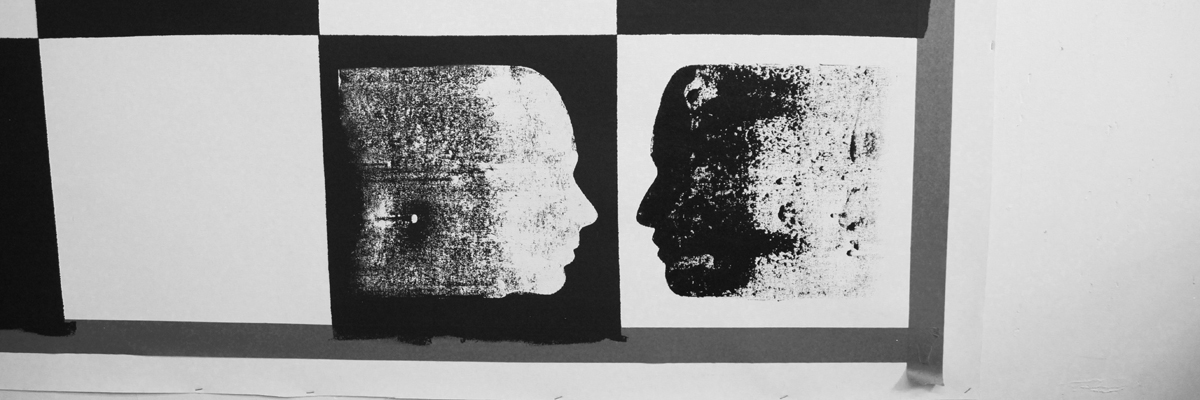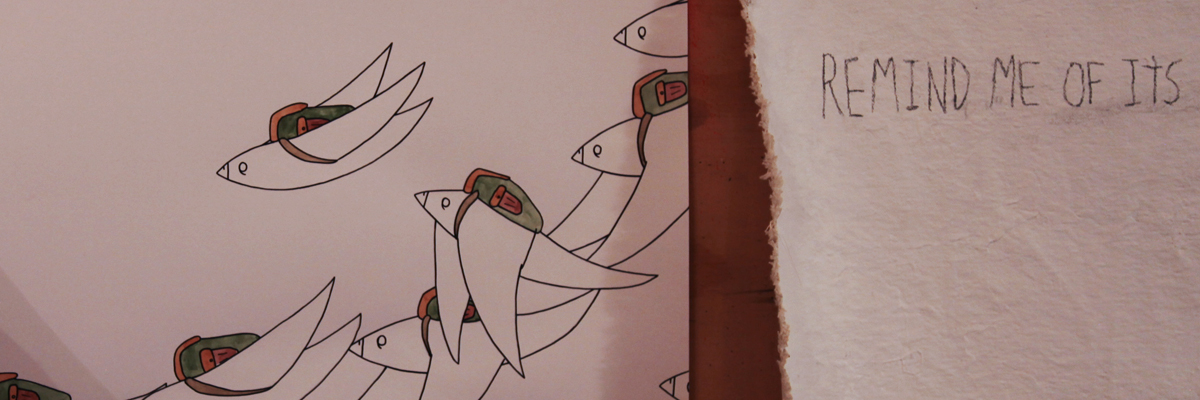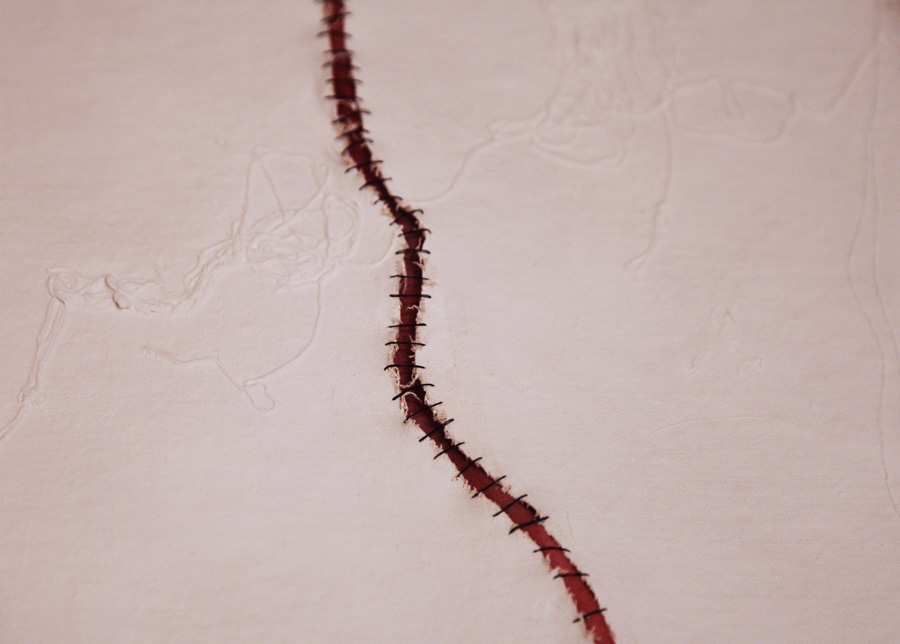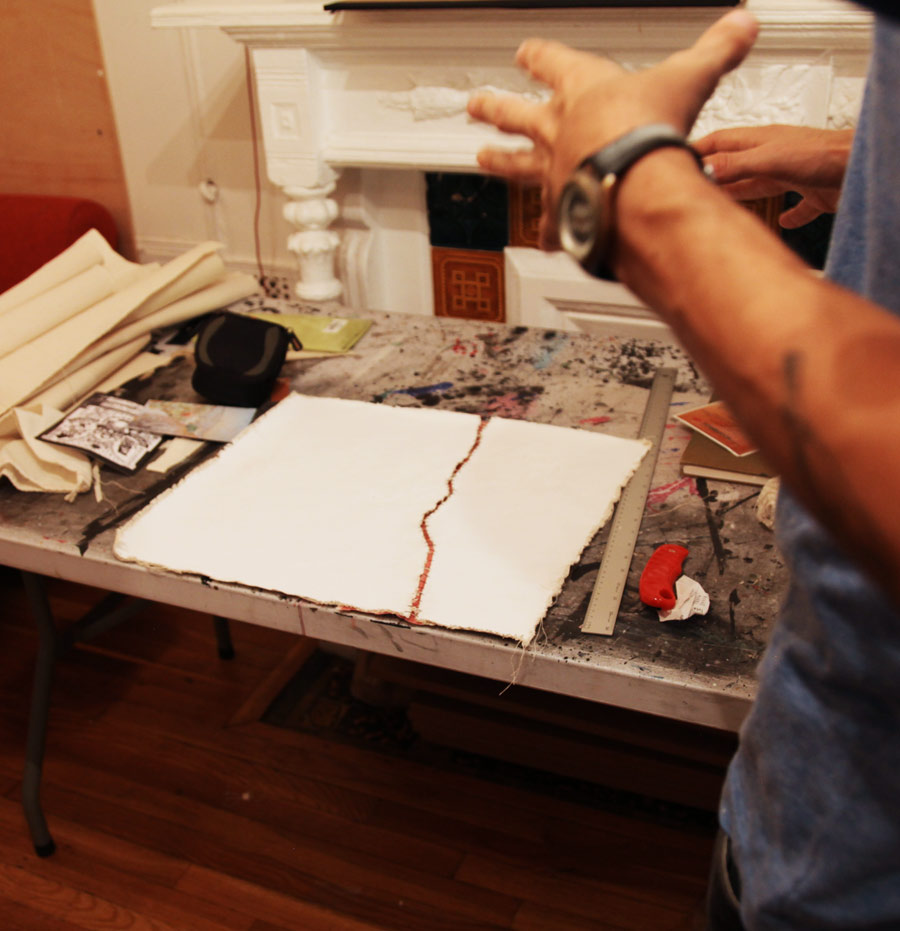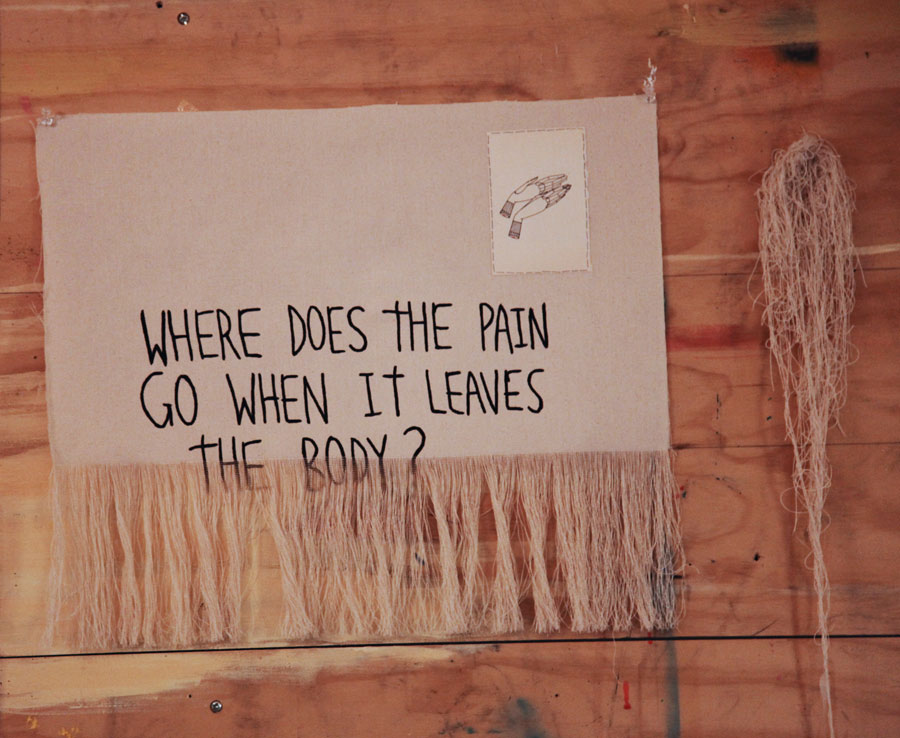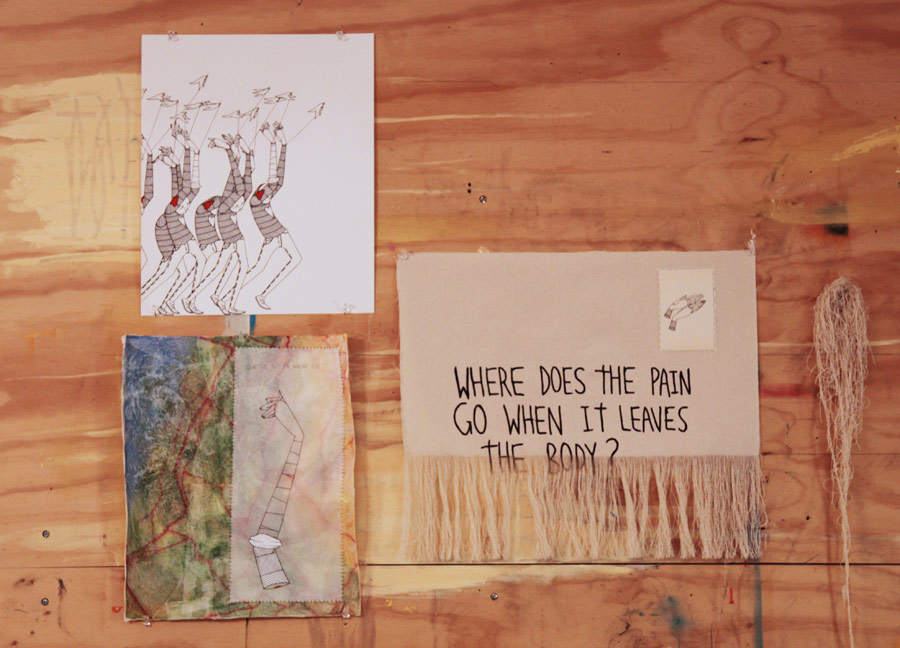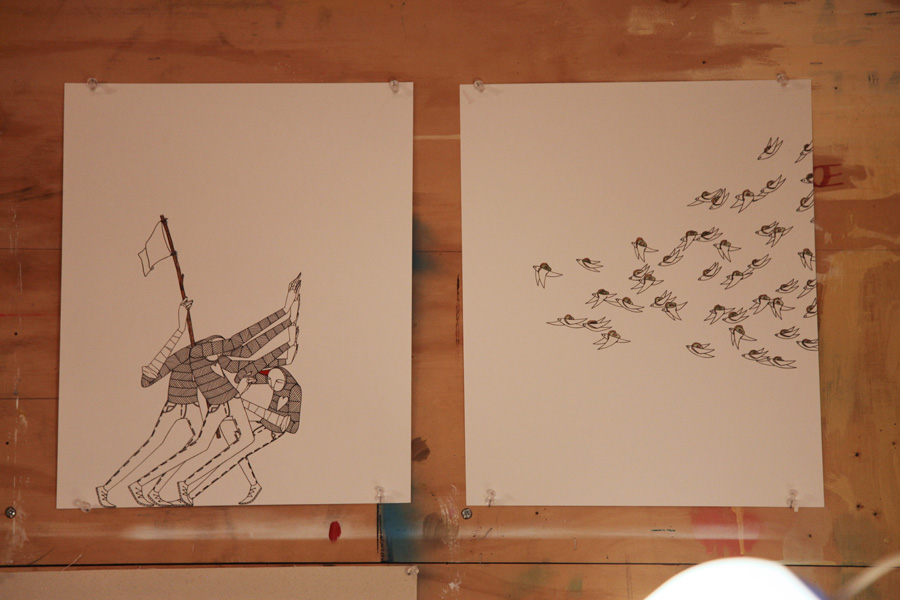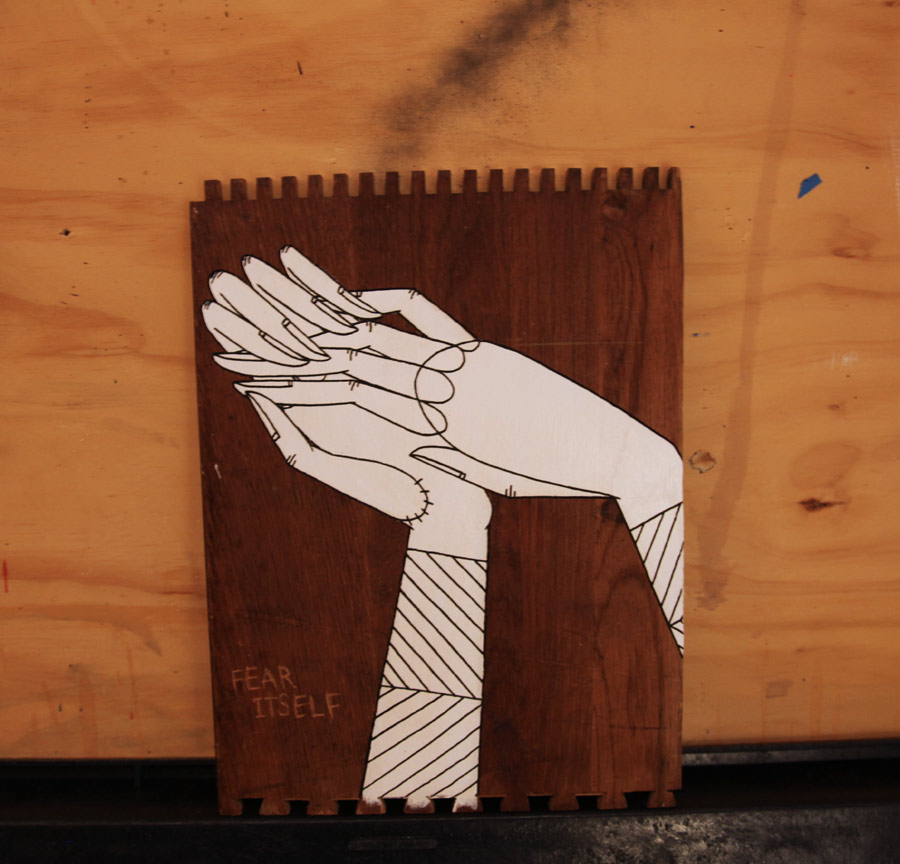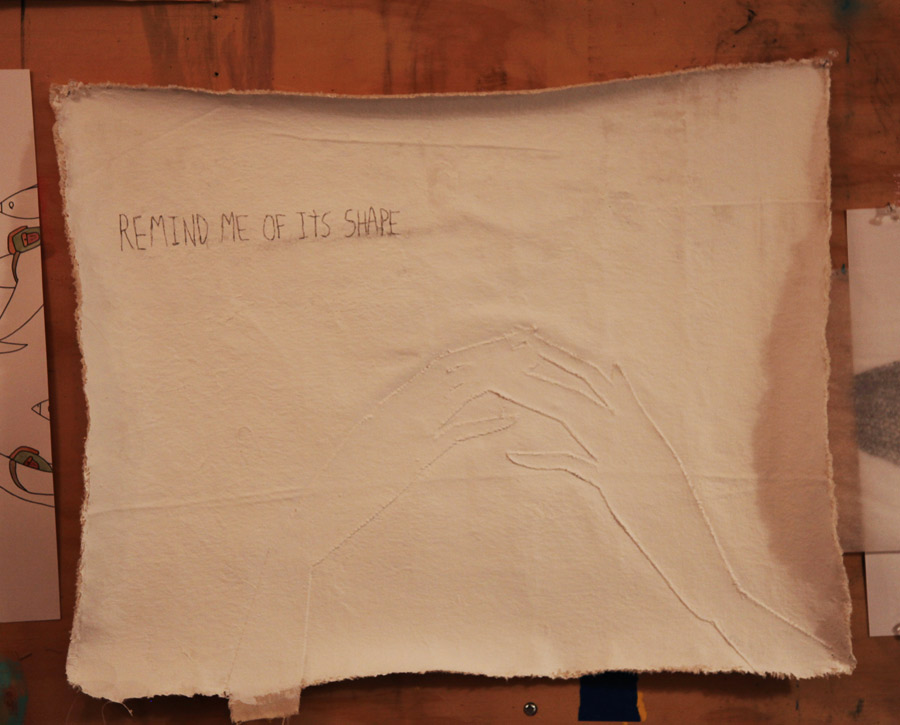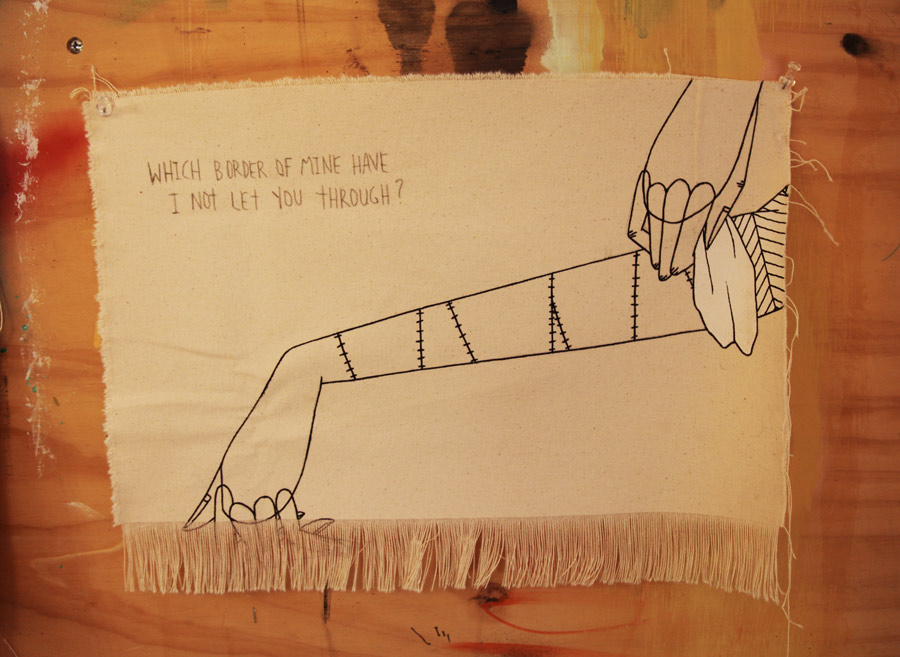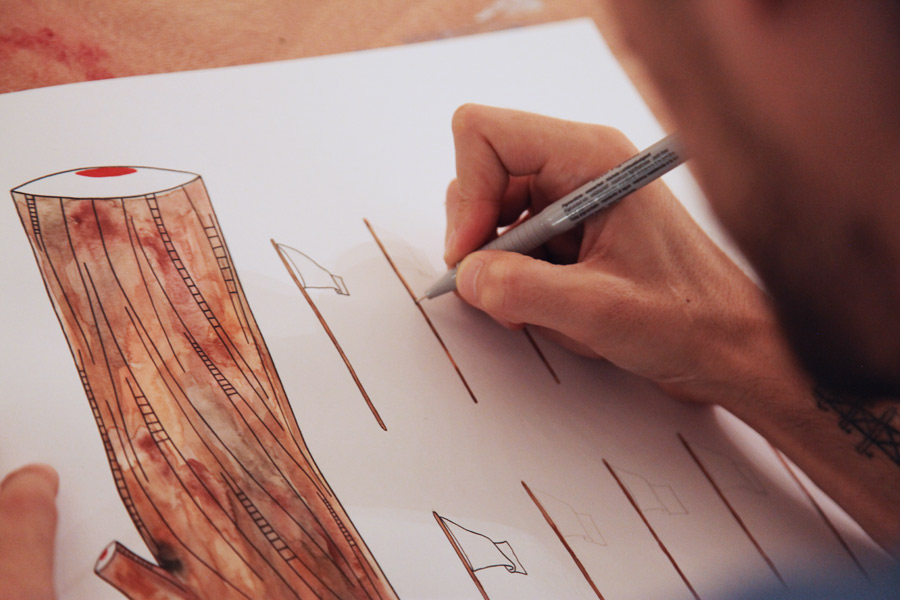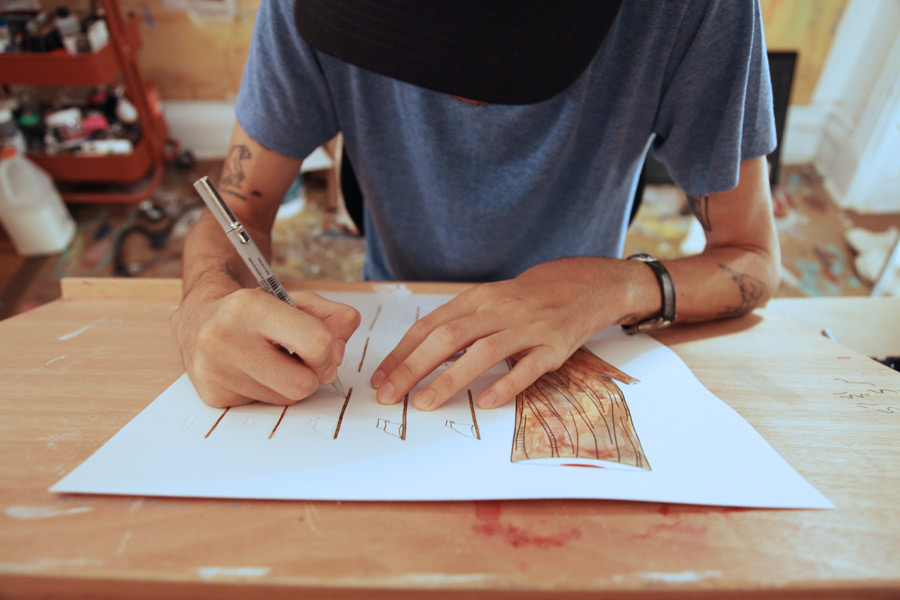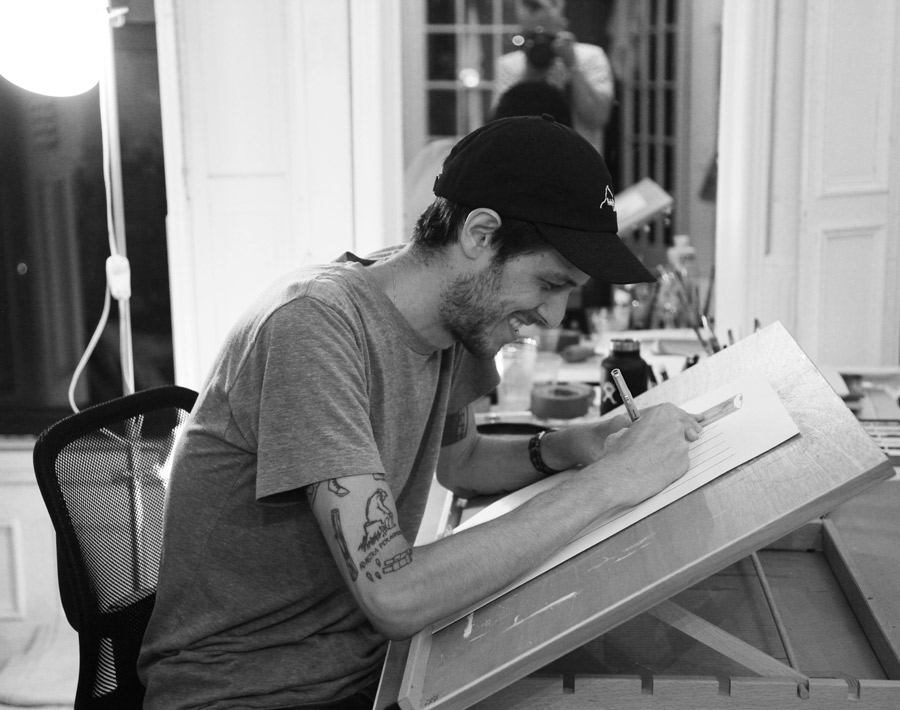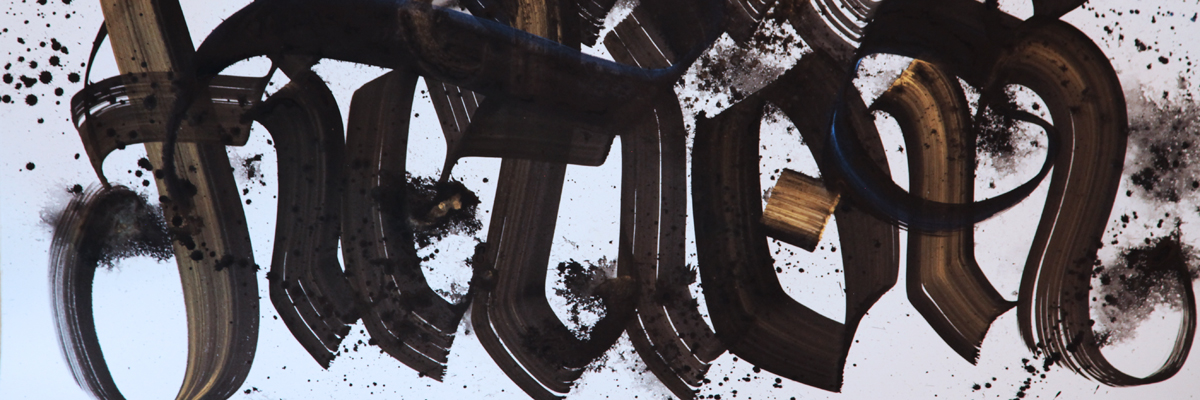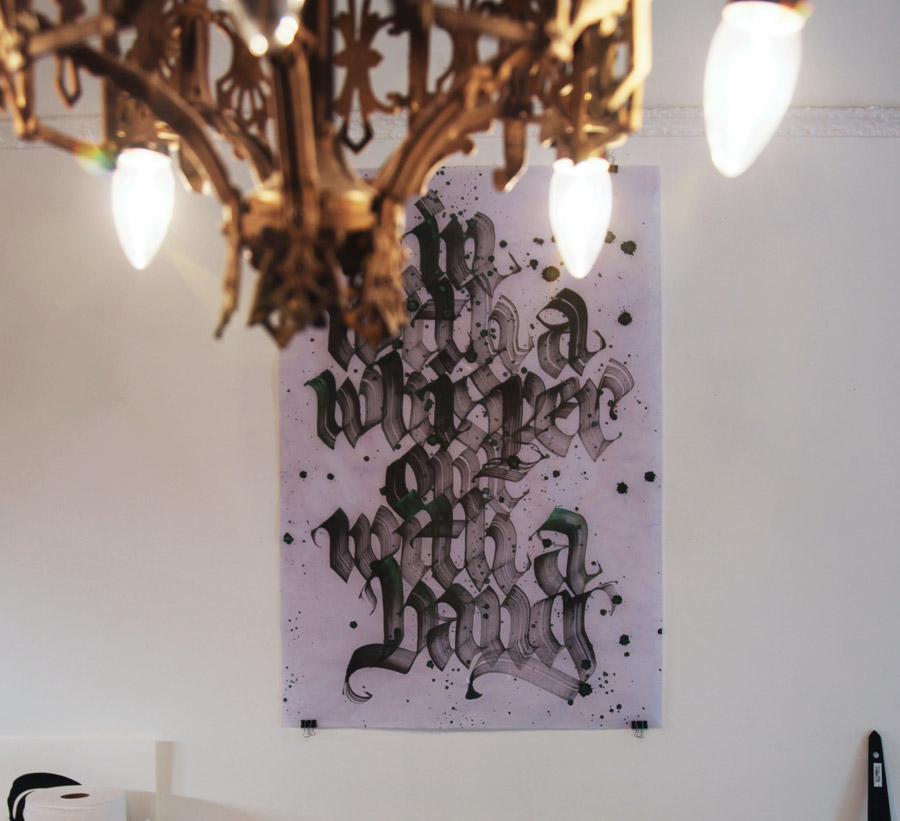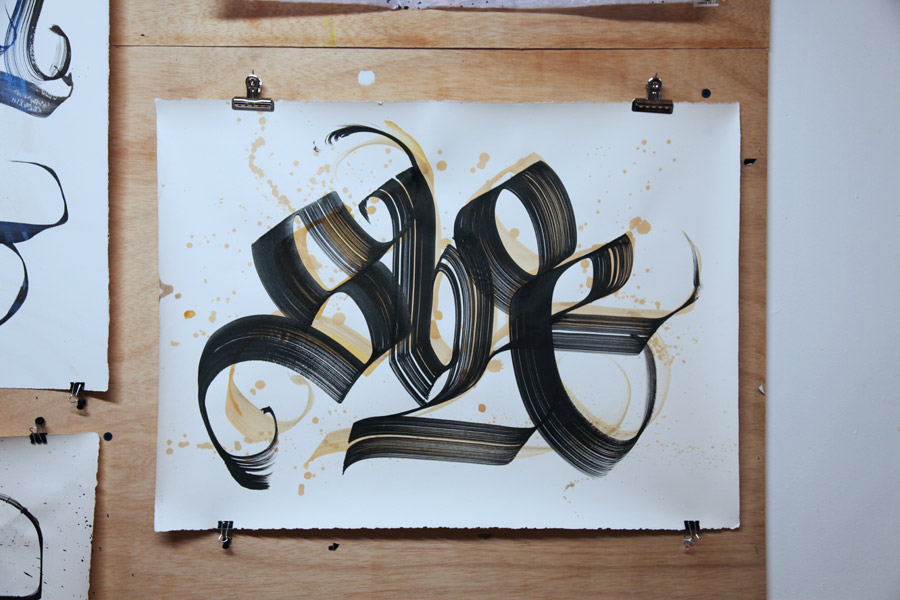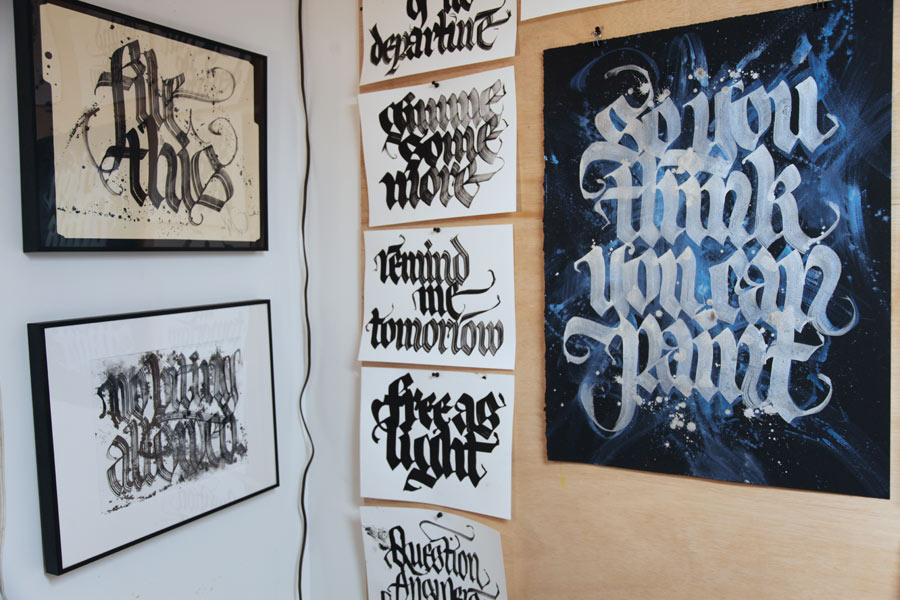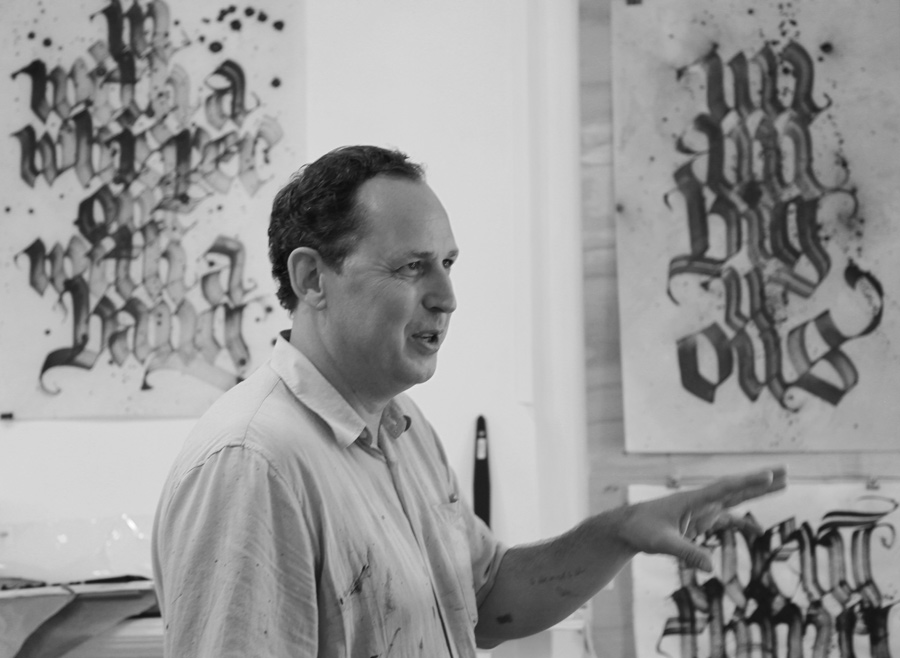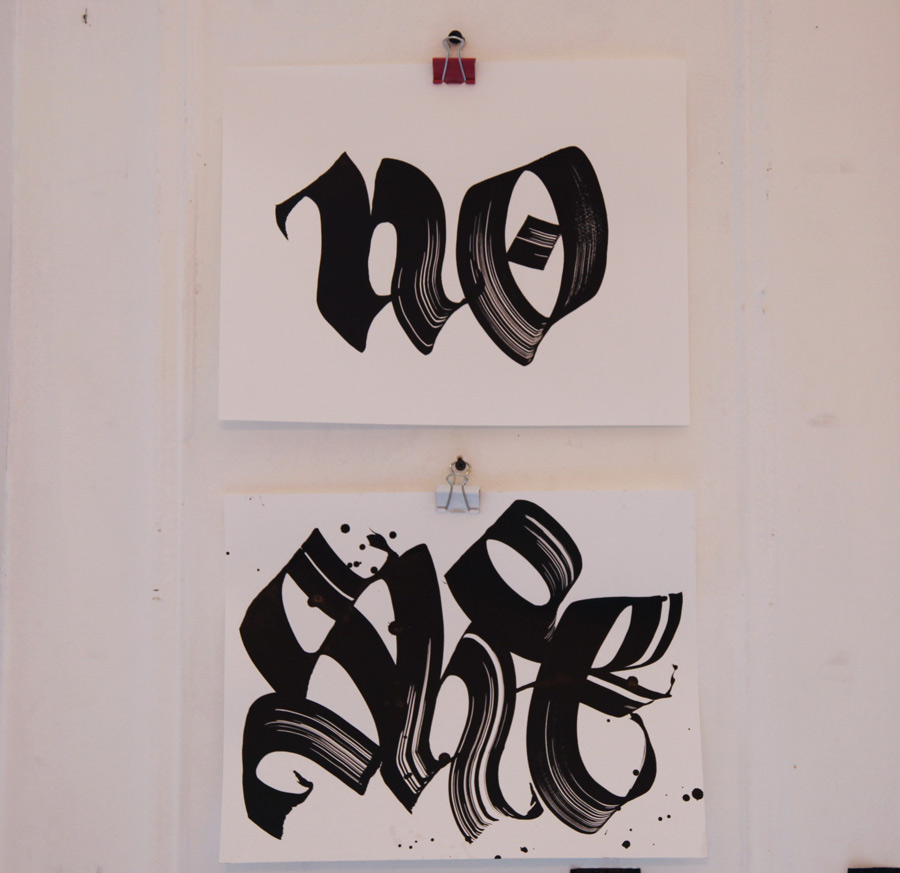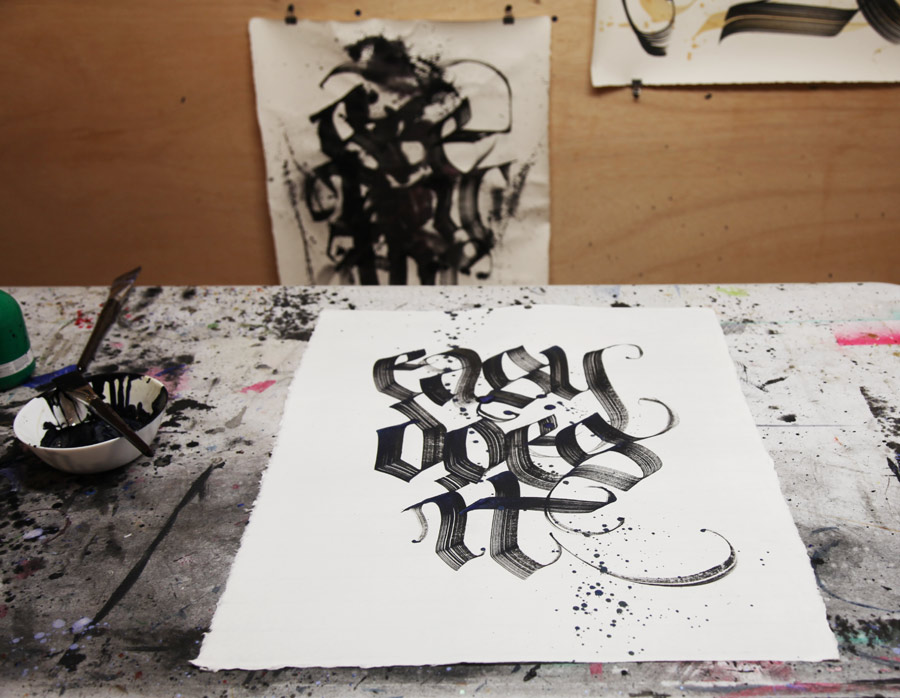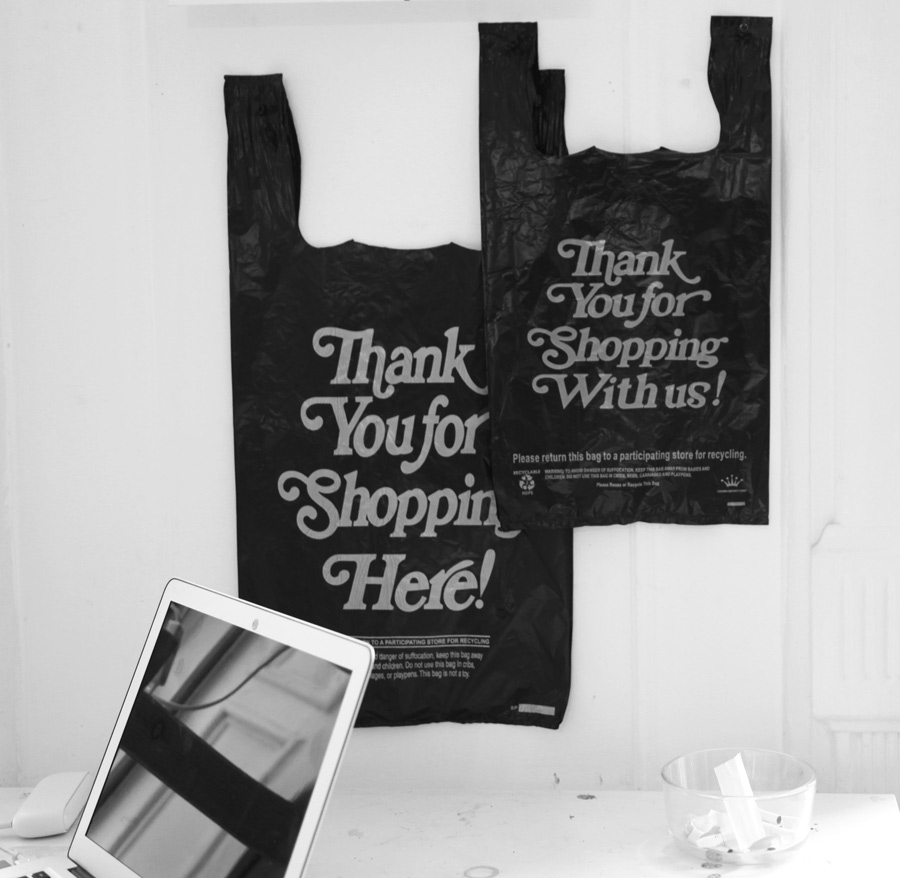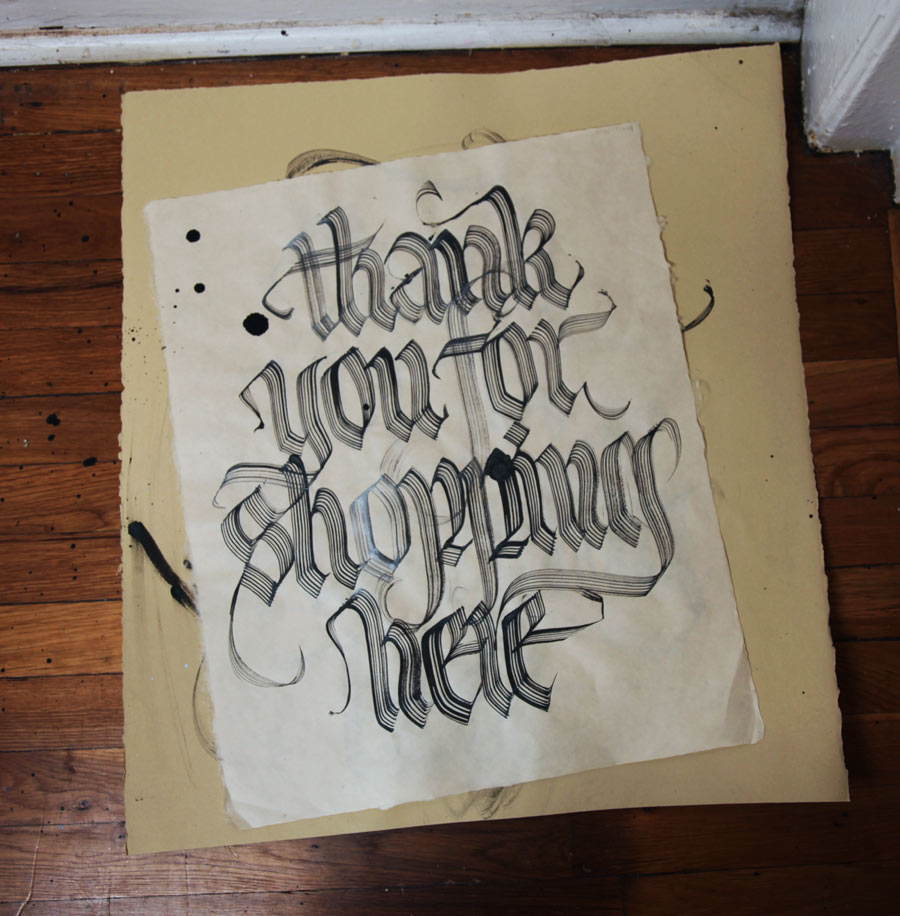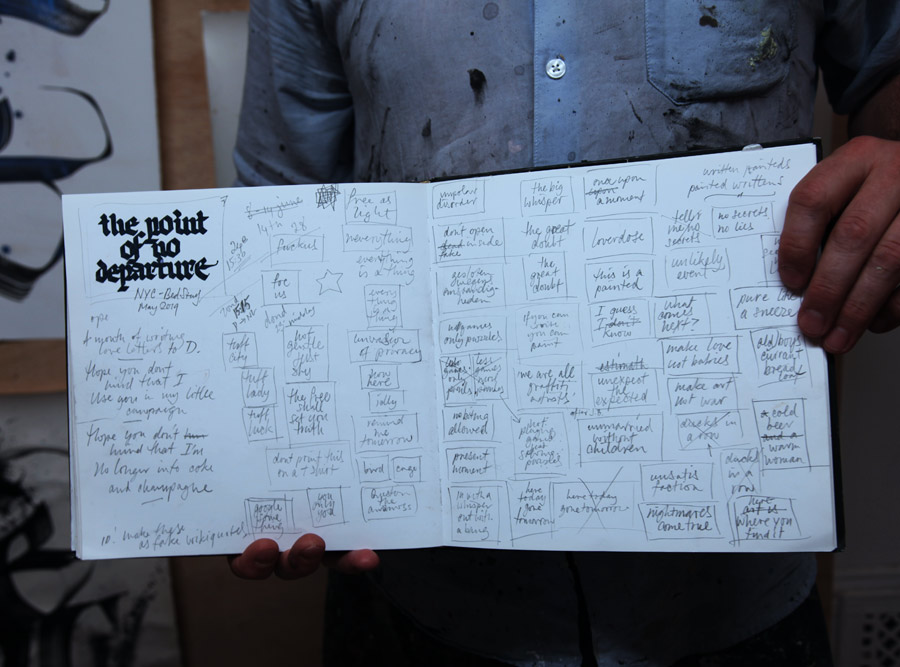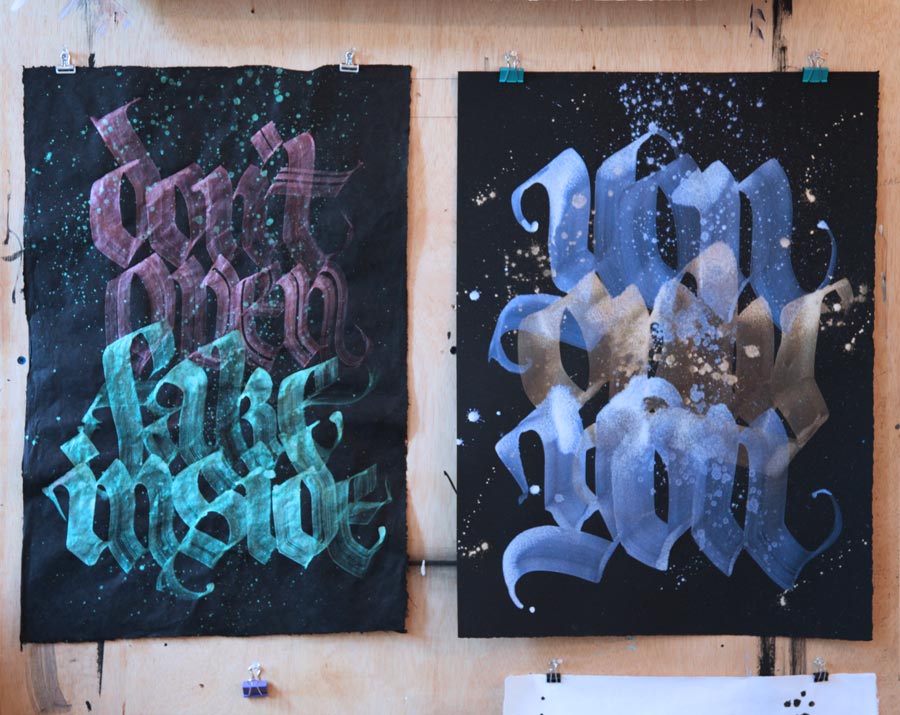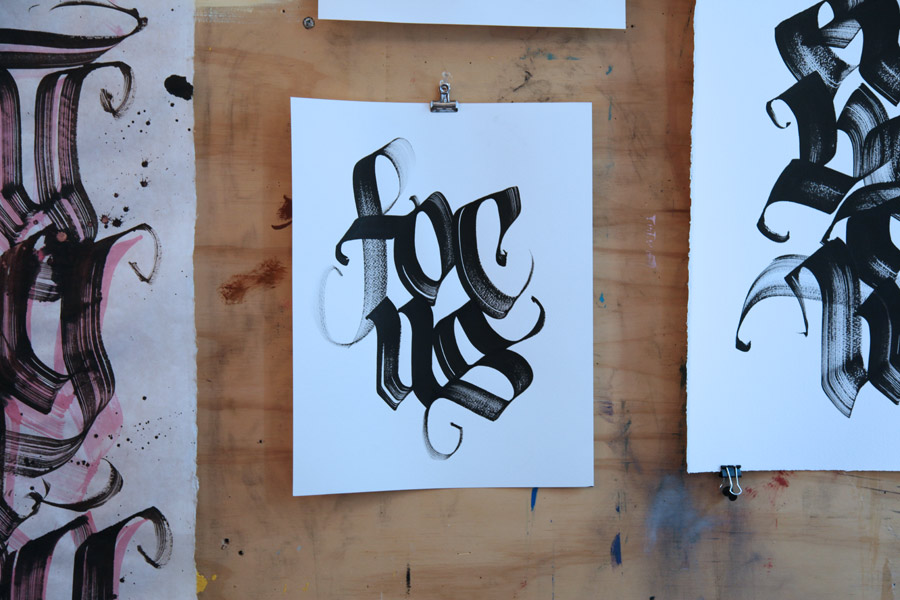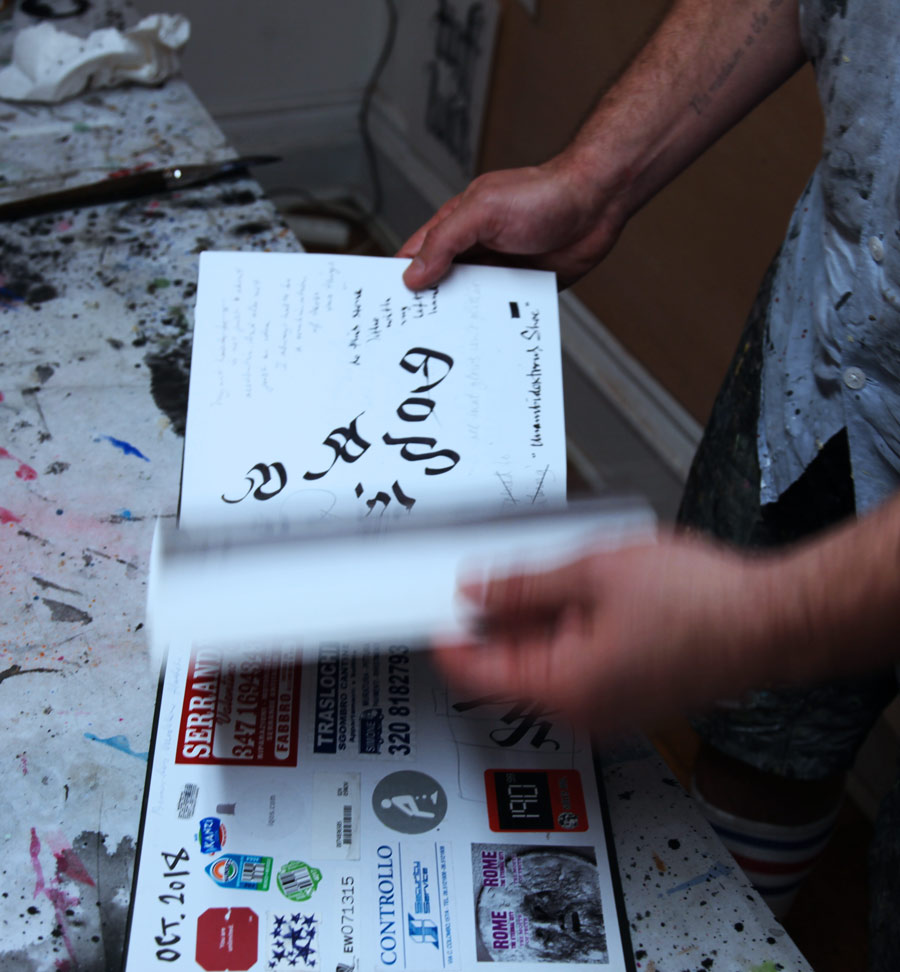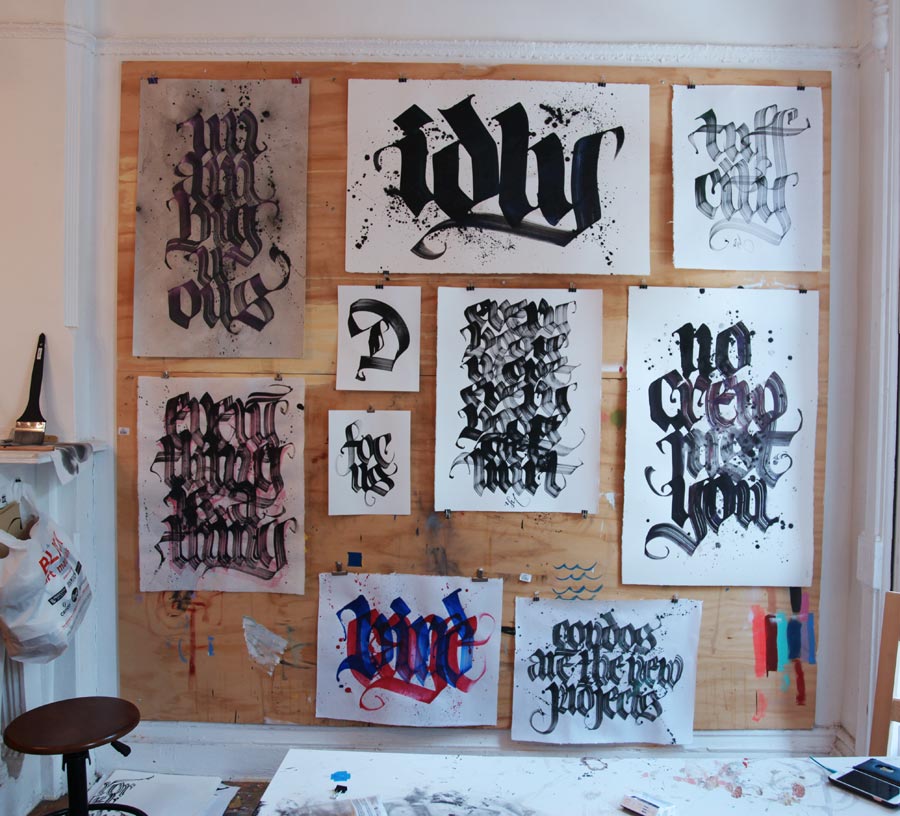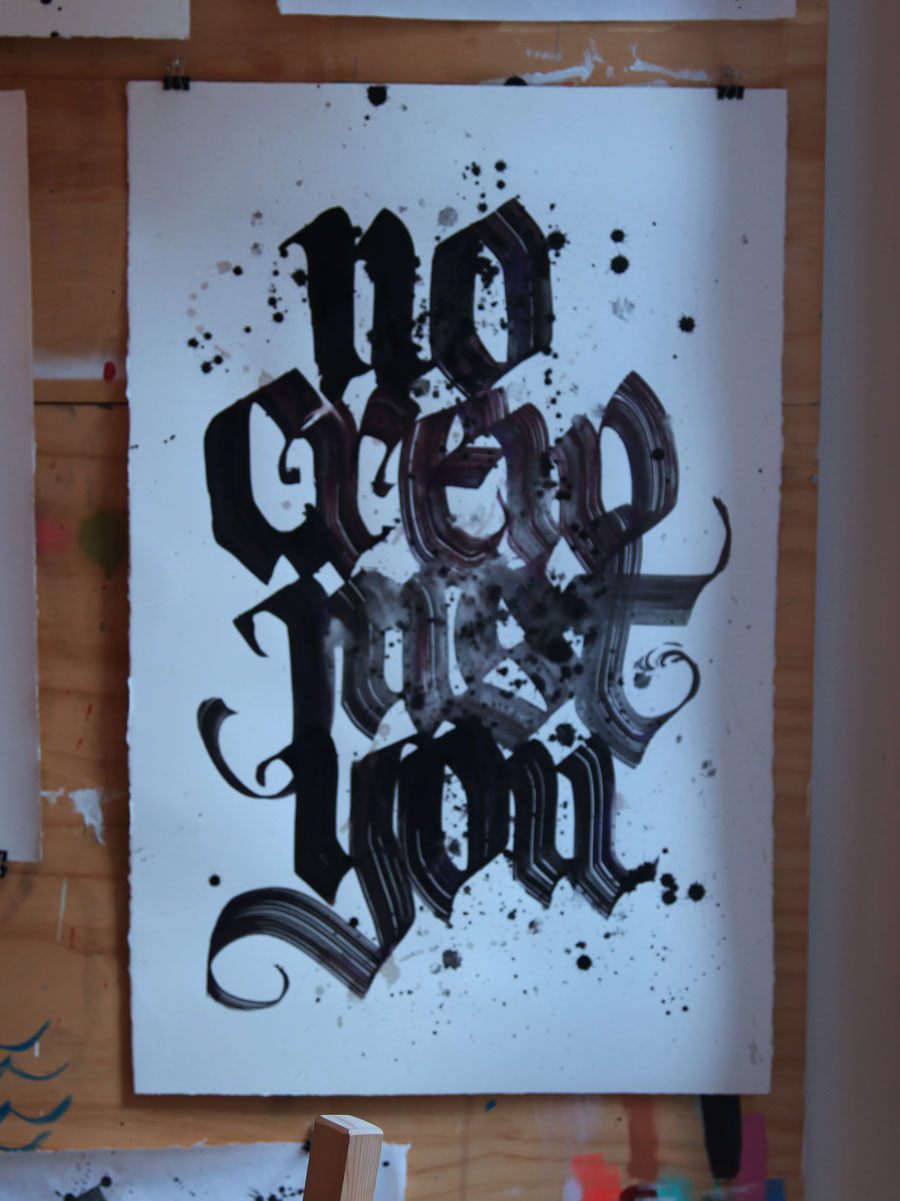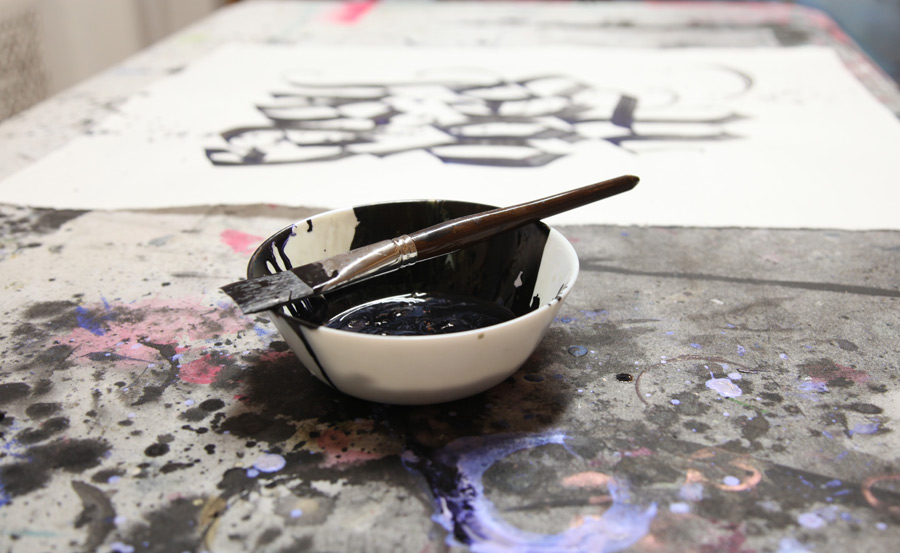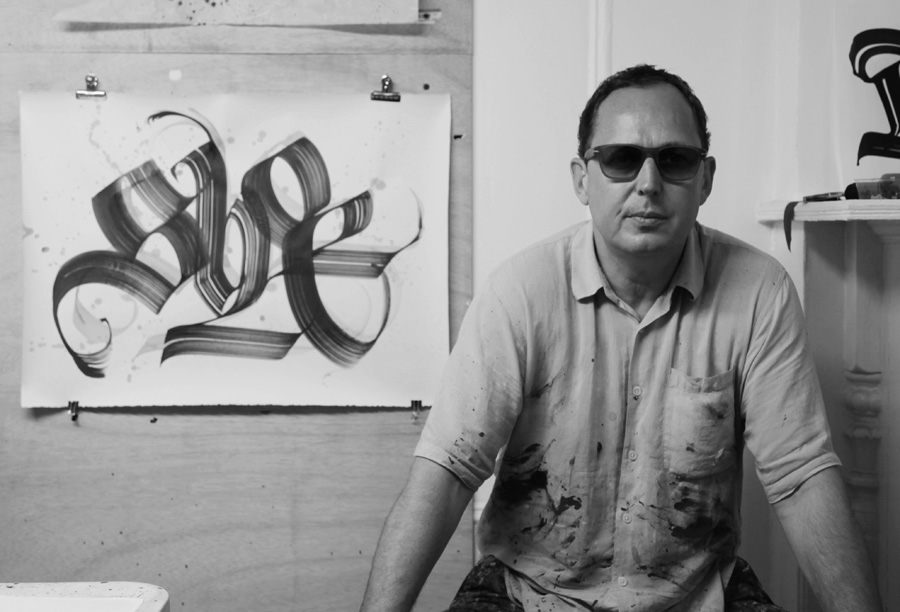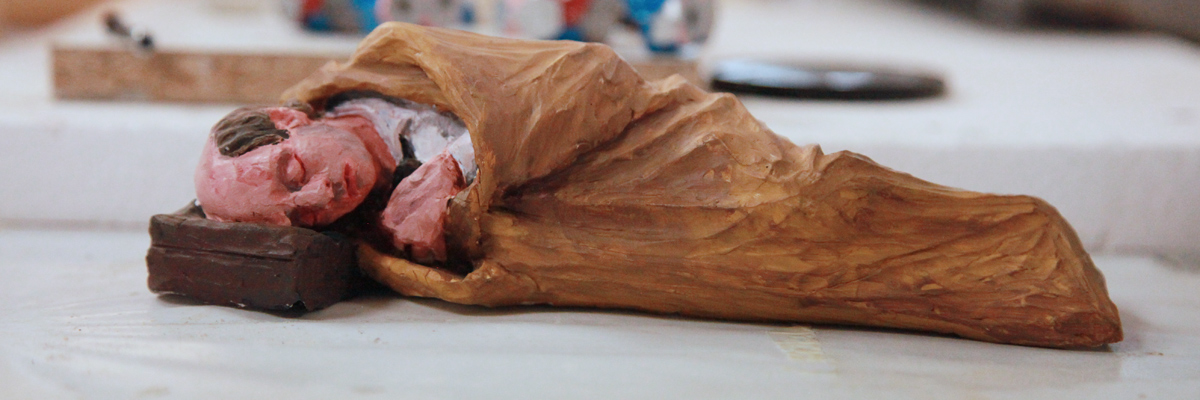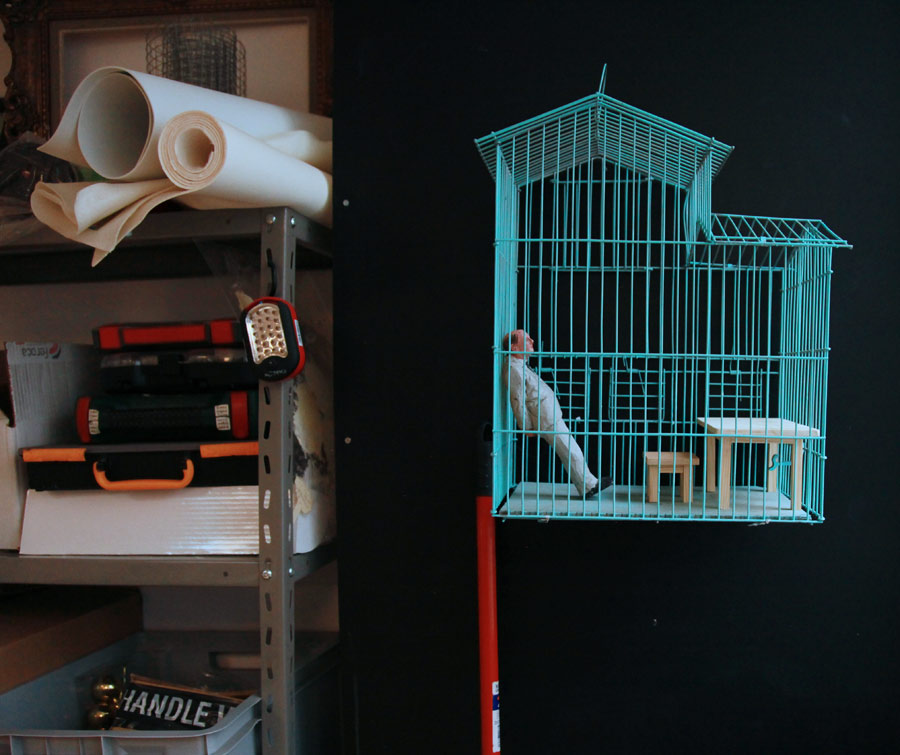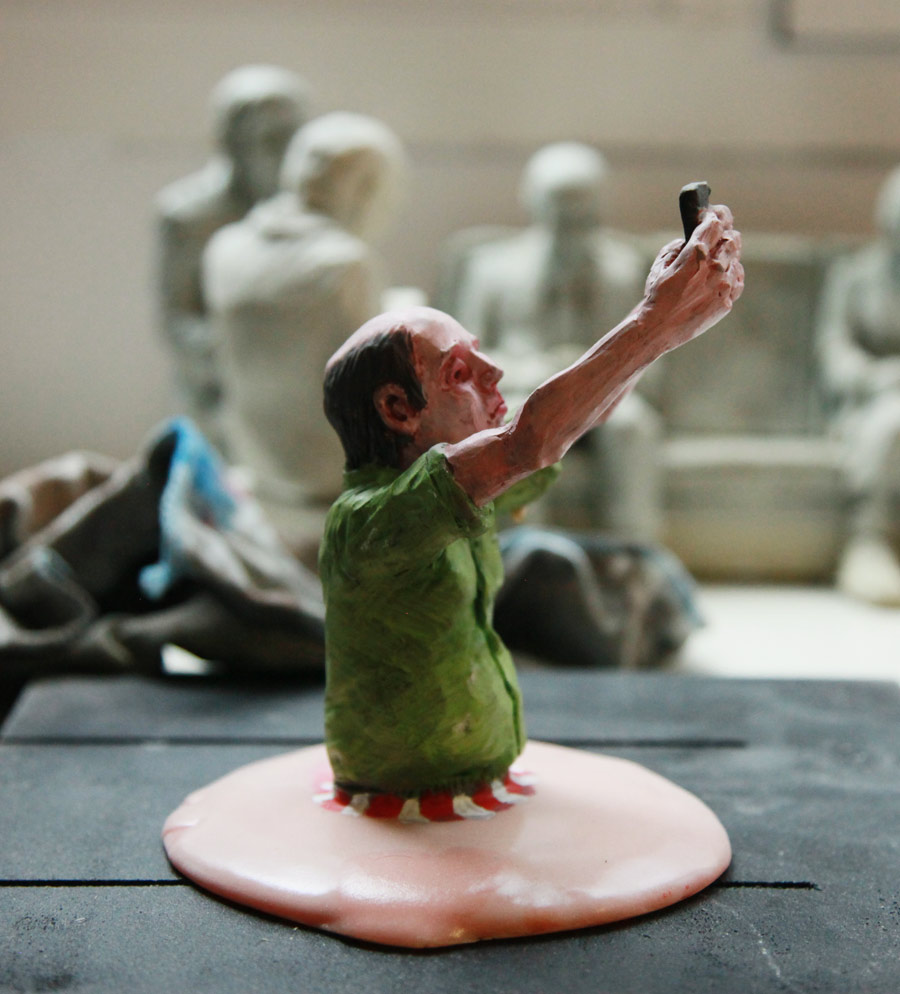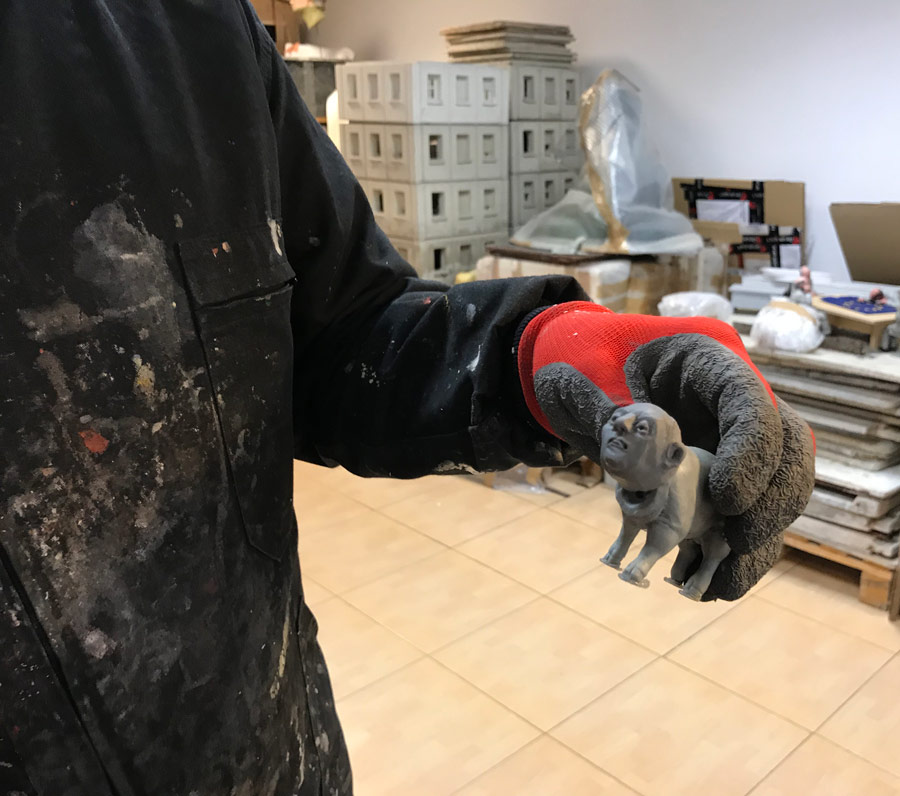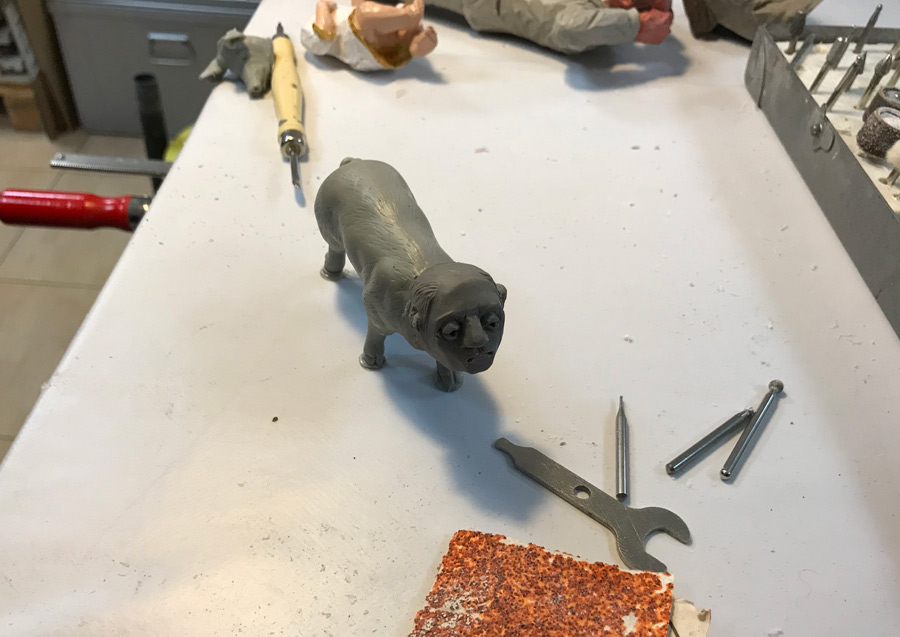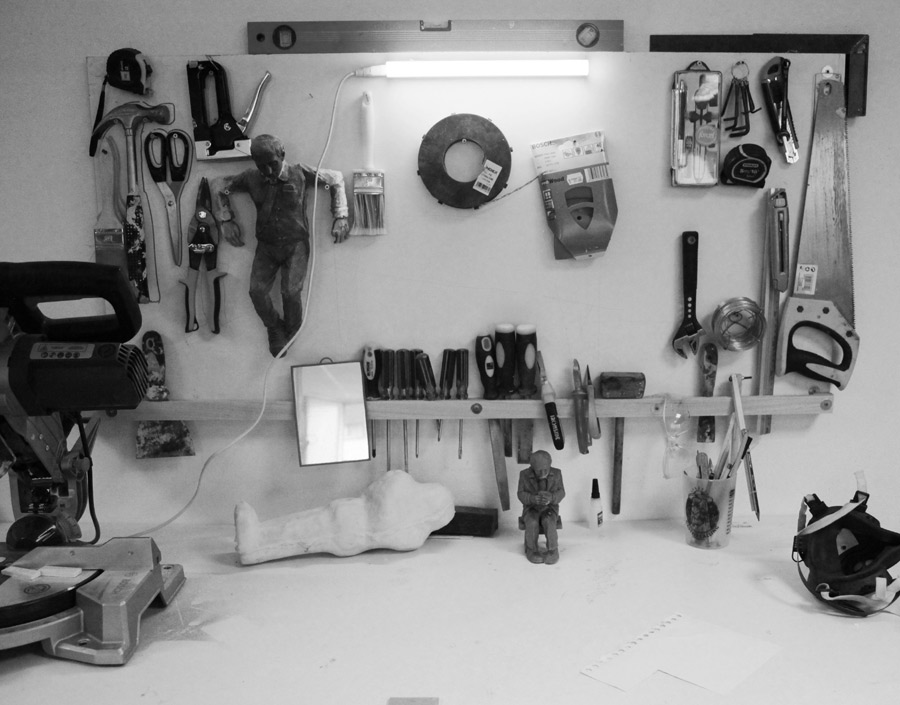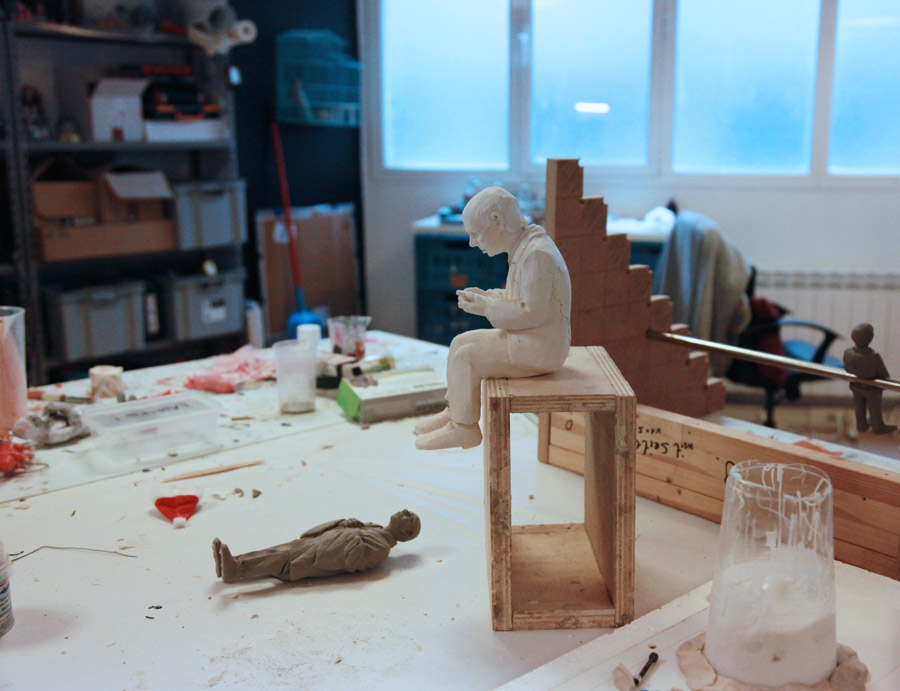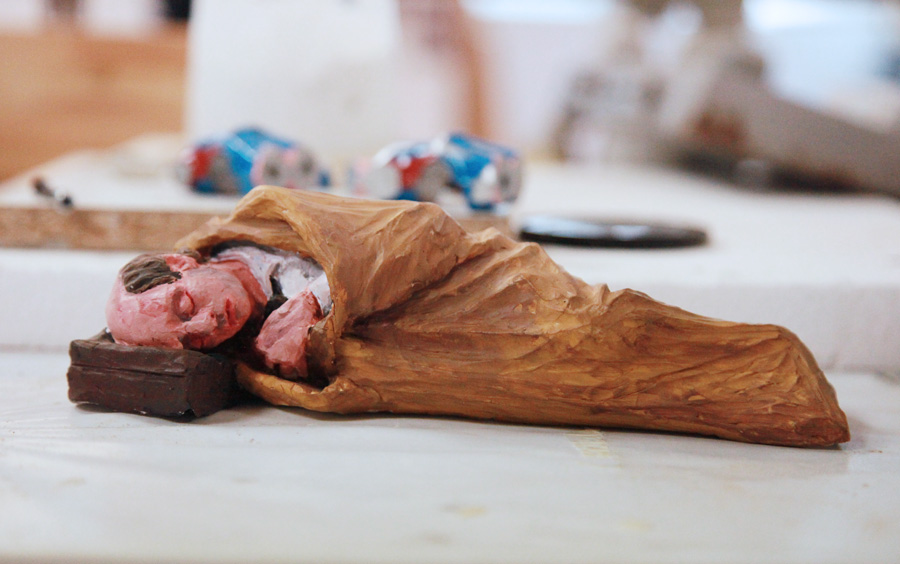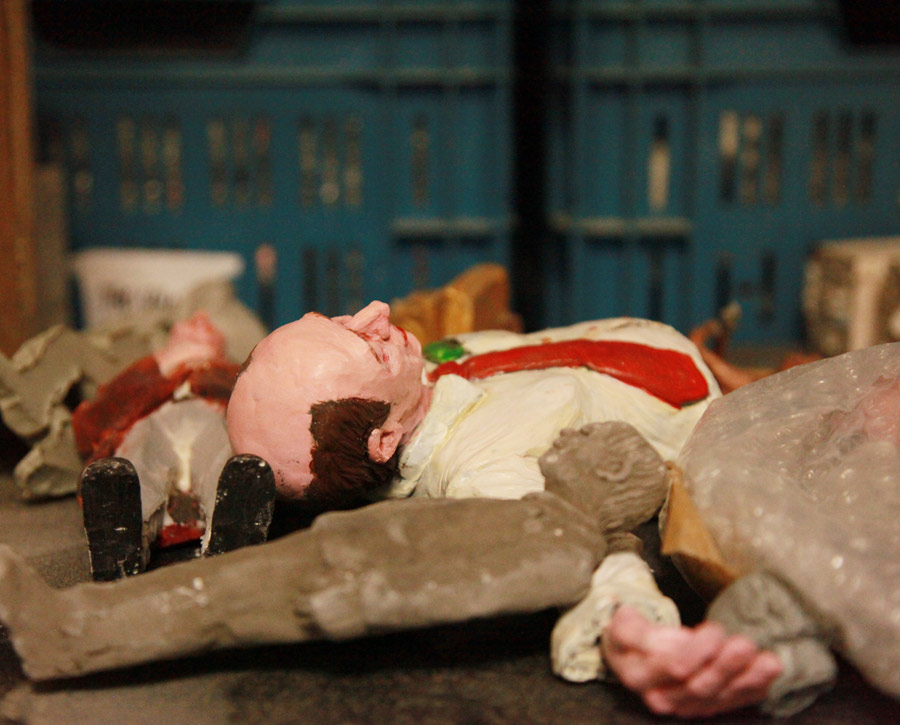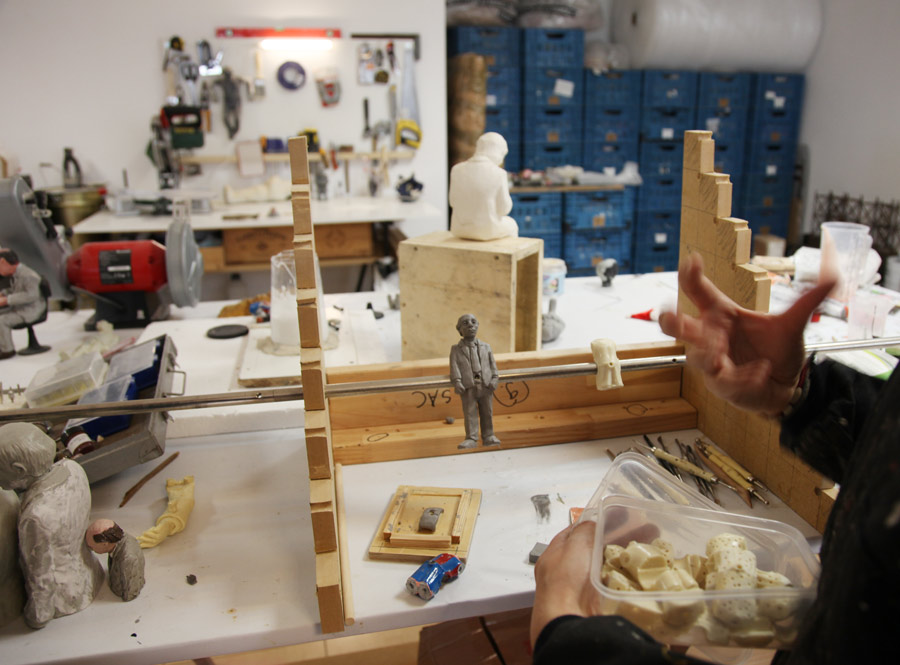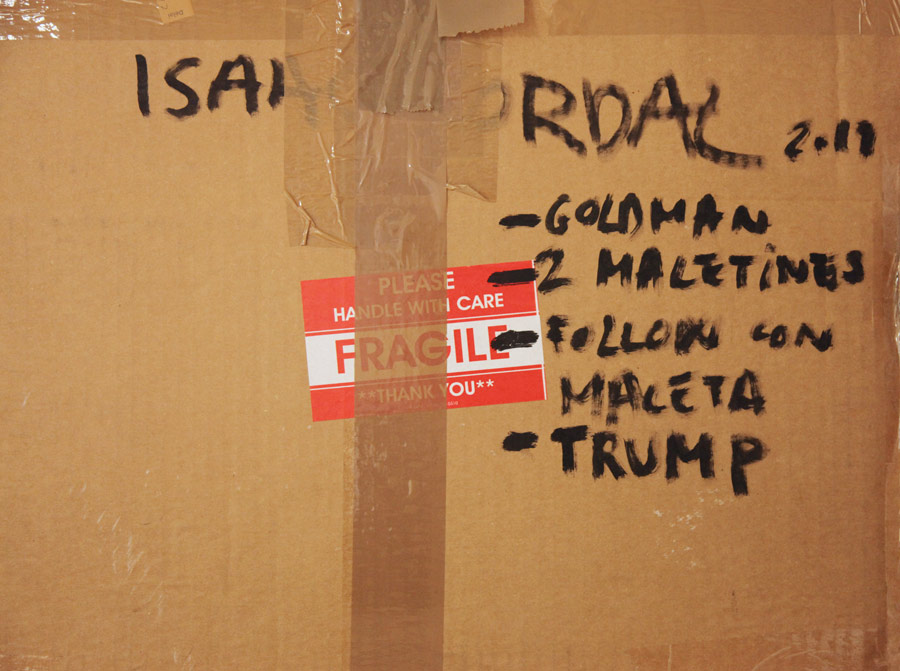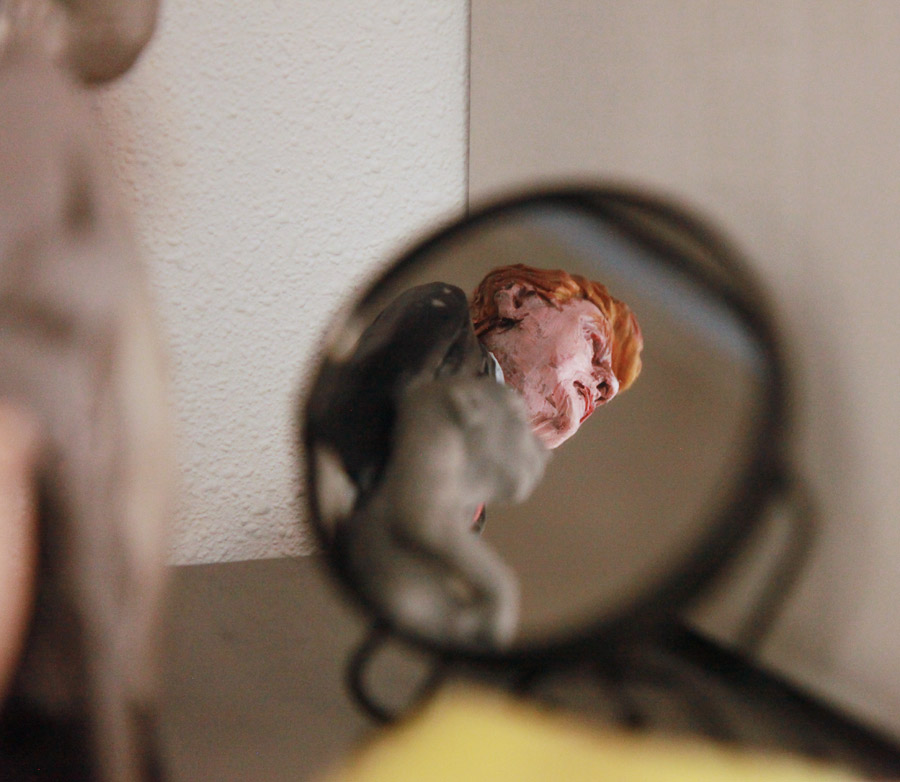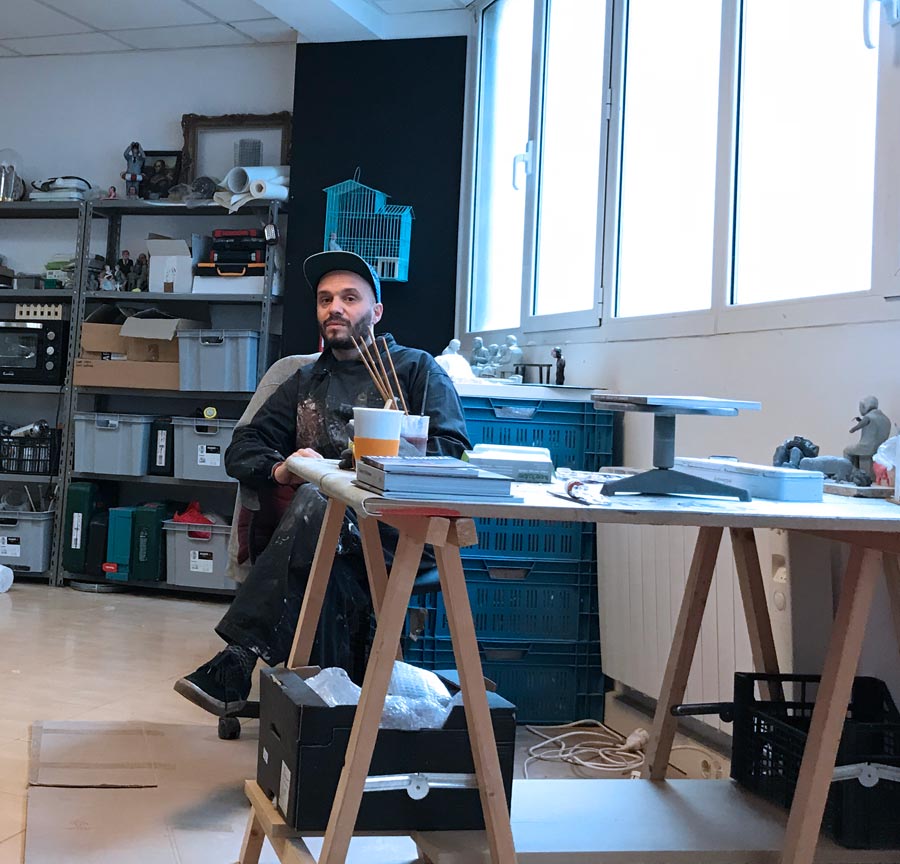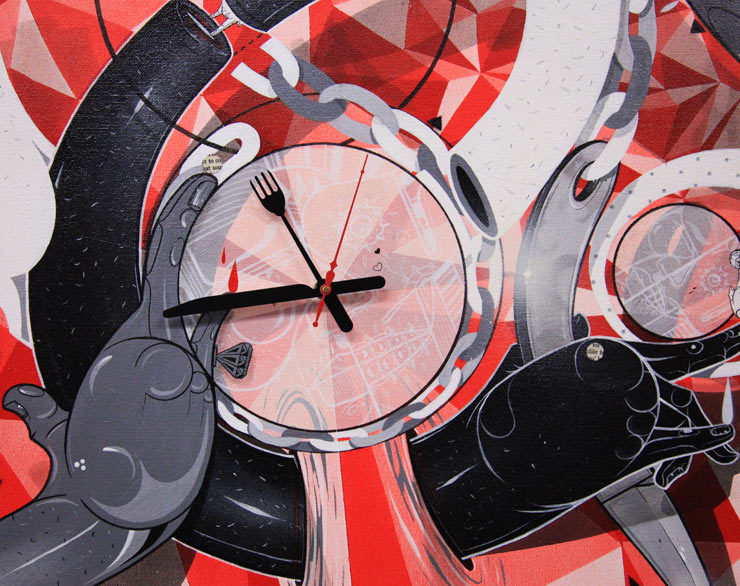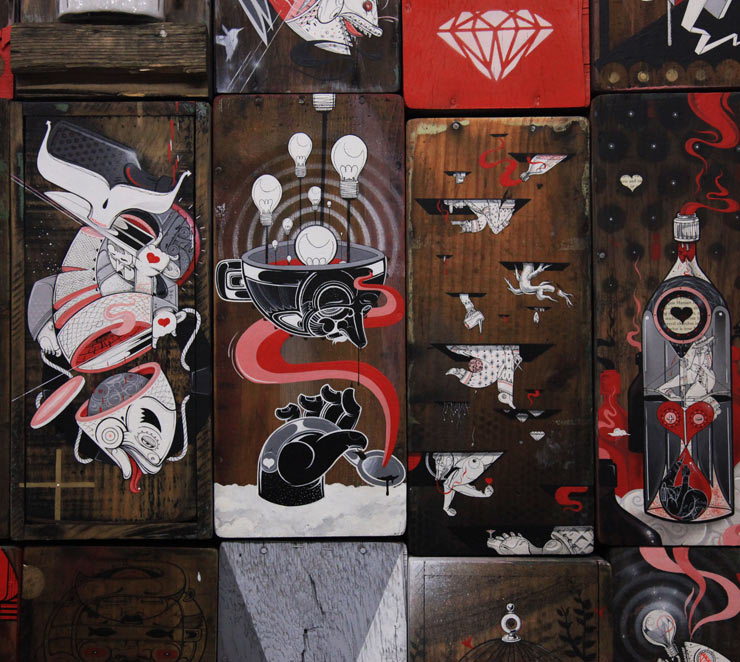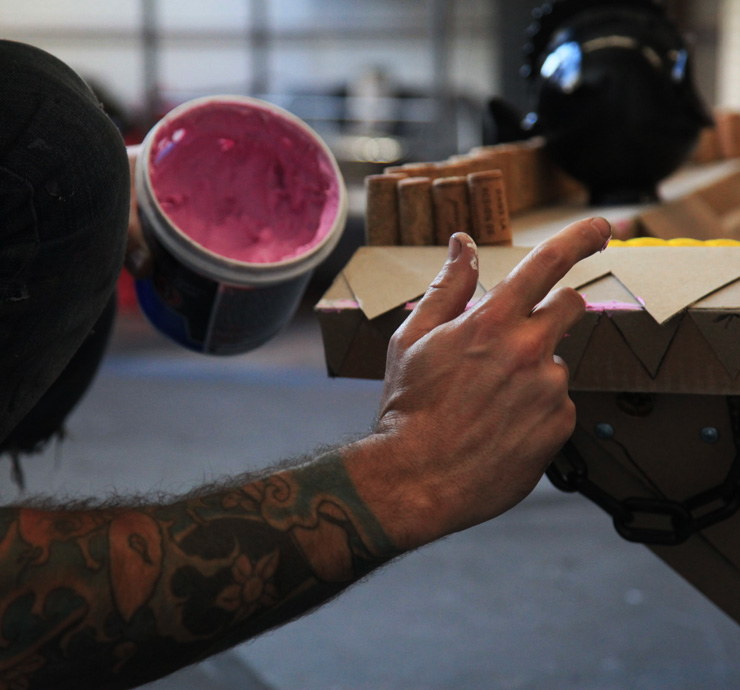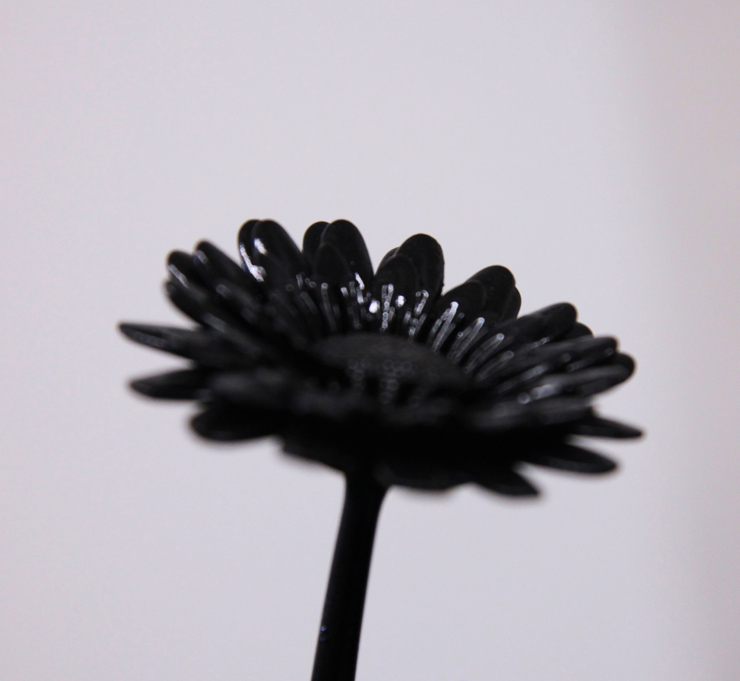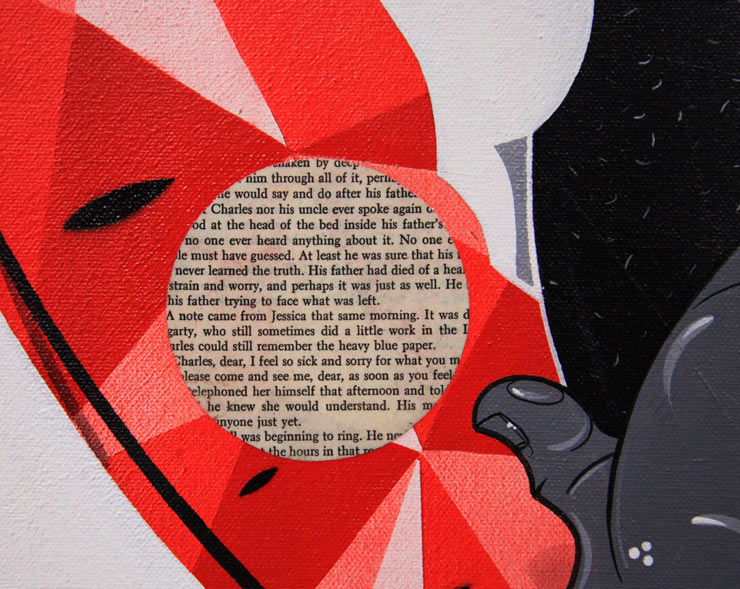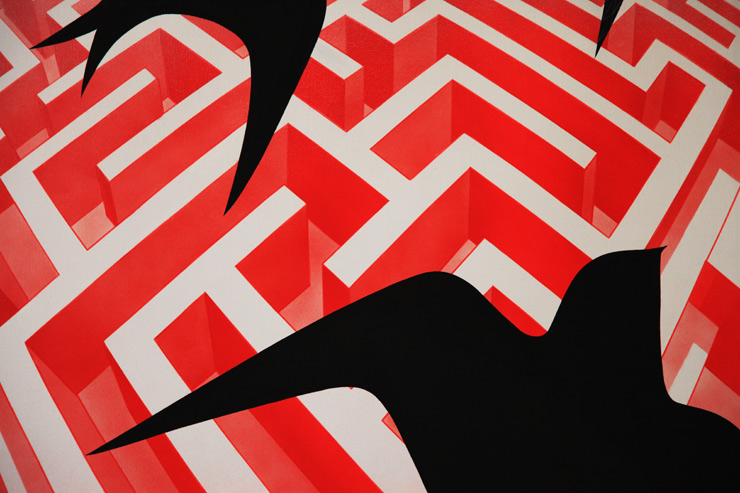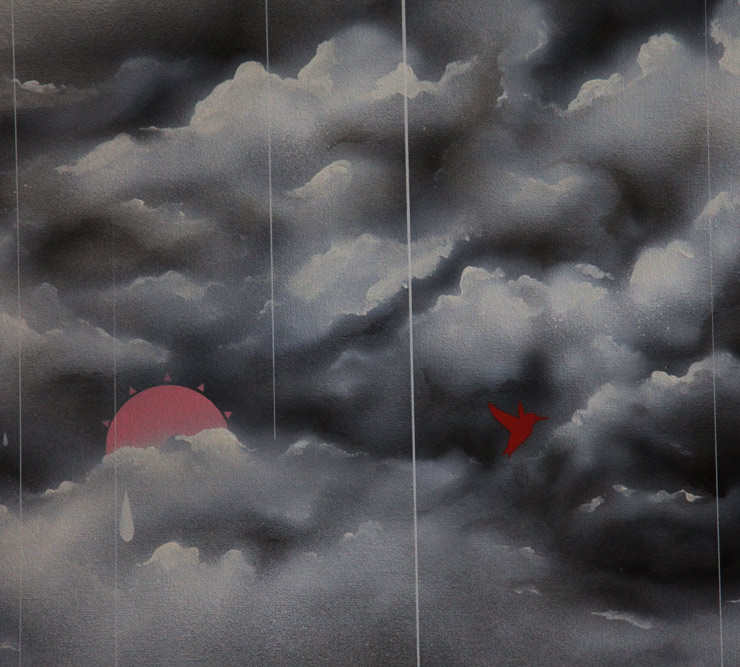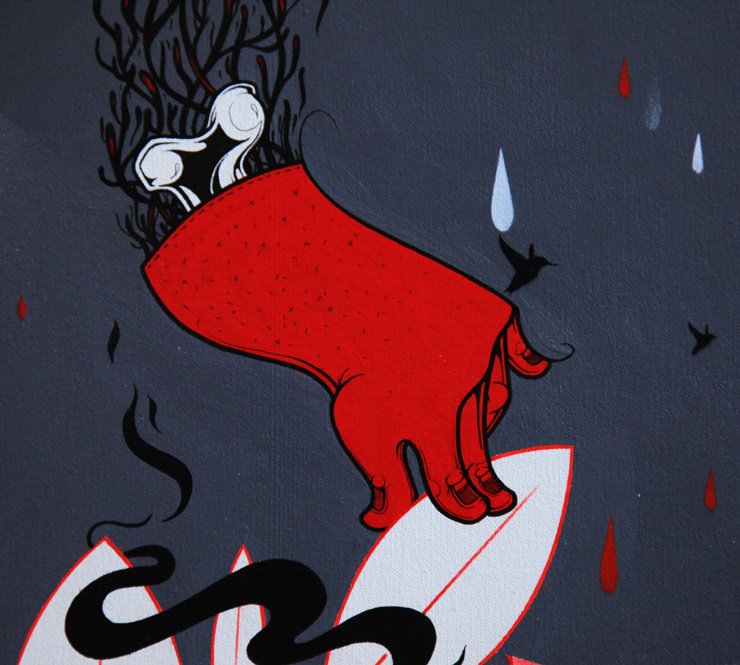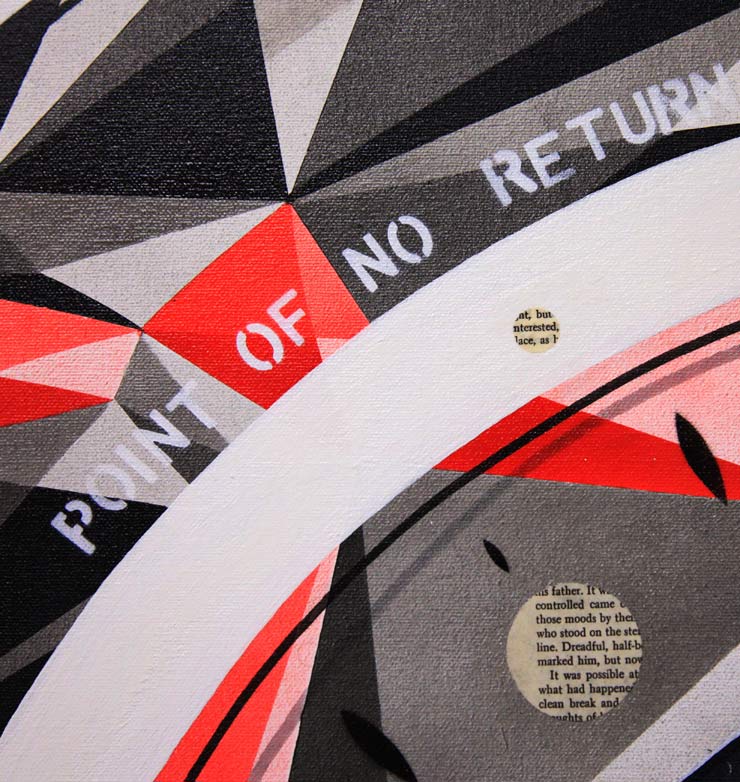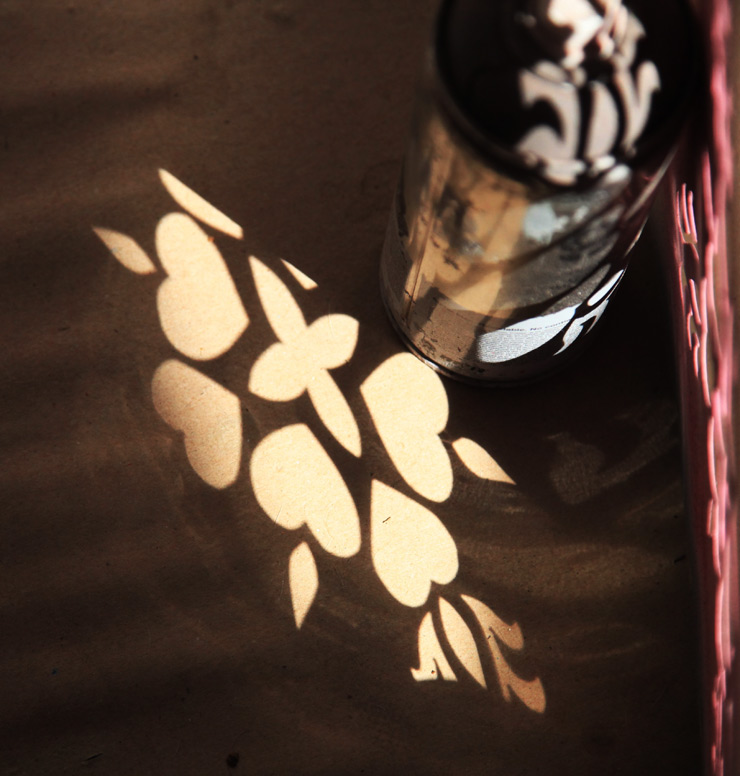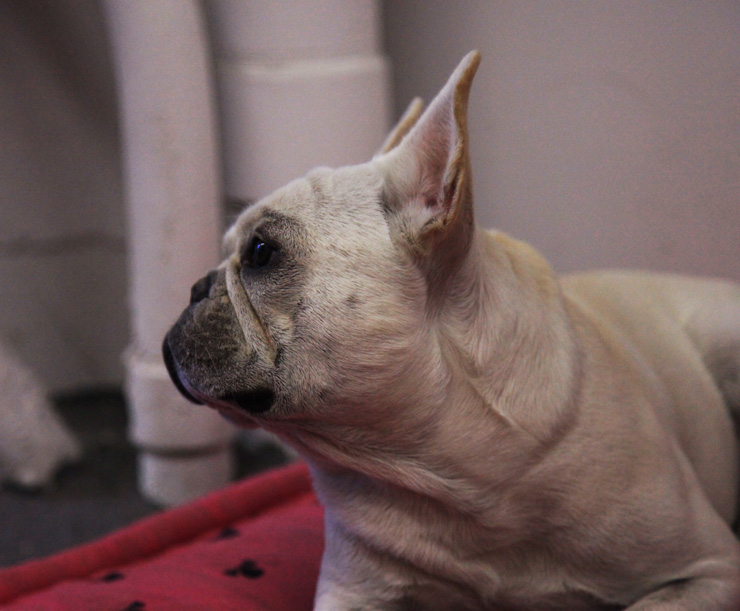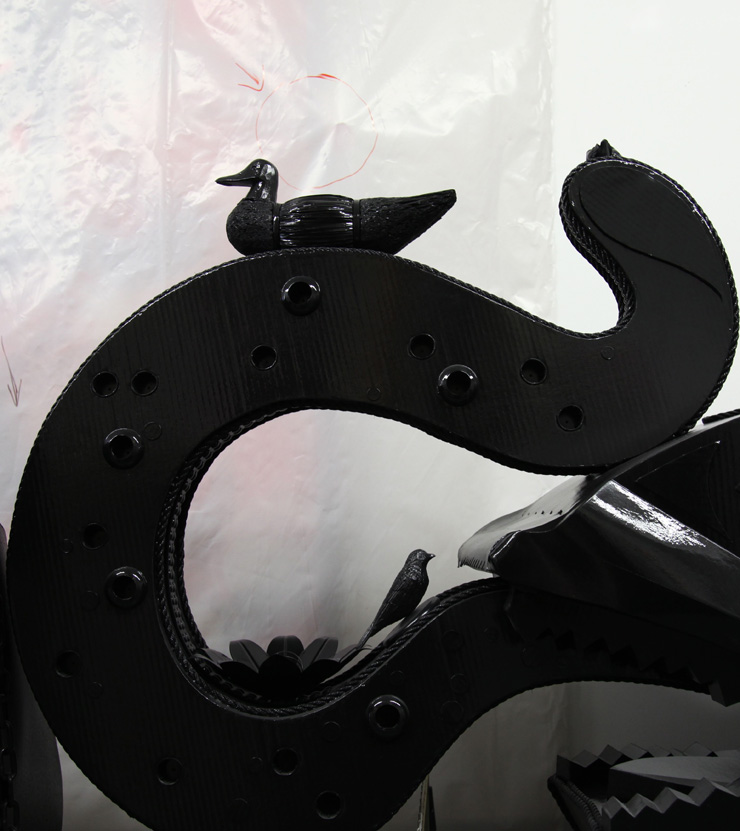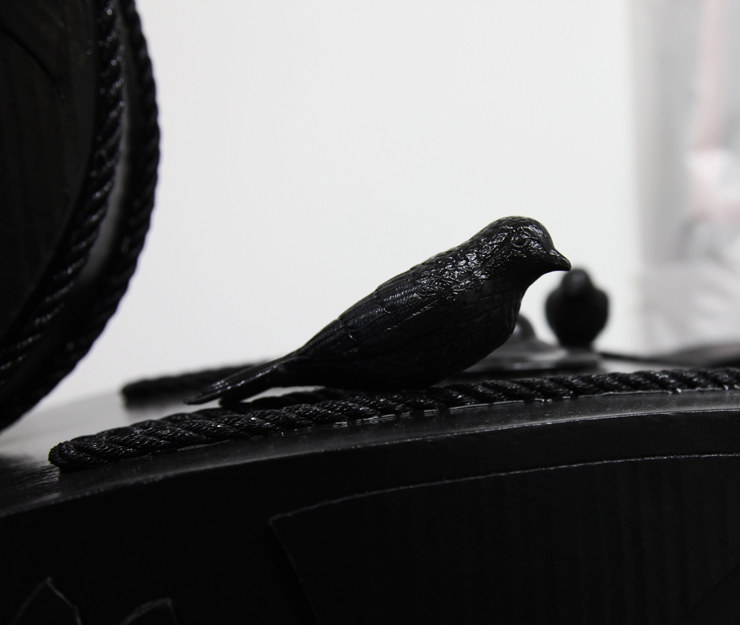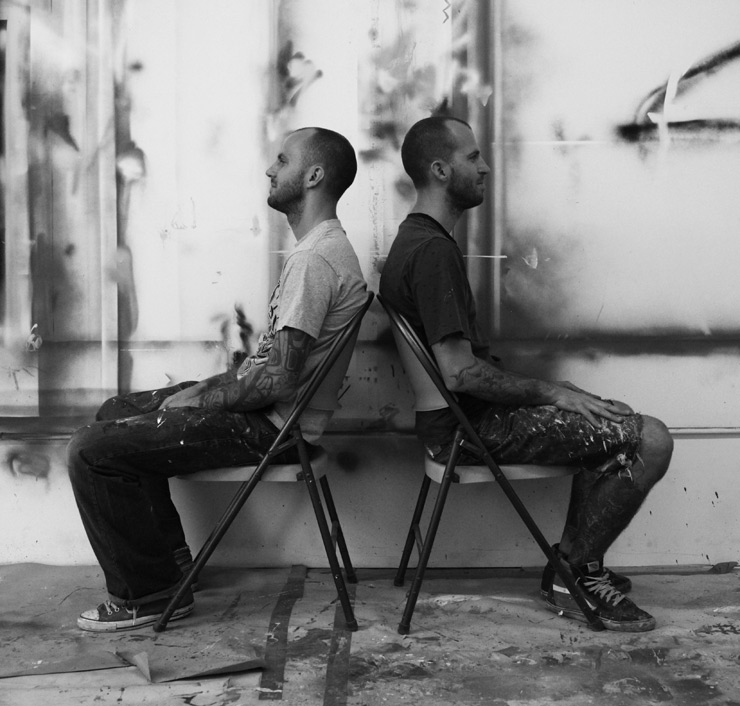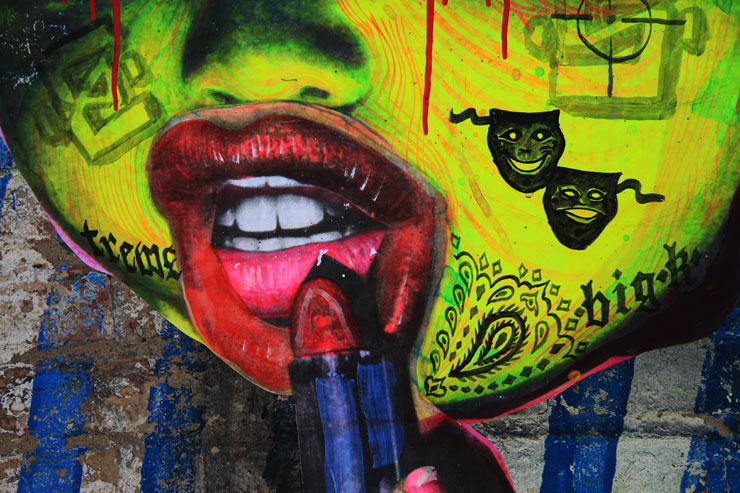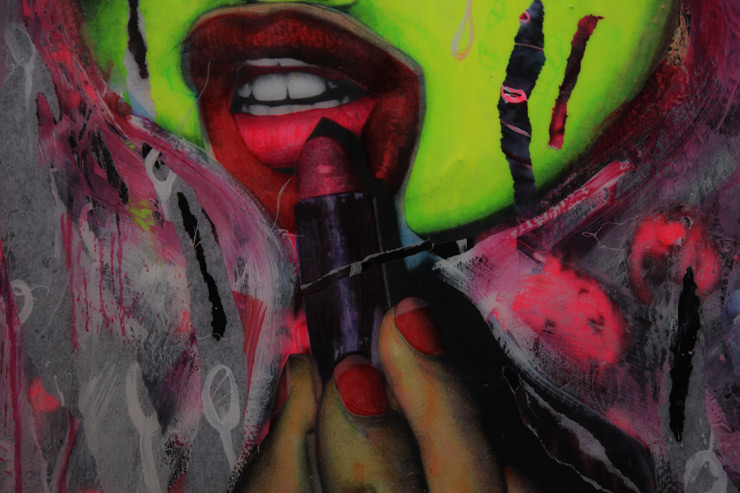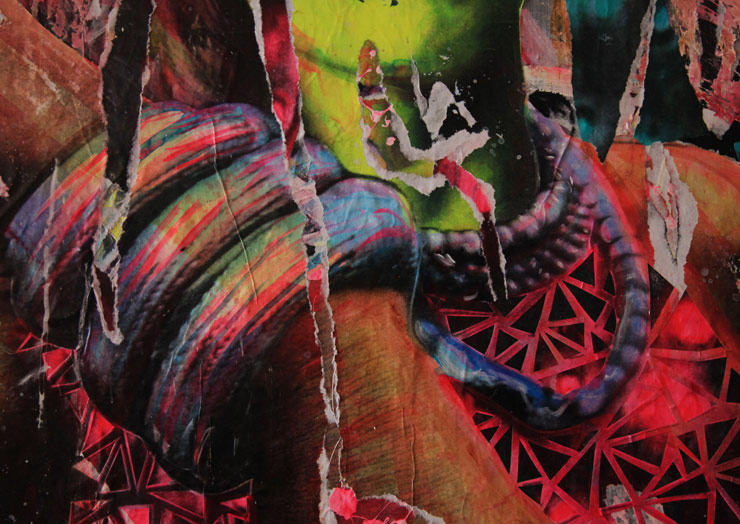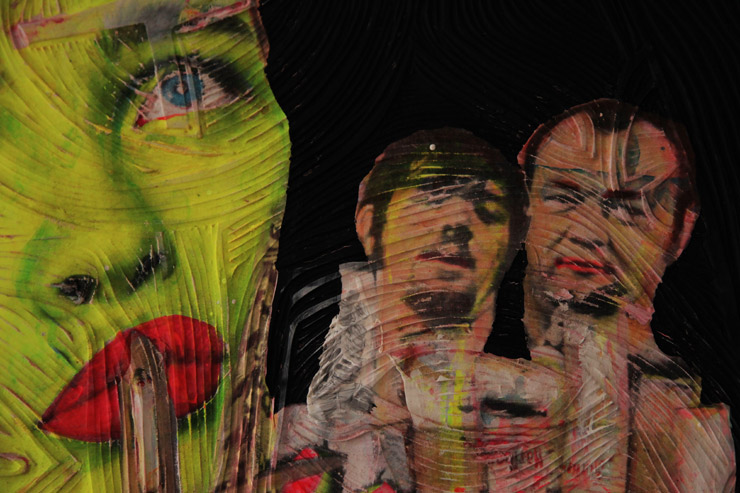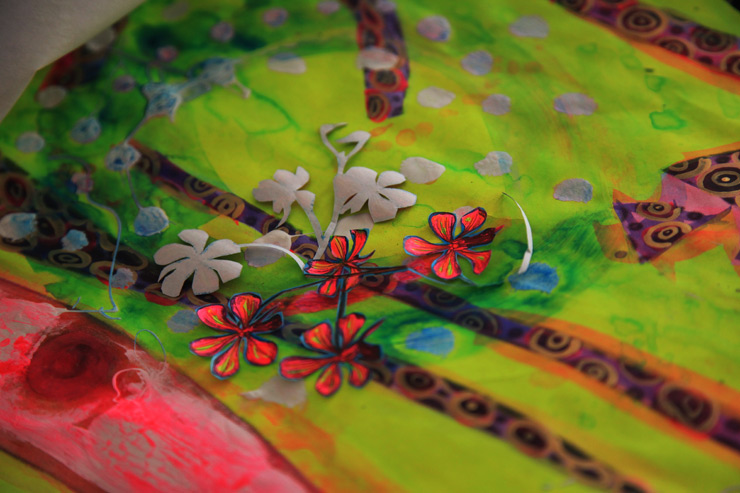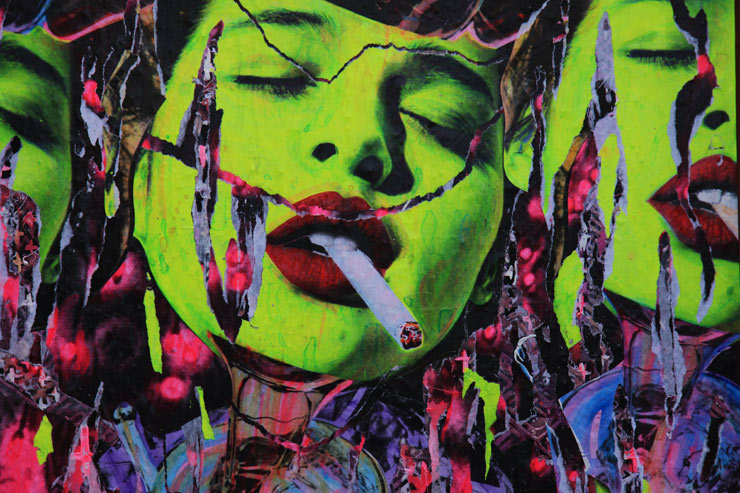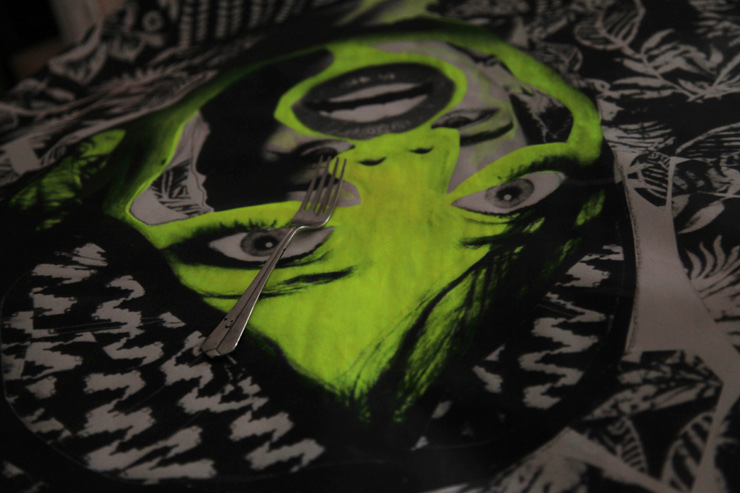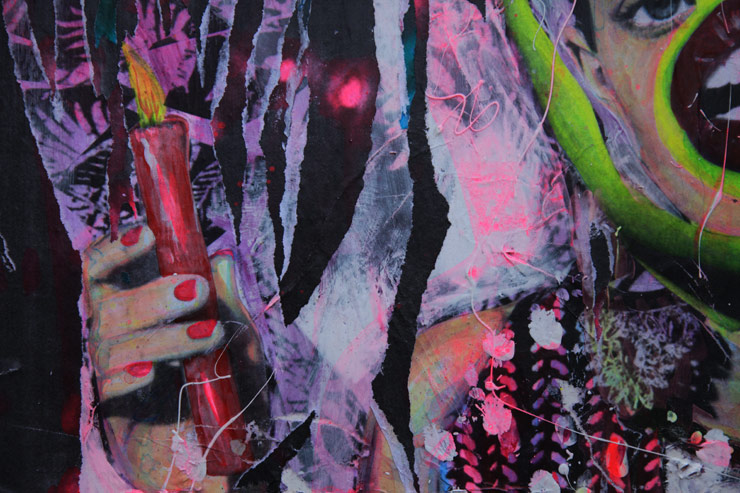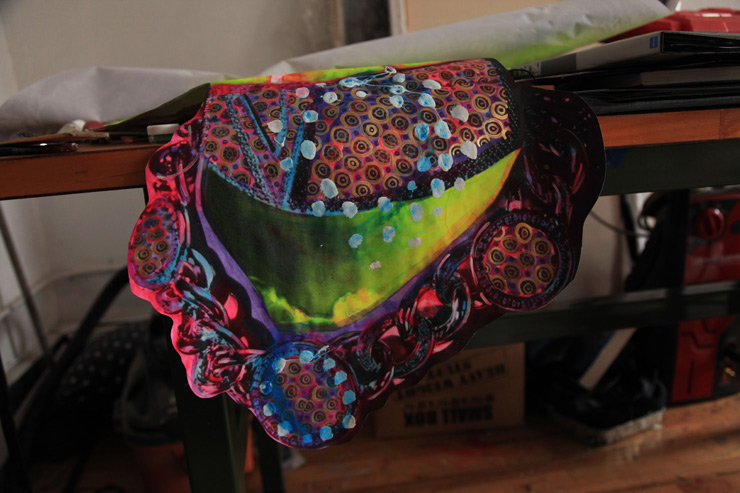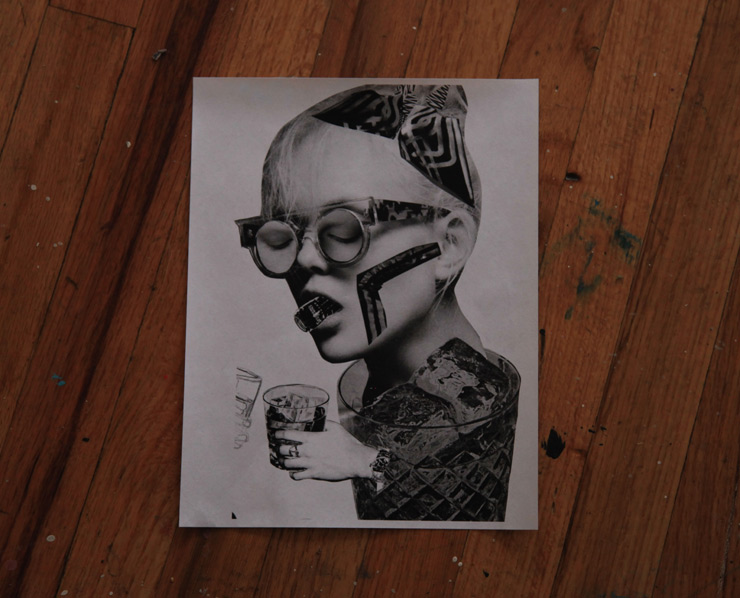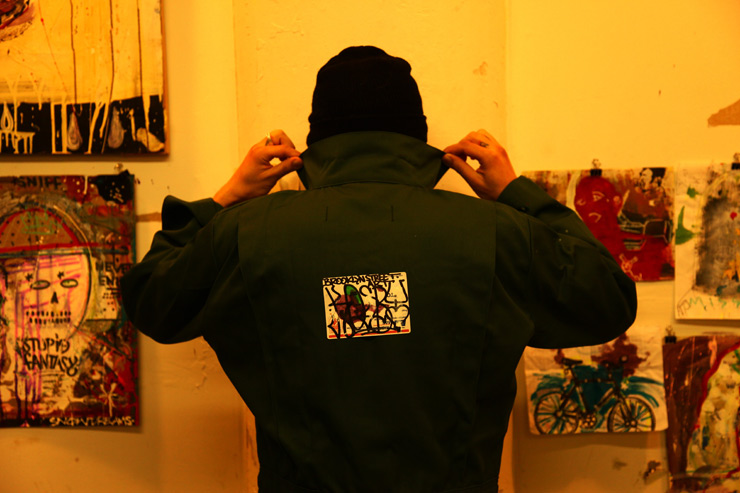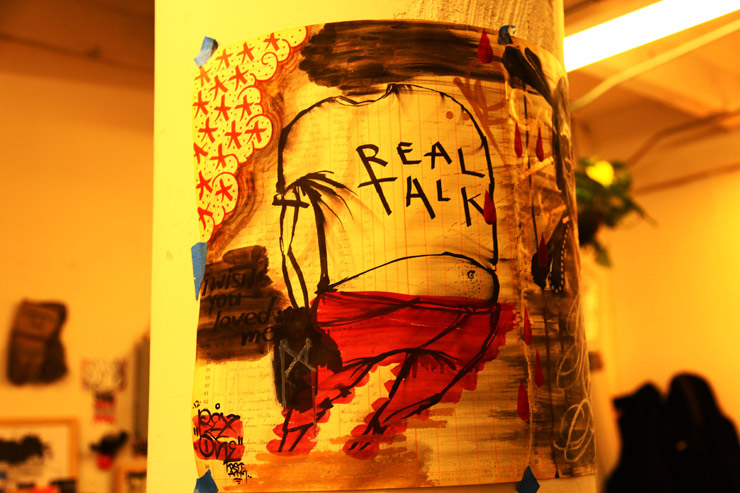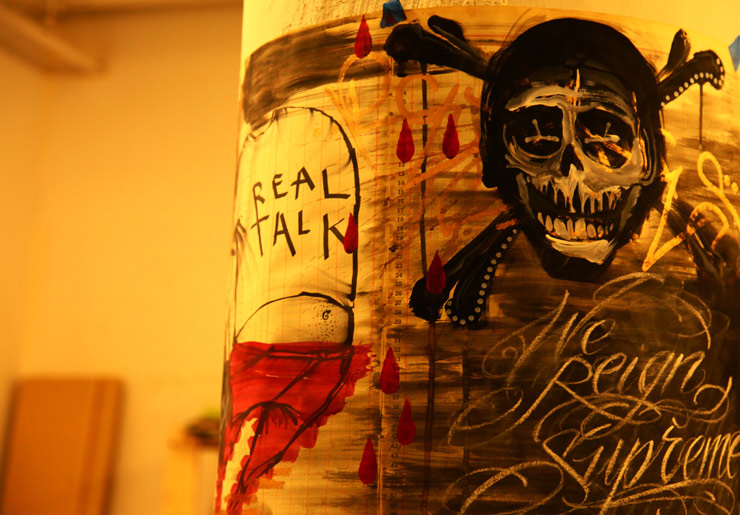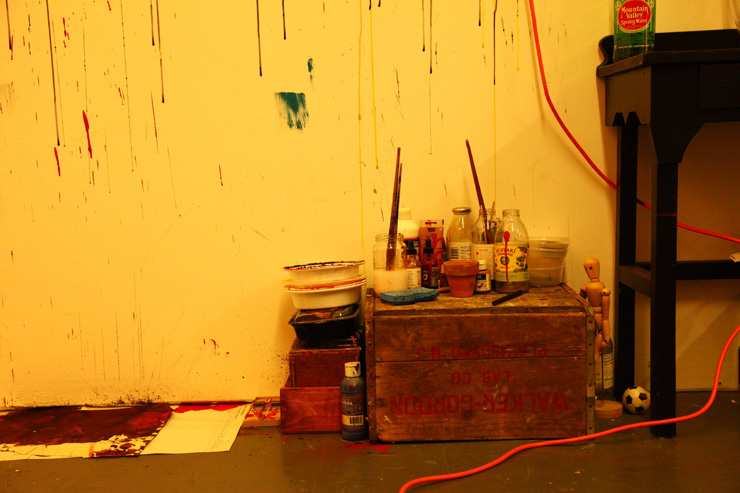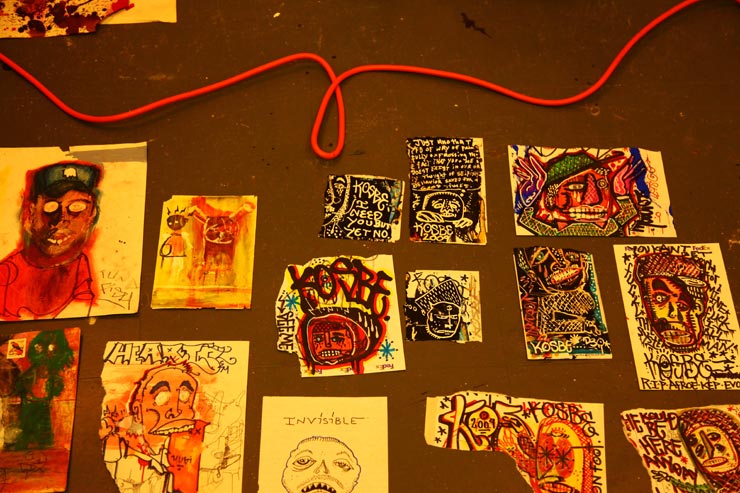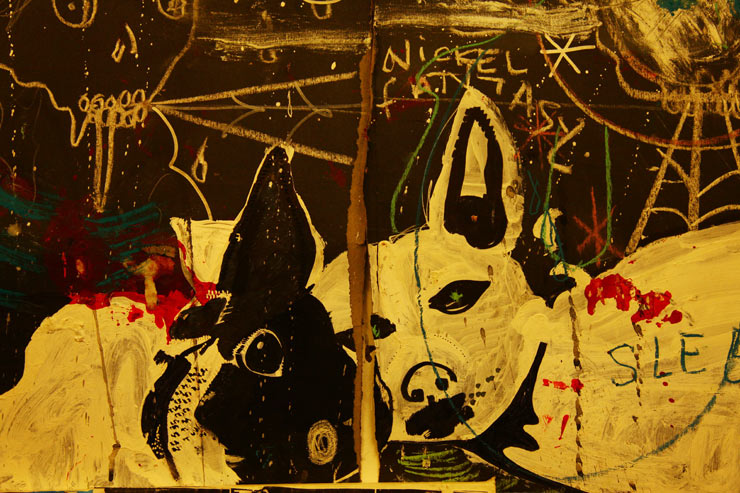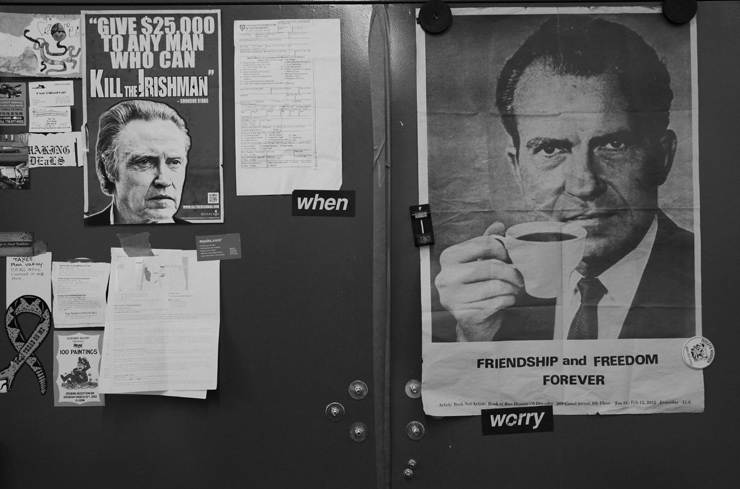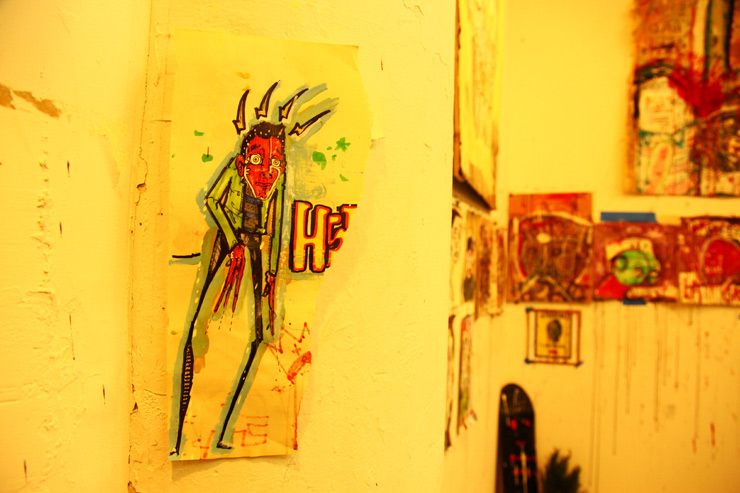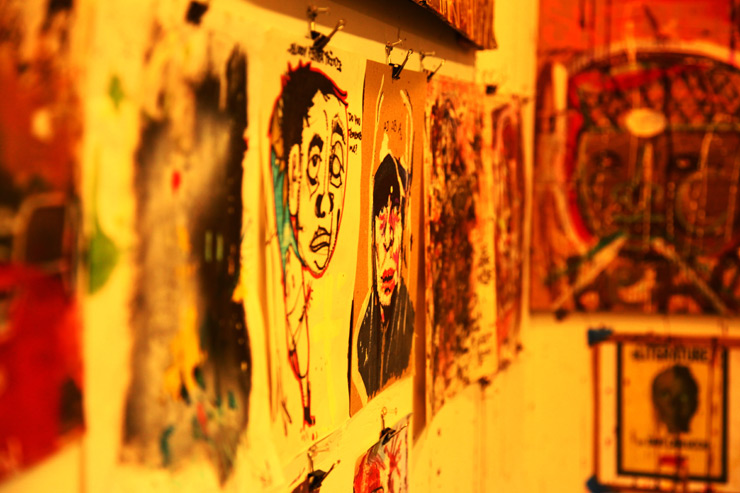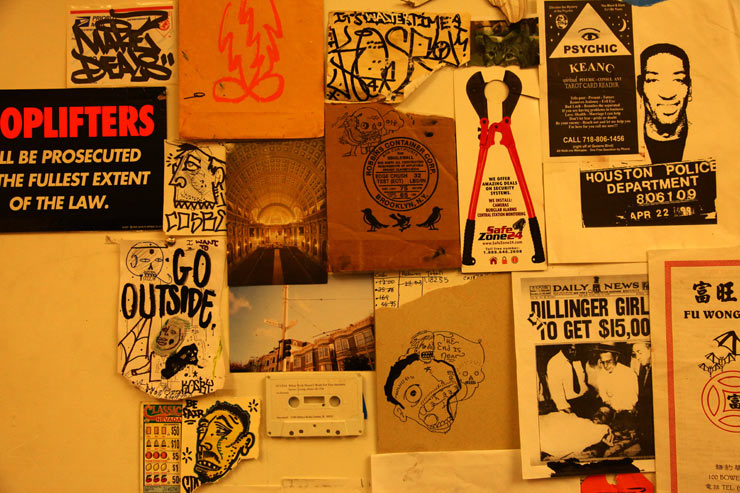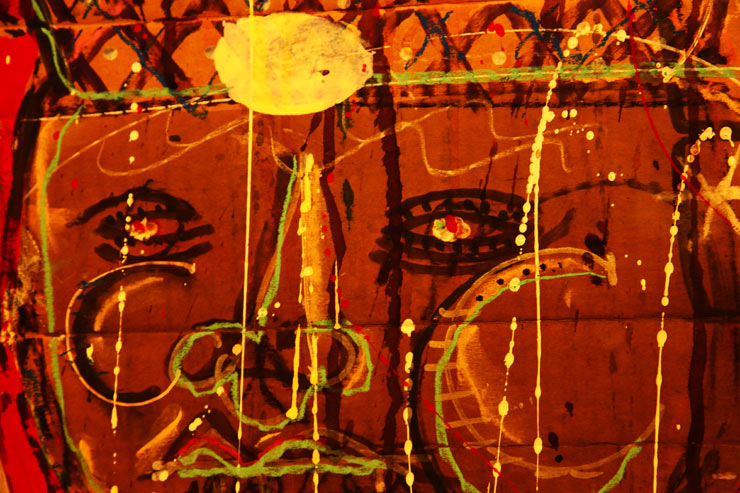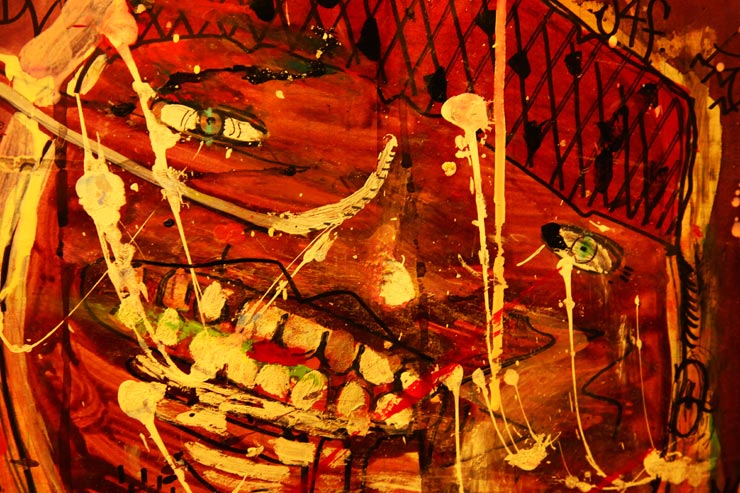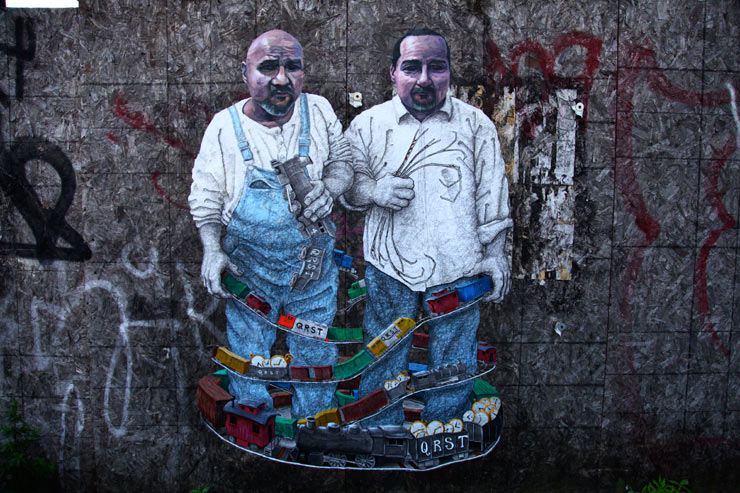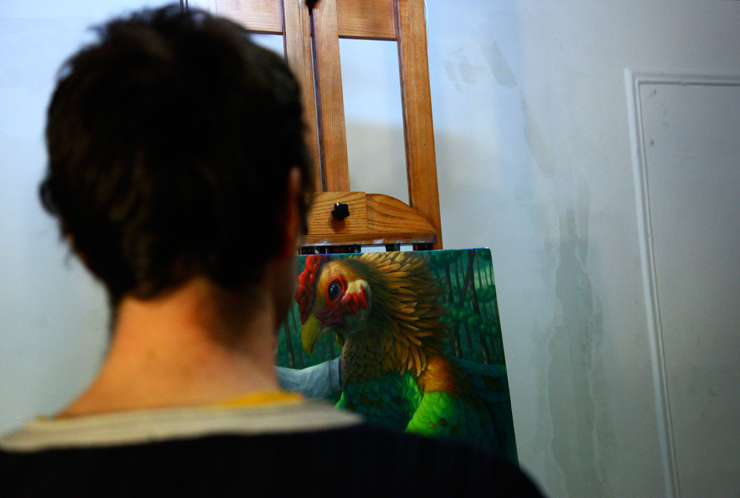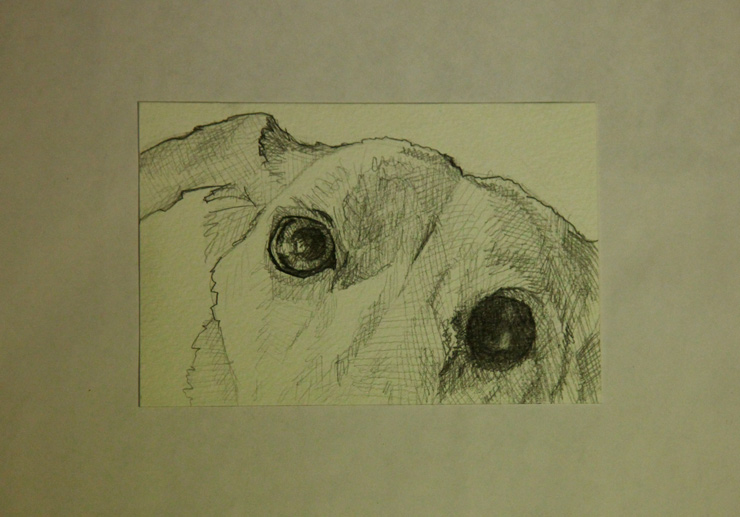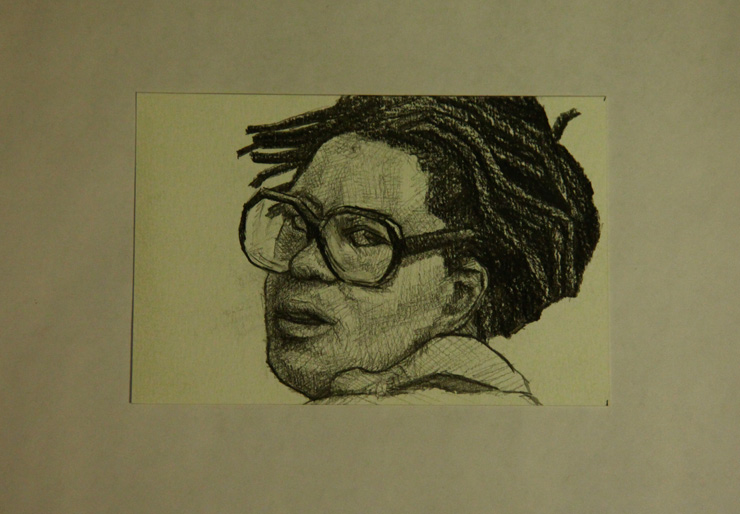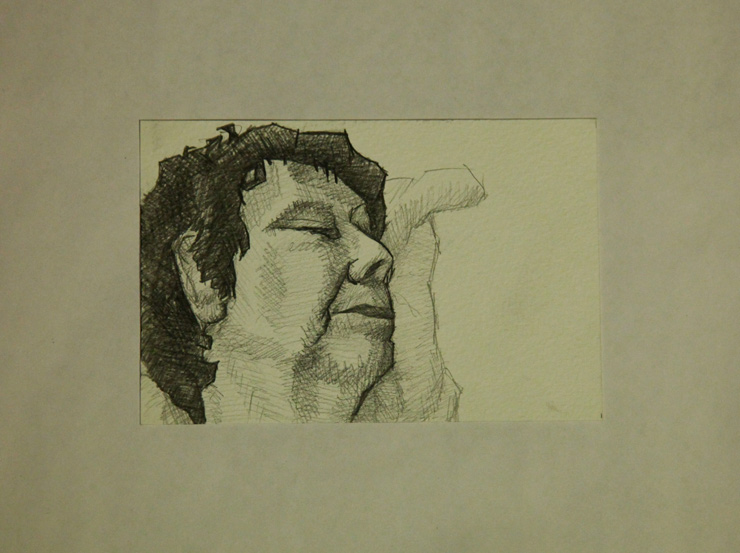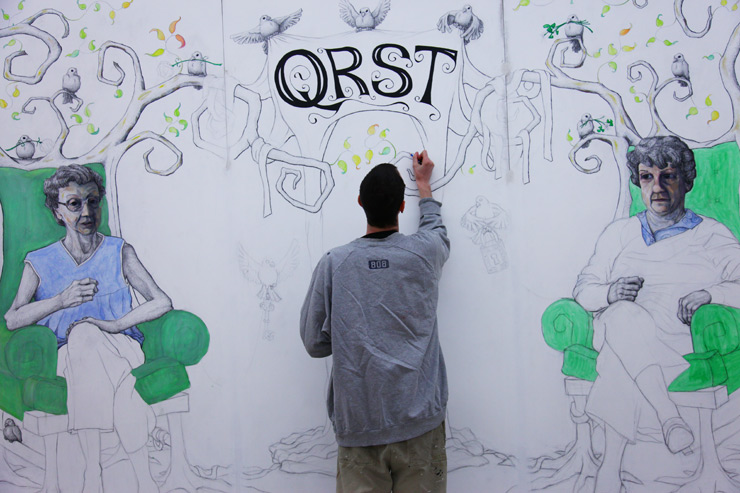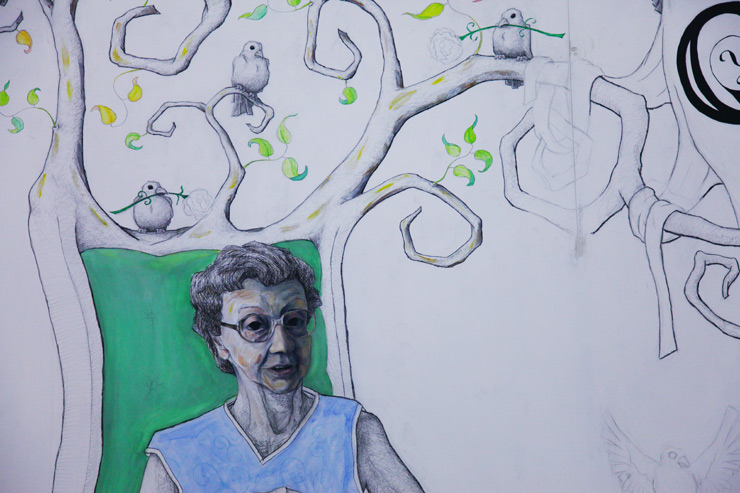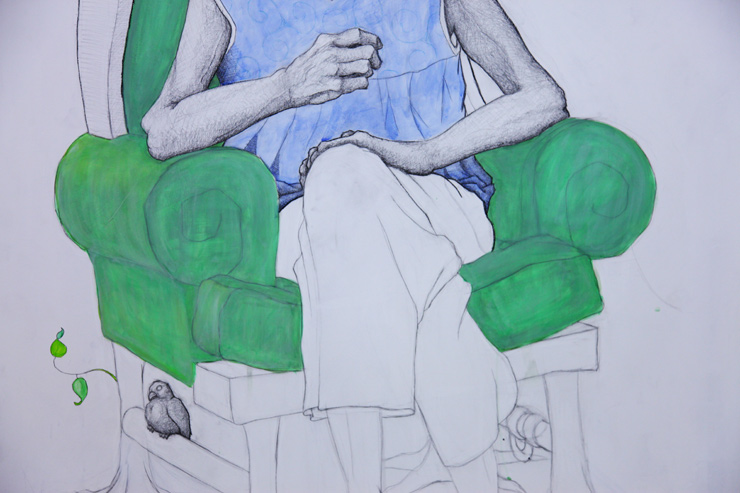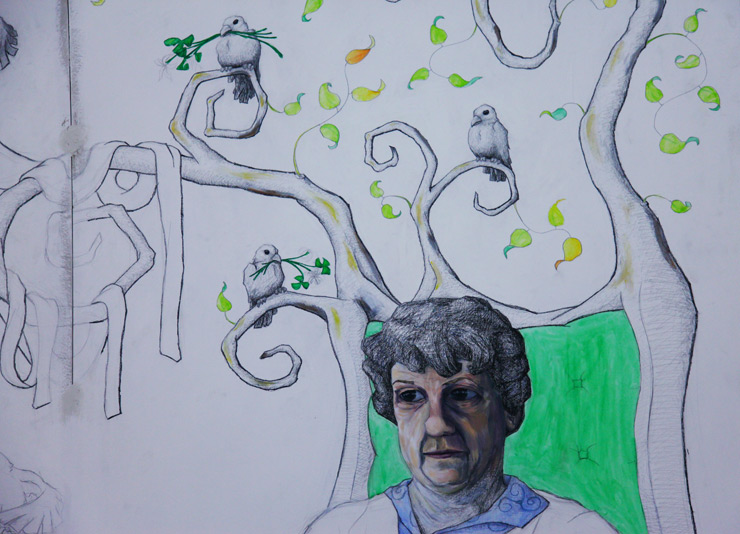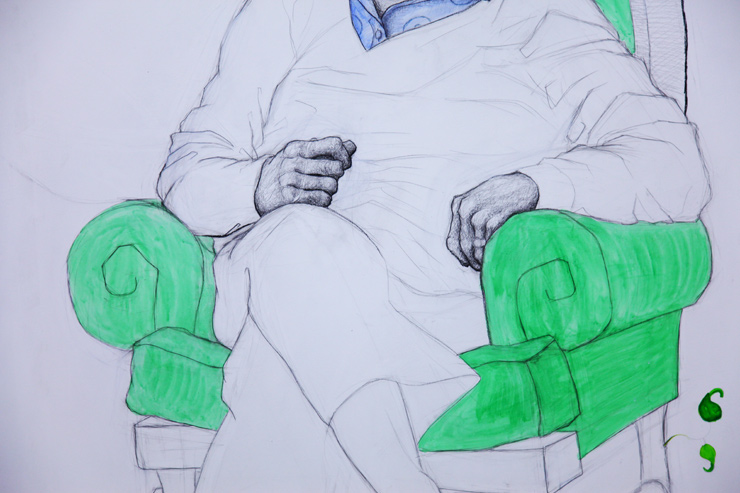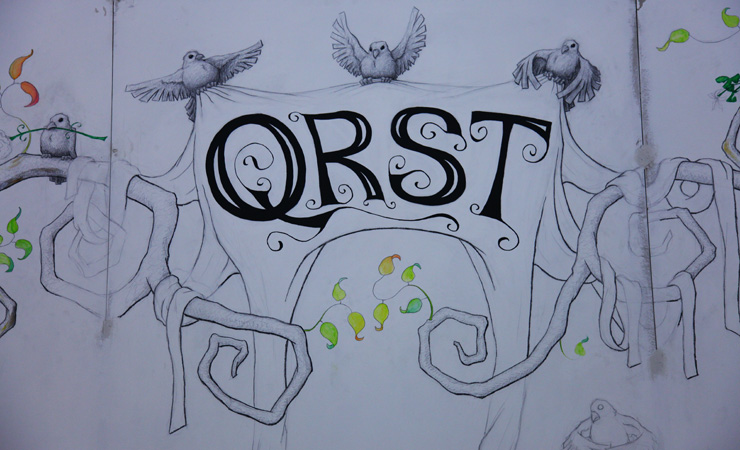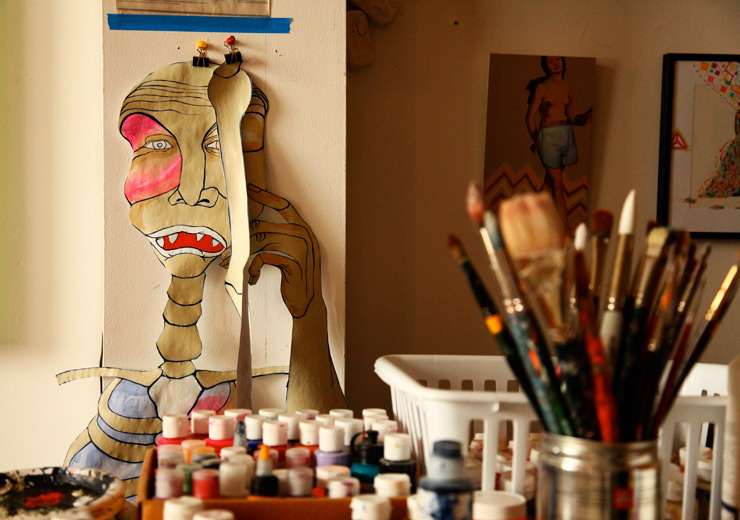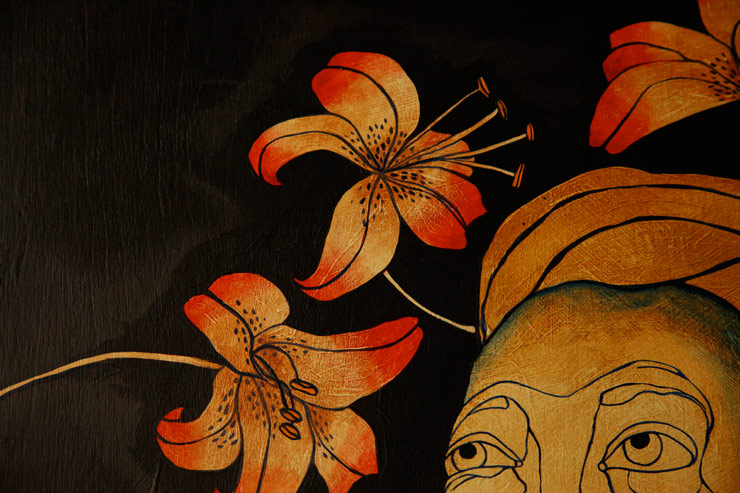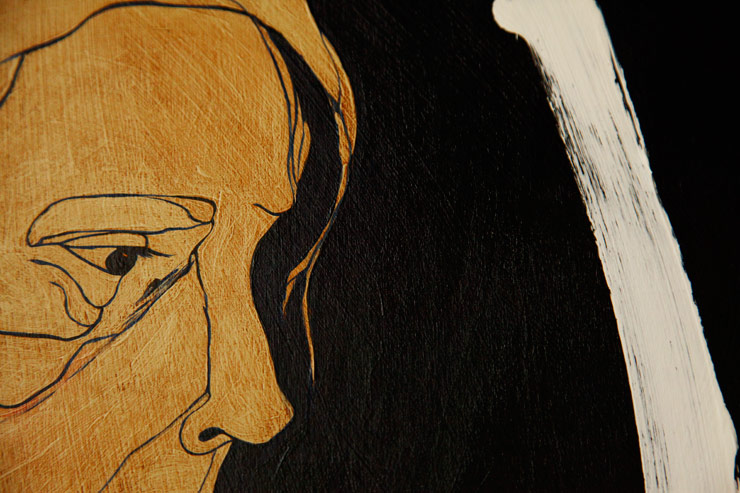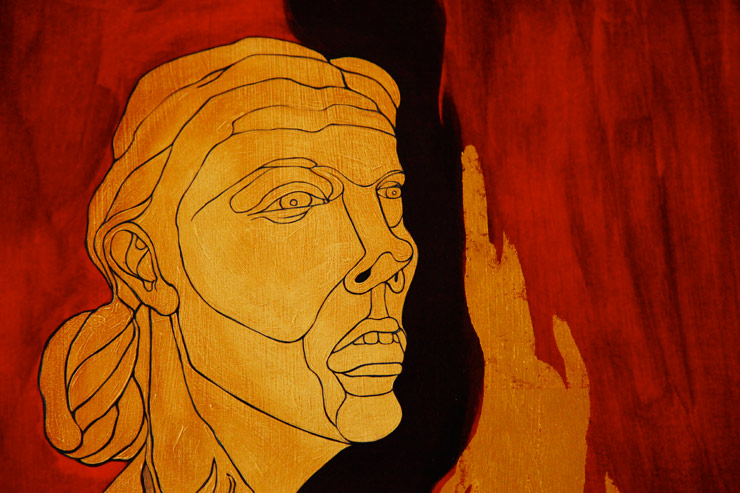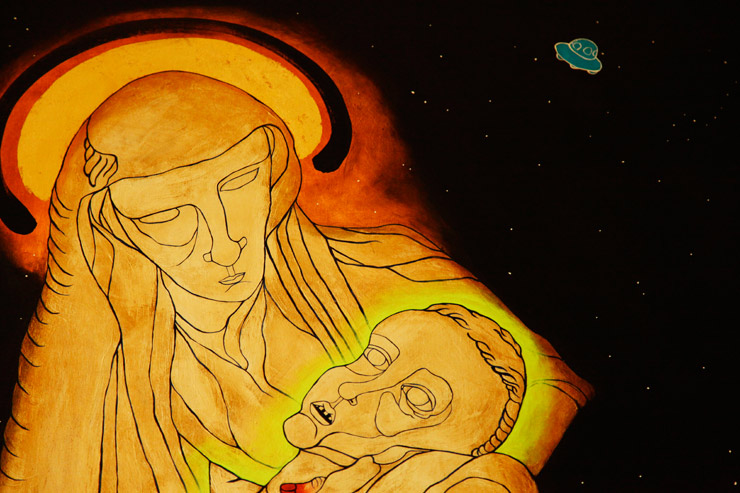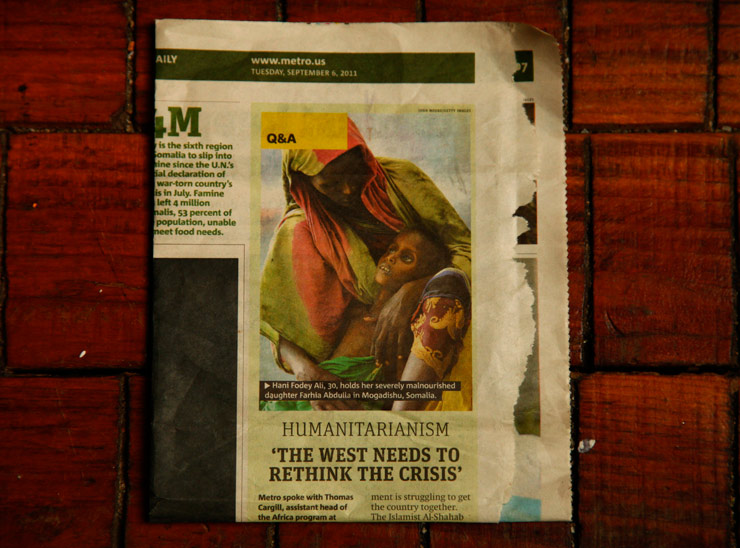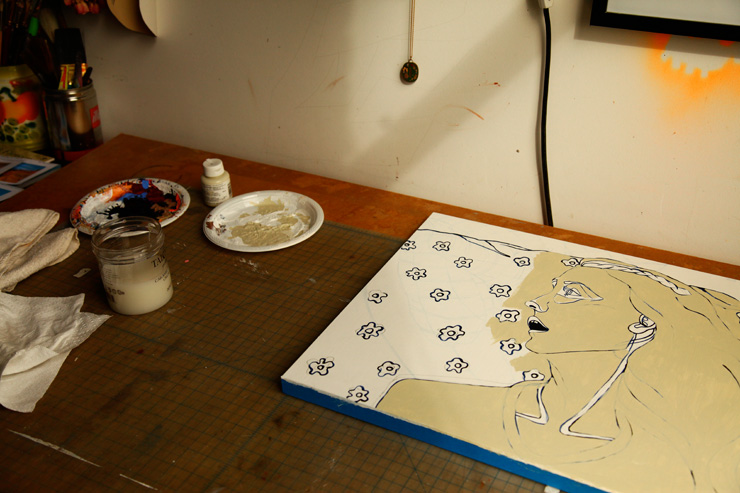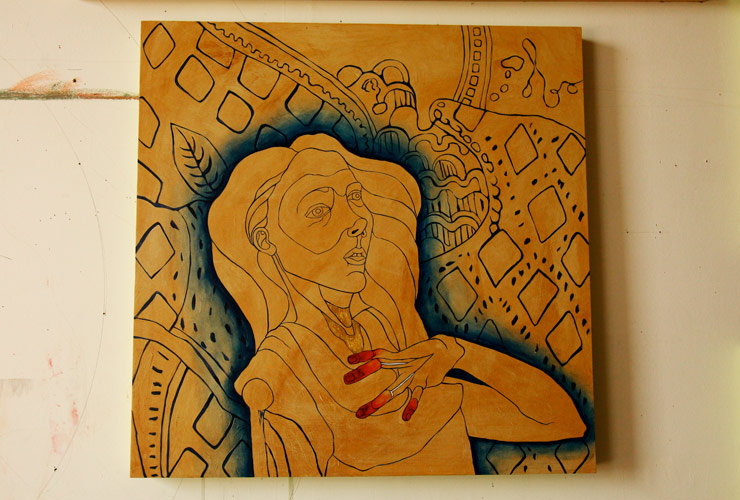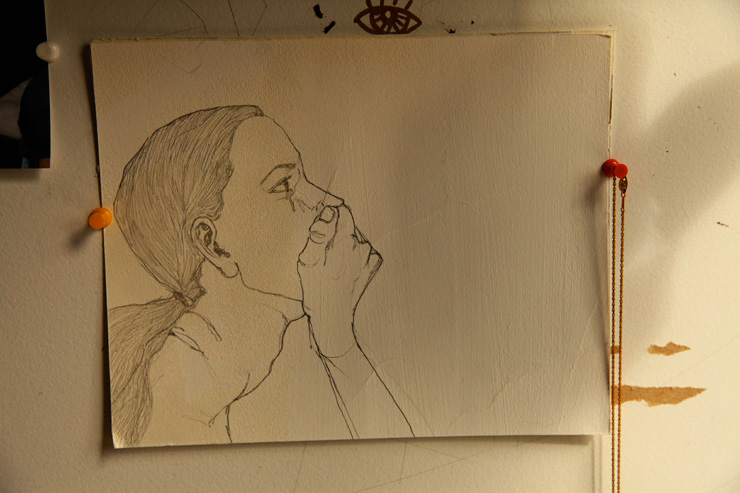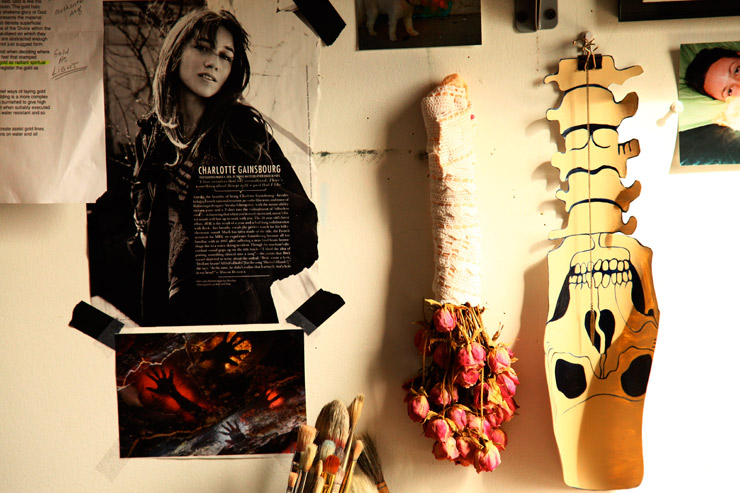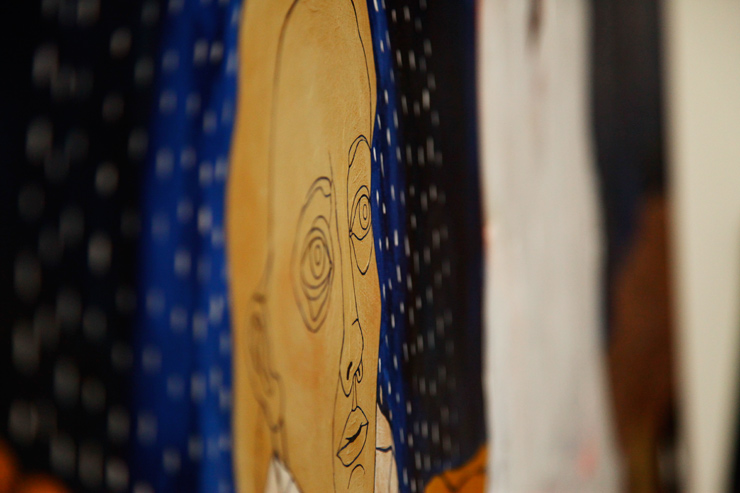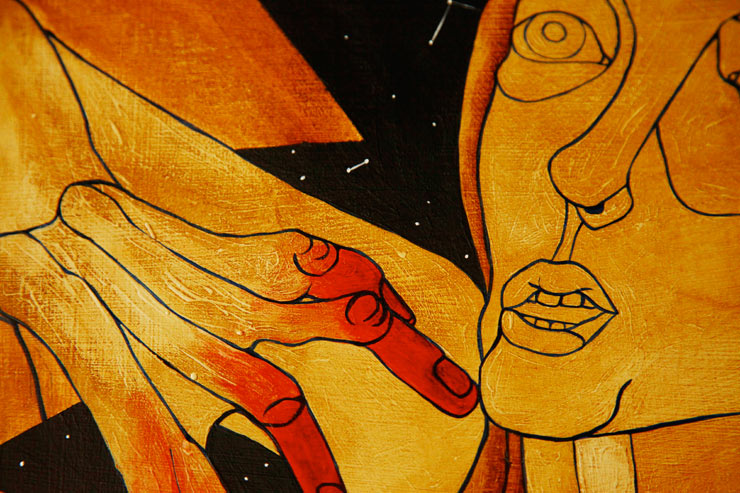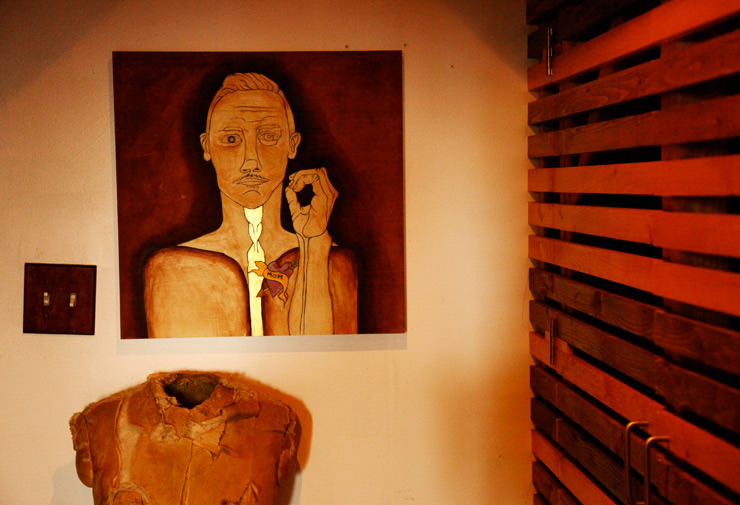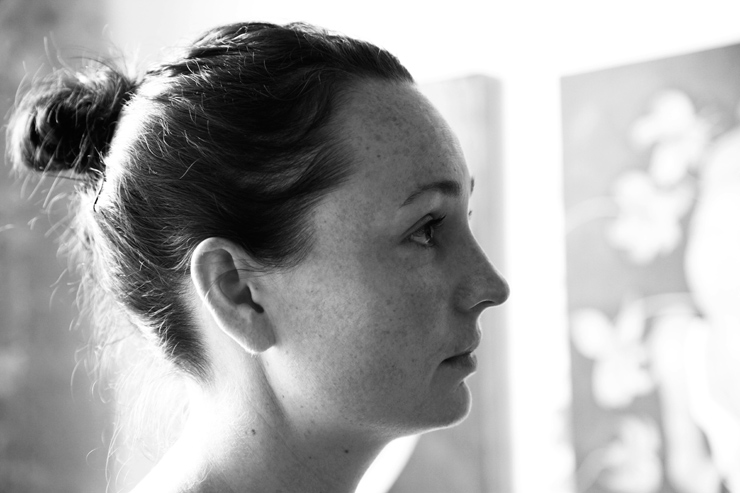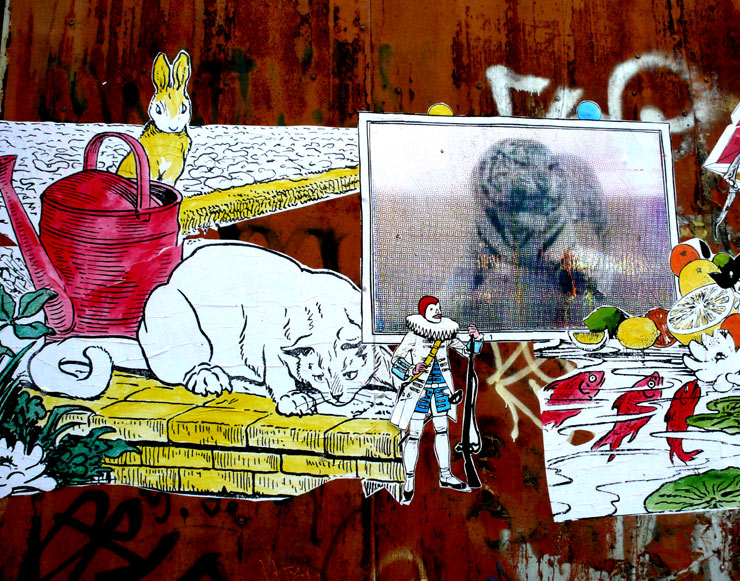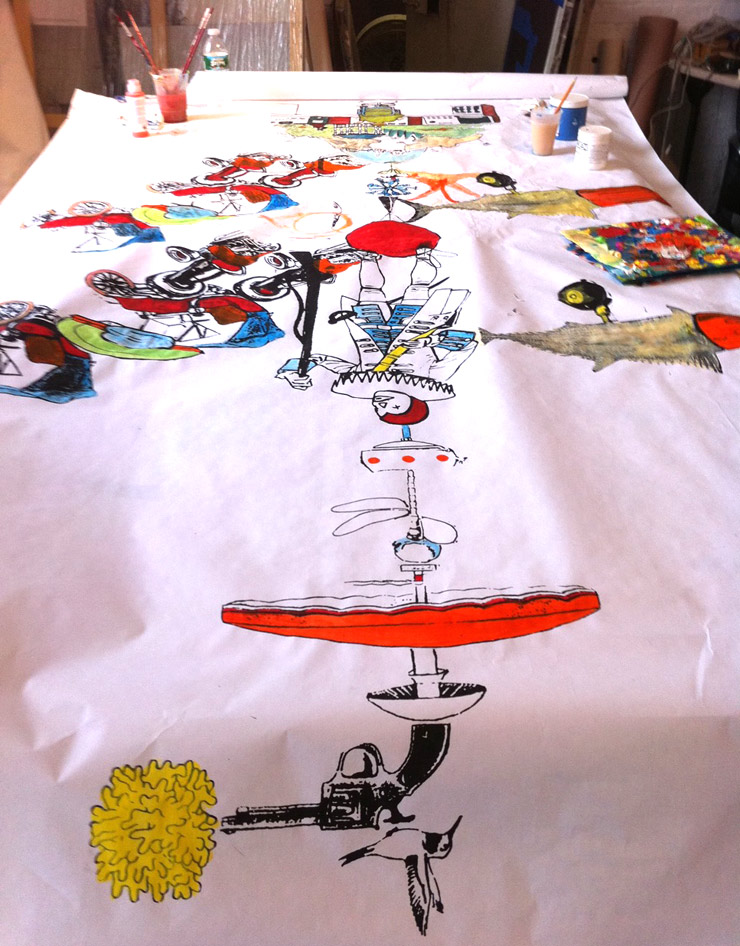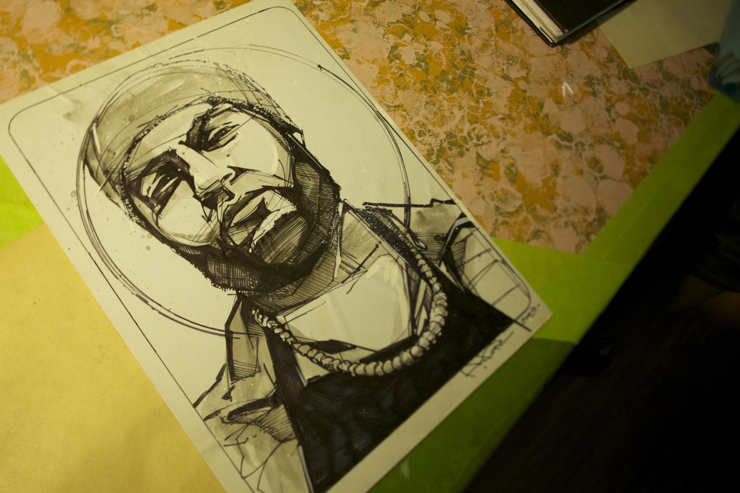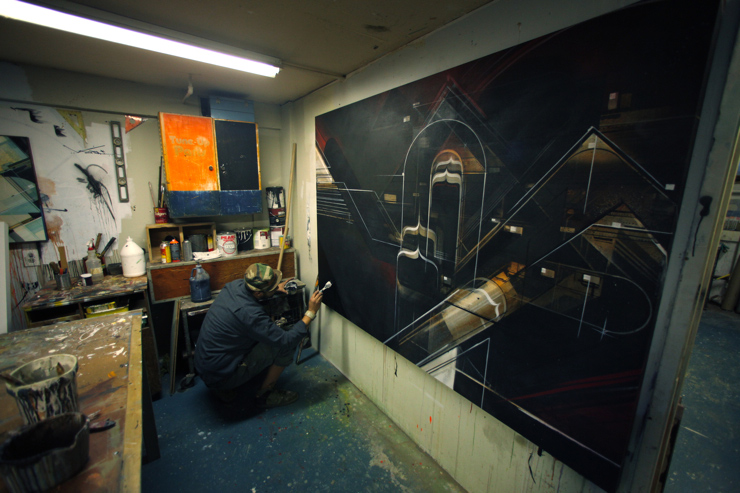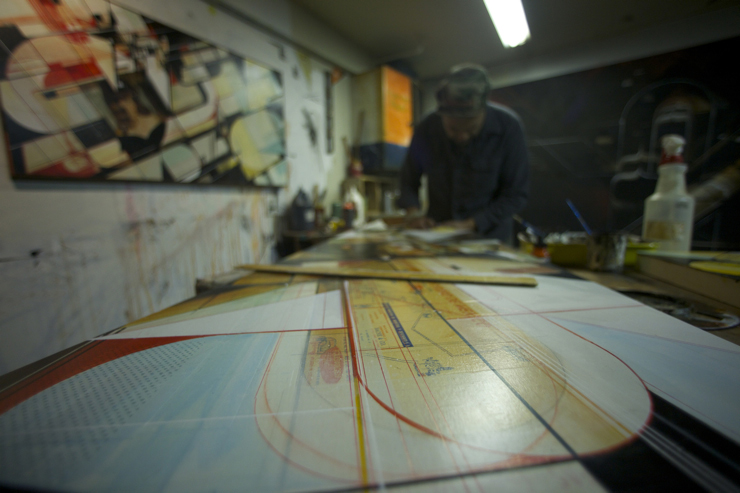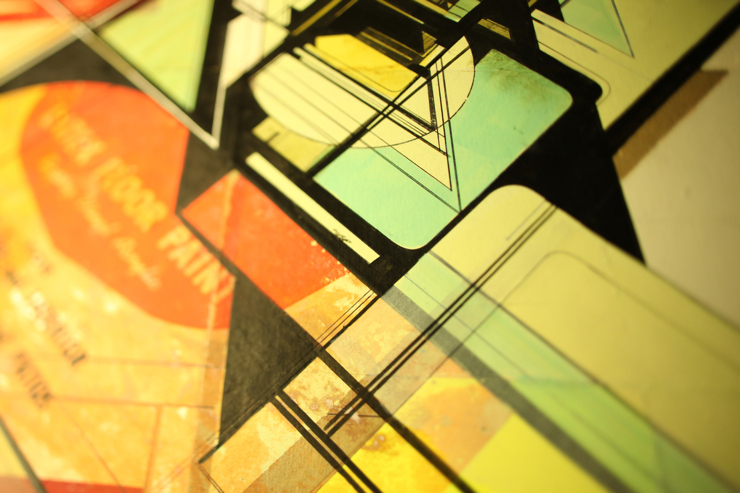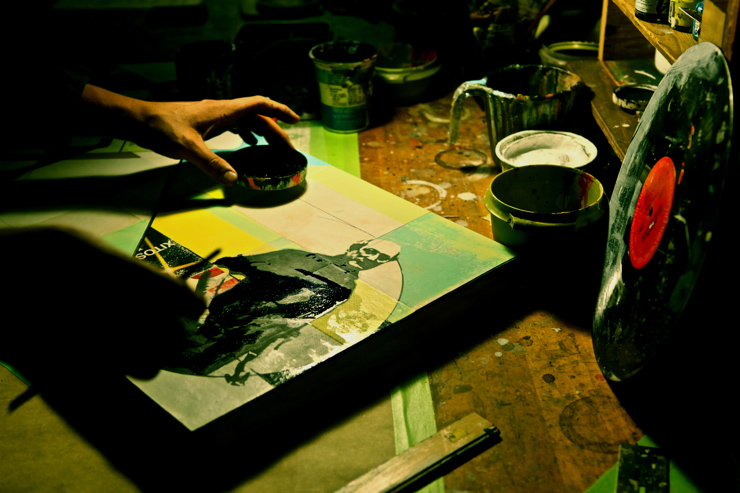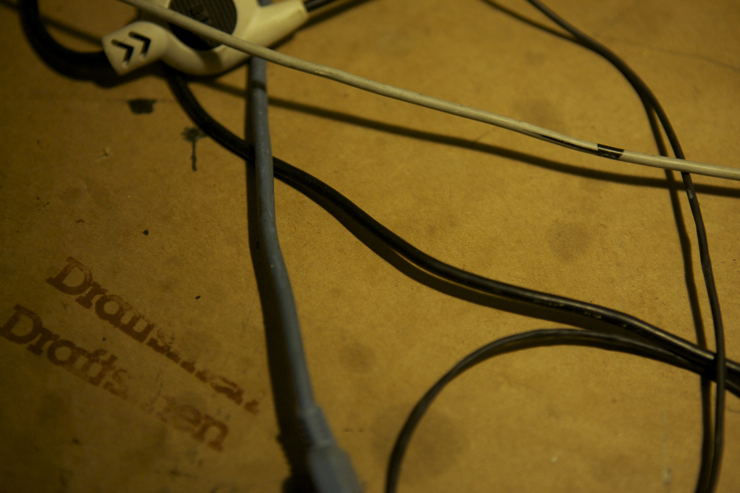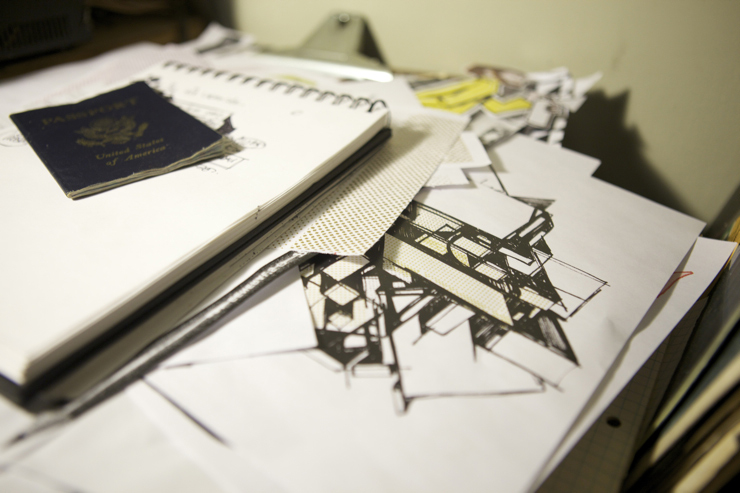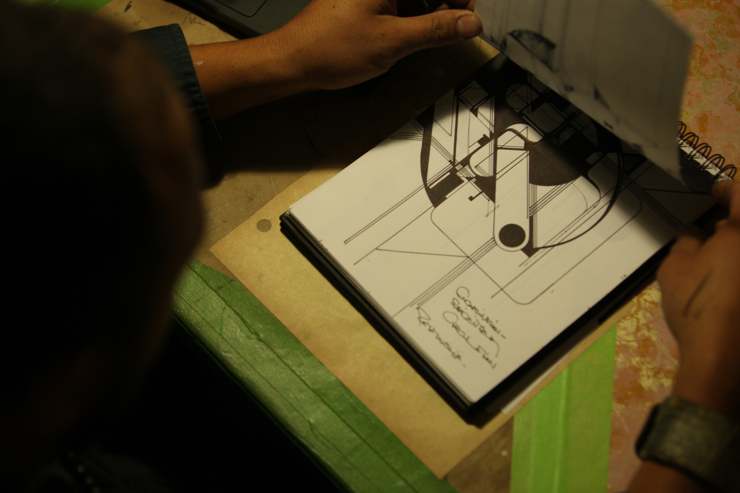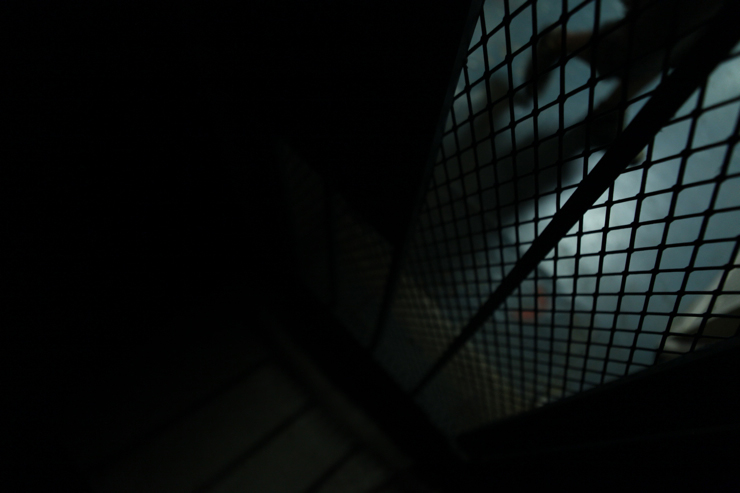Shepard Fairey has grown up before the eyes of fans, peers and would be competitors. Undaunted by criticism he gets from both sides of his chosen vocation as a globally-known street artist, the man still has a great deal to say. His art has made its way into homes, museums, wardrobes and book collections in addition to all the walls–legal and illegal–and he pays the price and gains the benefit of all of it. A living conundrum, he embodies the sharp tongued anti-establishment, anti-corporate, anti-police state ethos of his formative years, while gradually beginning to resemble the middle-aged dad who so much of the punk generation rebelled against.
He raises money for individuals and organizations who advocate for those who are disempowered or victimized, yet street art and graffiti kids who feel marginalized in their lives call him a sellout for making commercial work. Without the credibility of major shows, arts institutions, and collectors he could never afford to employ people who help him. Yet keeping it clean and doing legal walls costs him “street cred.” How exactly does one become an authority on questioning authority? You try this balancing act, and see how far you get without a scrape or two.
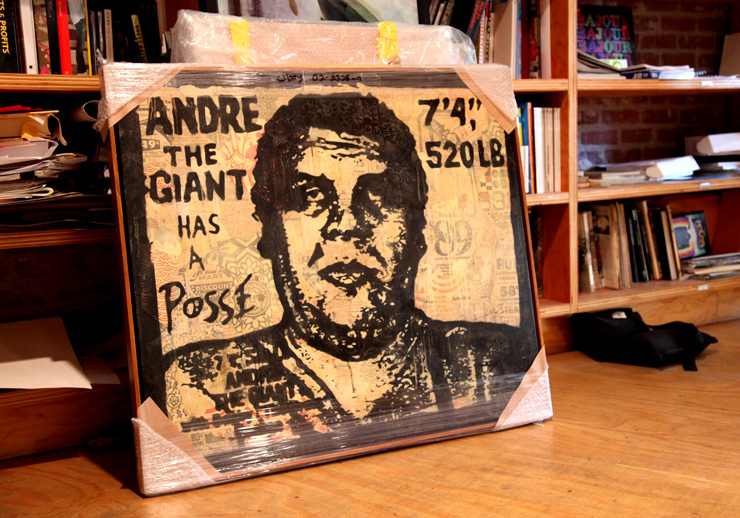 Shepard Fairey (photo © Jaime Rojo)
Shepard Fairey (photo © Jaime Rojo)
Actually, Shepard seems pretty down to earth and surprisingly un-embittered for a guy who has made a few mistakes and taken some hard bumps since growing up a skateboarder, going to RISD, and making all those weird “Andre the Giant” stickers. It’s not like he’s been hiding behind the couch of course. He likes to be celebrity DJ at openings. He likes to inveigh on panels about Street Art and graffiti and it’s impact on culture. He loves to write on his blog about all manner of social and political issues.
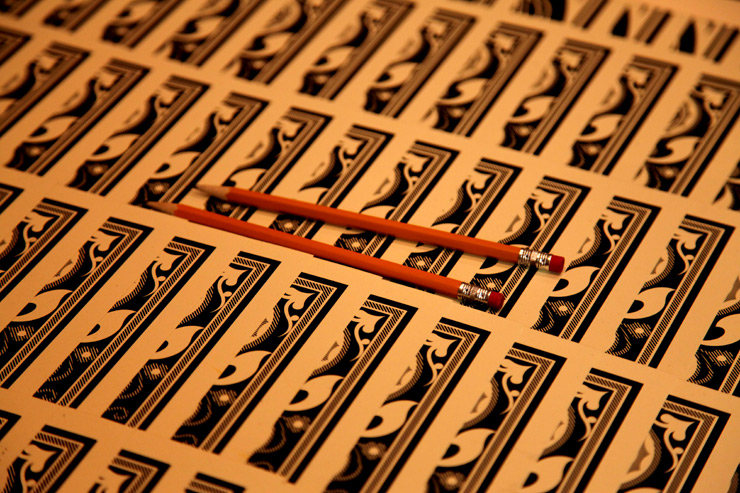
Shepard Fairey (photo © Jaime Rojo)
Because of his professional and commercial success as a street artist, designer, and illustrator and his talkative spates as social activist and cultural influencer, he’s laid himself out there for self-appointed persons of outrage and myriad colorful verbal pugilists with rapidly batting wings who are attracted to the light. Just a few weeks ago he and his wife had a first encounter of the gossip kind when they were hi-jacked for 90 seconds by a brain-free tabloid show at an airport. Sure, it was sufficient dish for the terminally distracted, and his fans and critics jumped to throats to settle burning questions like the current state of his credibility as a real Street Artist and to analyze the innerworkings of his marriage.
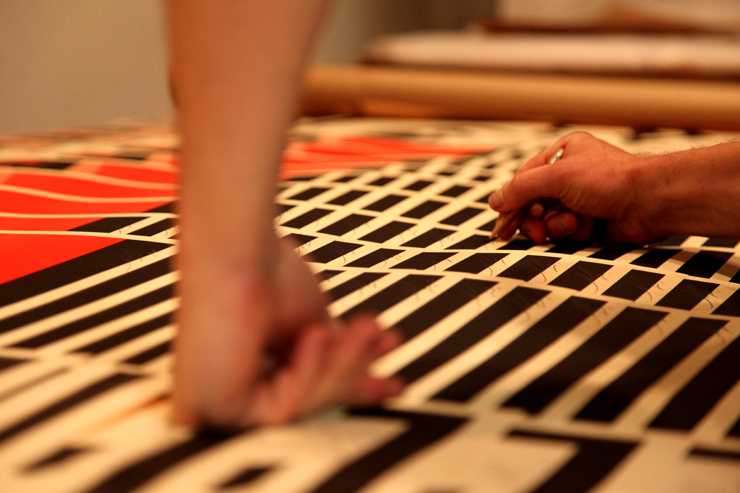
Shepard Fairey (photo © Jaime Rojo)
If you get to see the people who work with him at his studio in Encino, some for many years, you’ll get the idea that the CEO is fair and friendly as he seems. People buzz in and out of rooms and offices in this polished wood complex; each genuinely warm and welcoming to a stranger, willing to take an extra minute to talk or point the way to something interesting to oggle. They could be stoked because their daily grind is surrounded by cool and storied artwork, stacks of books, records, art supplies and ephemera, and this afternoon alone you might just run into Martha Cooper, Cope2, D*Face, or Word to Mother as they stop by to say hello or discuss a project. Obviously an achiever, he is always in motion and critical of so much in this world and you could see how he may have a choice word in pursuit of greatness, but if the regard for him and the camaraderie you see is forced, Los Angeles really must be full of actors.
The artist himself takes time to give a tour of some of his favorite items, all the while hitting whatever issues or artistic inspirations are evoked; gifts of art from friends and famous, his record cover collection from the 80s displayed on the wall, personal mementos that have meaning or stories. Here is a personally signed Clash LP cover and now let’s talk about America’s dependence on fossil fuels. He’s a new rubylith transparency of Ronald Reagan called “Mo(u)rning in America” and now lets talk about how influential Russian Constructivism has been to his work and how to simplify and exaggerate perspective.
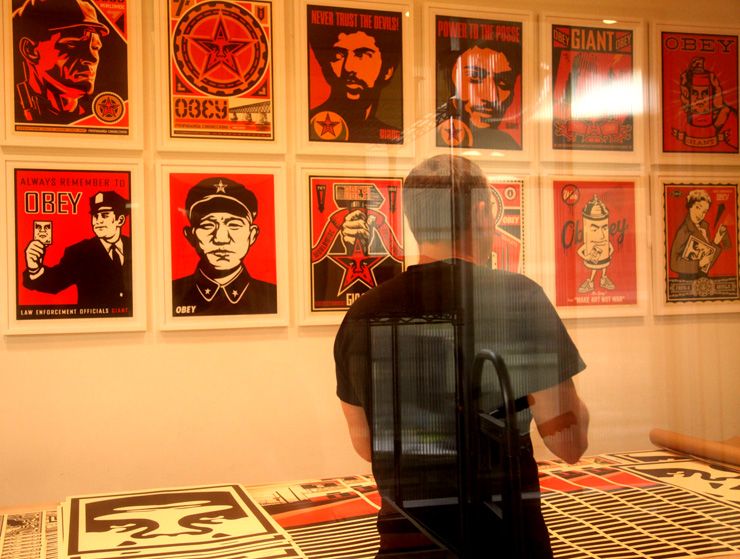
Shepard Fairey (photo © Jaime Rojo)
With the meteoric rise in interest in Street Art during the last decade, it’s difficult to know if Fairey pushed the wave or learned adeptly how to ride it, but the list of cities, walls, art products, shows and professional accomplishments requires a catalog. A hotter younger head might get too swollen to fit through a door and hubris might cloud his worldview. During a brief interview at his studio in Los Angeles while he signed multiple copies of a new print, the husband and father of two with grey flickering around his temples comes across as a pretty sincere guy who may worry a bit too much and who has a fire in the belly that burns fiercely, if a little more controlled than before.
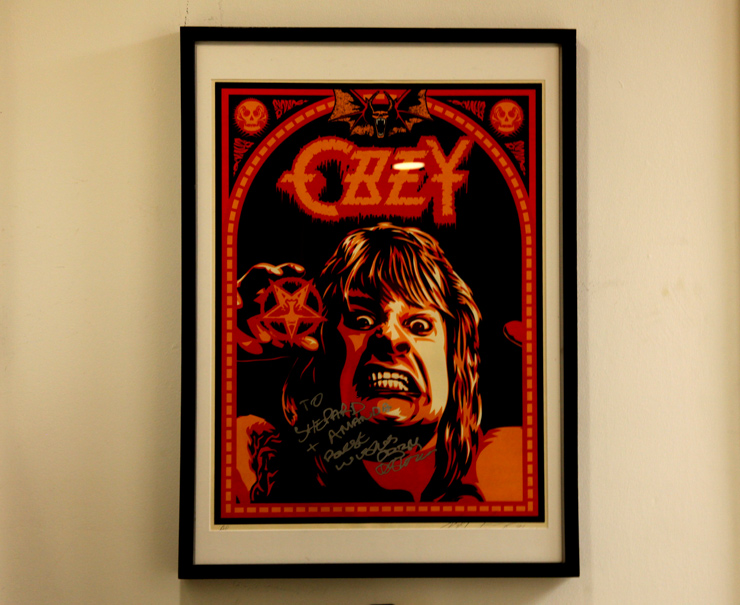
Shepard Fairey (photo © Jaime Rojo)
Brooklyn Street Art: What is interesting to you at the moment?
Shepard Fairey: The MOCA show is interesting. The rise of street art in general is pretty interesting. The reason I called my book “Supply and Demand” is because the forces, economic and cultural, are what’s fascinating around the evolution of an artists career, an art movement, politics, fashion, music, everything. I think a lot of what’s fascinating to observe right now is that as Street Art and graffiti have become maybe a little bit more acceptable and marketable that certain people are very happy about that because maybe they have done it in obscurity and poverty for a number of years and other people prefer the idea of it staying underground.
To me that’s actually kind of an elitist standpoint. “Oh the institutions are elitist! We’re underground!” and they don’t want to share it.
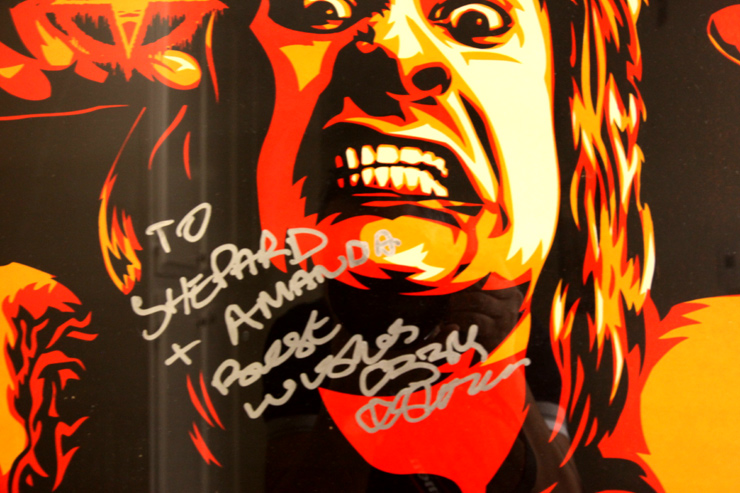
Shepard Fairey (photo © Jaime Rojo)
Brooklyn Street Art: And in the process they are creating their own institution which is called, “The Underground”
Shepard: Exactly! So just seeing how all these points of view are going around – I think debate is really healthy. I think that the most potent things are maybe contentious. So seeing how many people are loving this moment and how others are going out and attacking all the artists stuff that showed in the museum – calling them sellouts – these are all not always uplifting in terms of my opinion of humanity but are fascinating to see. To me it’s just an exciting moment.
But I also think a lot of it revolves around these sort of reductivist arguments that are valid based on defining things very narrowly and putting them in categories that are unhealthy. My strategy as an artist has always been, “Look at every single situation and adapt to it the way that is logical”; the “inside/outside” strategy I’ve called it. For example, trying to reach people in a democratic way by putting stuff up on the street but also if there was an opportunity, for example, to do something for a band I like, or do something in a gallery – that’s just another way to reach people. So it’s not being dictated to by the system, working around it when you need to, but also not being afraid to infiltrate and work within it. That’s been my approach.
And I guess a lot of the friction that I’m seeing seems to based around people who cannot think that way.
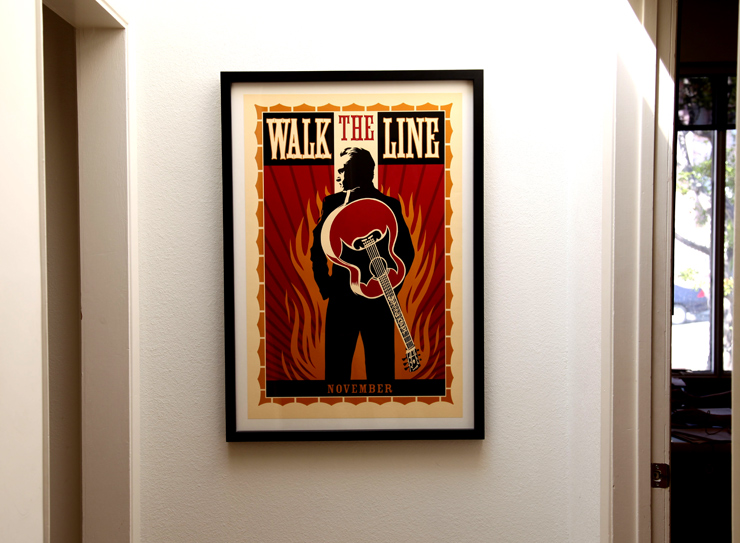
Shepard Fairey (photo © Jaime Rojo)
Brooklyn Street Art: Your participation in the MOCA show; There weren’t many new elements in that show were there?
Shepard Fairey: Um, yeah there were actually. The big canvas was new, all the environmental pieces were brand new paintings. But really what they asked for in that show was a historical overview but they also wanted the work to have the spirit of the street but have it a stand-alone artwork in an institution. So there are sort of two agendas that aren’t always easy to bring together. So my solution on some of it was to make “paintings”
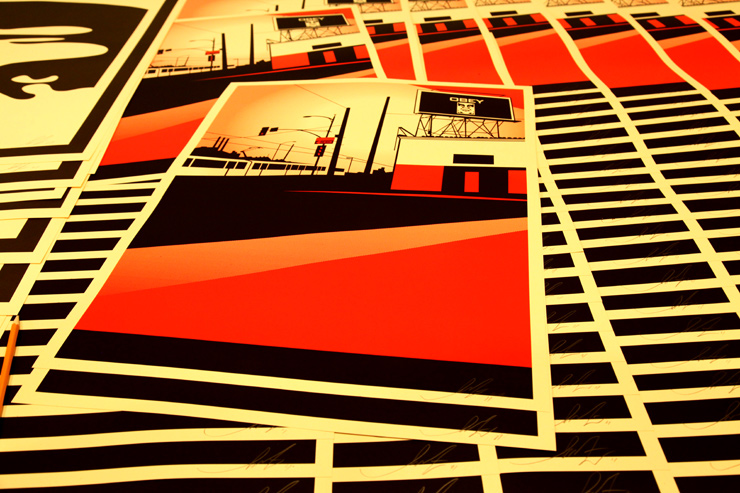
Shepard Fairey (photo © Jaime Rojo)
Brooklyn Street Art: It seems like we’re swimming around in this system that we are all kind of uncomfortable with and that friction that you speak of flares up during times like this. It’s a punctuation in the flow of thoughts. We have this huge show and it’s like, “Here marks a beginning, or an ending”. So many people feel they have to weigh in with opinions.
But you’ve certainly borne a number of strong or vehement attacks over the years just because of the way you negotiate the system and your place as an artist within it. Do you think your skin has gotten thicker as a result? Or have you always been kind of thick skinned.
Shepard Fairey: Um, I’m actually pretty thinned skinned and it always hurts my feelings when people attack my work but the real enemy is indifference. If something is ire-ing or inspiring it is motivating someone to respond. I think that could be the starting point for a conversation and I’ve known a lot of people who, once they’ve heard me articulate my opinions about things, they’ve changed their opinions about my practice, my way of working. Other people haven’t. But it’s not my goal to win everyone over but it is my goal to make work that I think sparks a conversation. So I’ve accepted that my feelings are going to get hurt trying to do what I think is most important to do. (laughs)
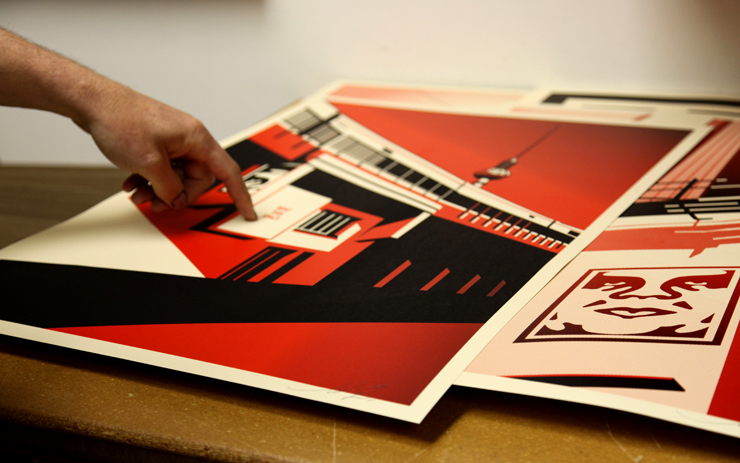
Shepard Fairey (photo © Jaime Rojo)
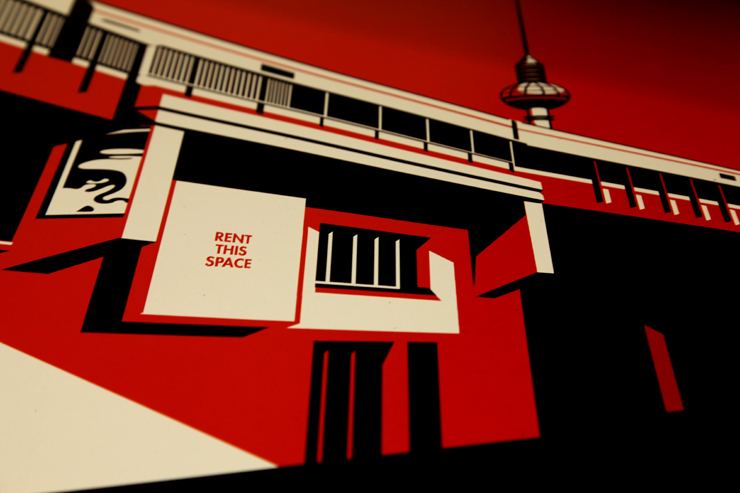
Shepard Fairey (photo © Jaime Rojo)
Brooklyn Street Art: I’m not sure I could withstand the continuous attention and negativity that can be out there.
Shepard Fairey: Well the nature of street art is about people who are aggressive and rule breakers and oftentimes very opinionated about how they think things should be done or not done. So just by inserting myself into that arena I’m going to be dealing with a lot more static than almost any other area of culture (laughs). But that’s my choice.
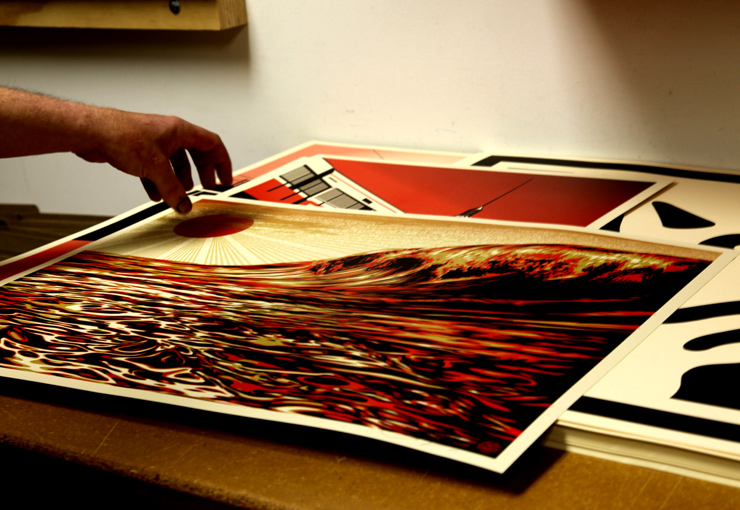
Shepard Fairey (photo © Jaime Rojo)
Brooklyn Street Art: It also feels like home.
Shepard Fairey: But when I look at the rewards of it, and when I say rewards I don’t mean financial at all, I mean the satisfaction of creating something from nothing and empowering myself and speaking to a lot of people in a way that’s democratic – to me all of that greatly outweighs having to deal with haters from my own community or law enforcement. I mean all of that stuff has been really stressful but when I’m out doing something and a kid comes up and says “Hey, you know I got into graphic design or I got into making art cutting stencils because of you,” – that happens frequently – and that makes it all worth it because that person might end up making art that is very powerful, that’s going to change someone else’s life. The sort of cumulative effect of that influence is hard to even quantify.
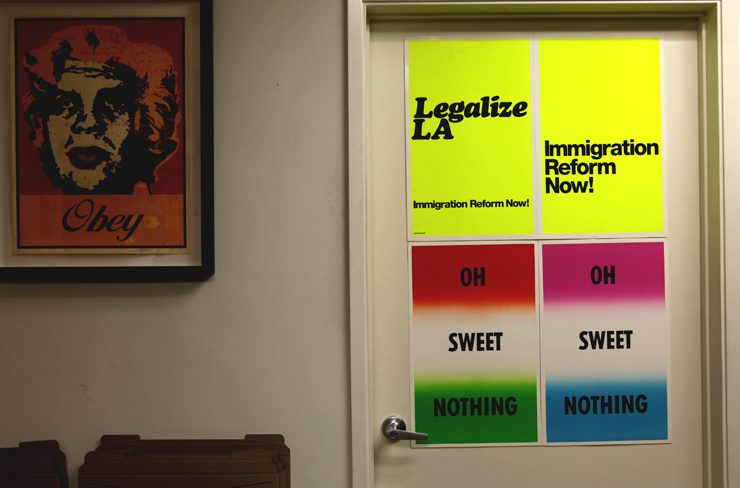
Shepard Fairey, Craig R. Stecyk III (photo © Jaime Rojo)
Brooklyn Street Art: Is there a sound? I know you have a musical ear – is there a sound when something like that happens in your life when a kid talks to you like that, do you hear a “ping!” or “ching!” – and think, “That was exactly what I wanted”. Or do you see something visual like a light?
Shepard Fairey: Well, I remember a moment in my life when that happened for me and so it’s almost like when you smell the same smell as your first girlfriends perfume or something that’s very Pavlovian, I guess.
Brooklyn Street Art: That’s what I’m thinking about.
Shepard Fairey: When I first got into skateboarding and I went over my friends ramp and the experience of riding that ramp and how it seemed like it was changing the world for me. Or the first time I listened to The Clash or The Sex Pistols and how it was like, “Okay, wow, everything just got a lot different, broader, more exciting.”
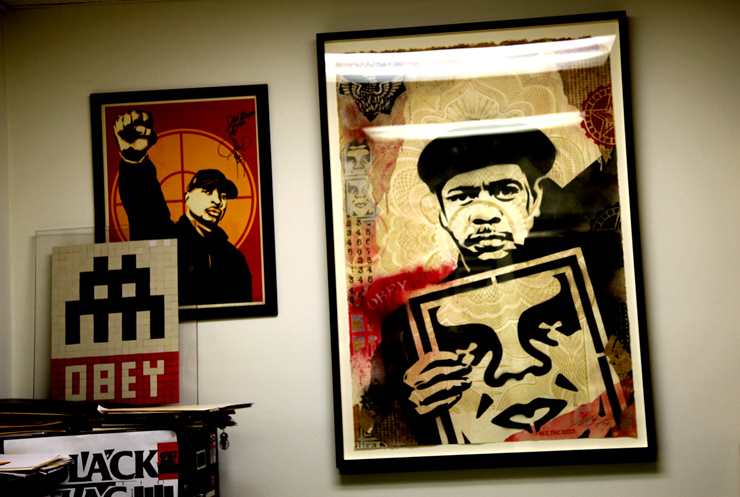
Shepard Fairey, Invader (photo © Jaime Rojo)
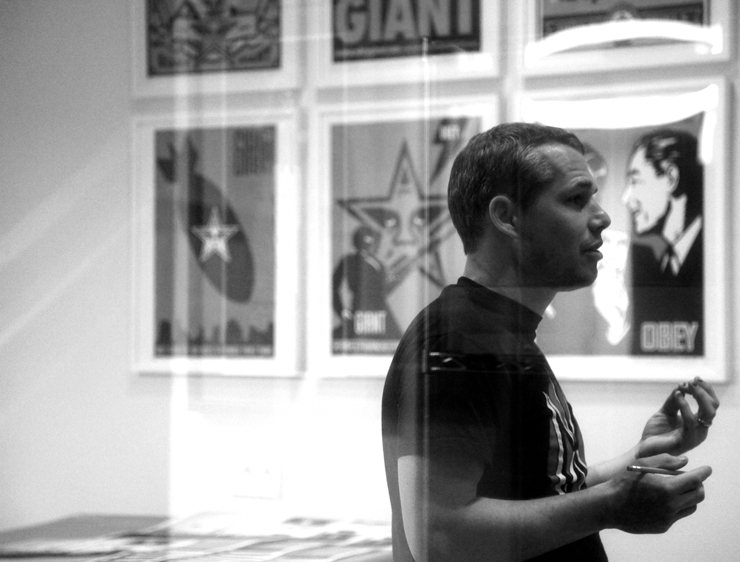
Shepard Fairey (photo © Jaime Rojo)
Brooklyn Street Art: Doors flew open.
Shepard Fairey: Yeah, knowing those moments in my own life, when someone talks about that for them – I’m like, “How could I not feed into that as much as possible?”
Brooklyn Street Art: I think that is very gratifying.
Shepard Fairey: Yeah it is, I mean ultimately I still enjoy this stuff. I don’t feel in any way like “Oh, I’m such a martyr, I’m doing this for the people” – The great aspect is that I enjoy doing the work and I enjoy going out and putting it up. The funny thing is I used to think about being a thorn in the side of the authorities when I was doing my thing. Now I’m actually a thorn in the side of the authorities and some of my own peers who think I’m too successful. This is really funny. I’m too “street” for the corporate, too corporate for the street.

God save the chandelier; A signed work by Jamie Reid; anarchist, situationist and designer of the covers for Sex Pistols records. (photo © Jaime Rojo)
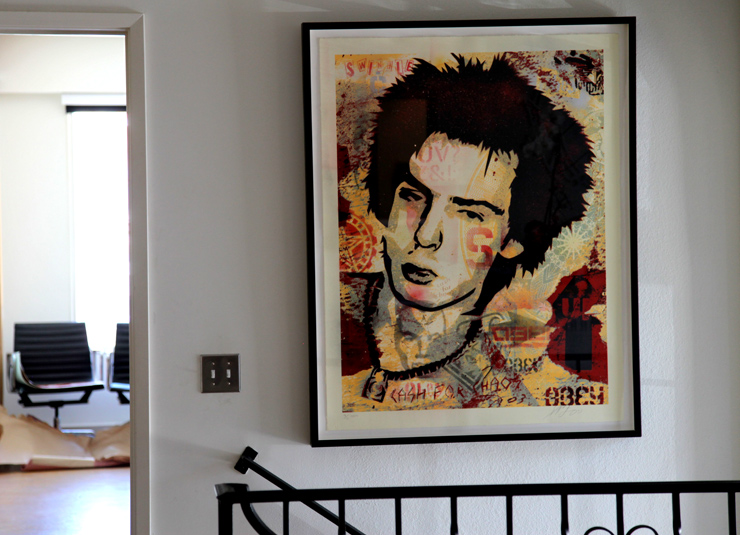
Shepard Fairey (photo © Jaime Rojo)
Brooklyn Street Art: It’s a funny place to inhabit.
Shepard Fairey: I guess it is about understanding the world we live in and learning how to navigate in a way that you get as much good and as little bad as you can but not just being unrealistic and an isolationist because you refuse to engage something that inherently is going to be problematic. There are a lot of people who do this – they’re like, “oh I’m not part of that” – BUT you go to the store and buy stuff that’s made by evil corporations, you’re wearing Nikes, – by saying that you are not part of it you actually are just being complicit anyway.
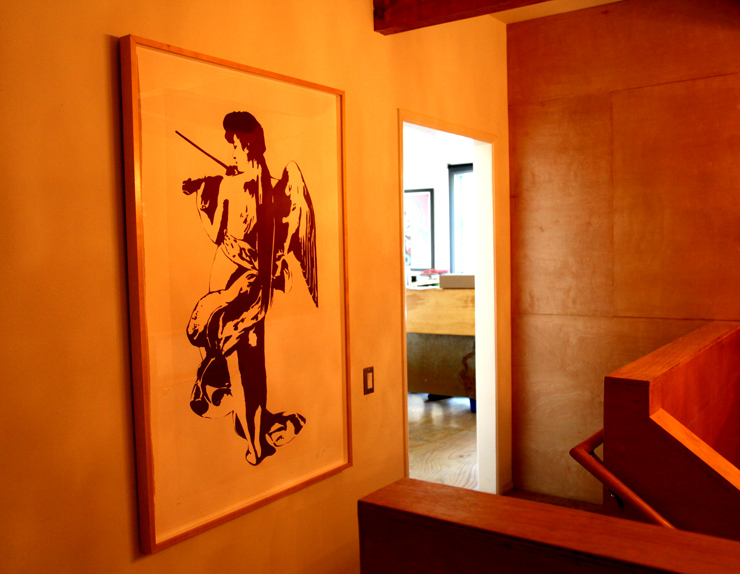
Blek le Rat at Shepard Fairey Studio (photo © Jaime Rojo)
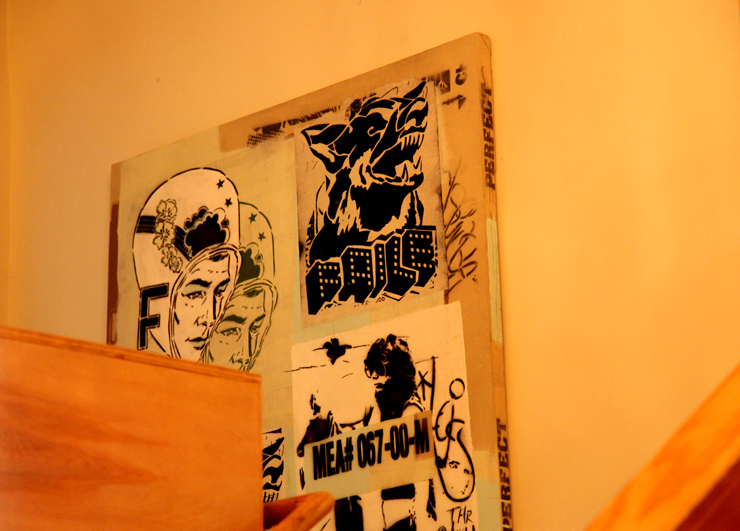
Faile (detail) at Shepard Fairey Studio (photo © Jaime Rojo)
Brooklyn Street Art: You’re actually not helping in any way to bring it forward in any way at all. You’re dropping out.
Shepard Fairey: Exactly. And…
Brooklyn Street Art: You’re an expert critic today, but your not doing anything constructive.
Shepard Fairey: And my whole thing is that if there is a really great net positive in doing something that you might have to engage with a company but they facilitate a project that ends up really benefitting the kind of culture and art that you believe in, to me it was worth having to put a logo on a wall in the corner of an art show. But there are some people who, I think in a lot of ways in an effort to justify their own complacency, say “Oh that’s not cool because of that. The whole thing is ruined”. So now they feel much more justified just sort of sitting around hating on everything. And you know, not being able to have the chip on the shoulder is something that a lot of people from the Street Art world don’t want. They want to remain persecuted and angry. It’s something that feeds them.
You know that is something that has driven me in a lot of ways – frustration, anger. And there are people who I think are very self destructive in how they deal with those emotions. But now I feel like I’ve just channeled that in much more constructive ways.
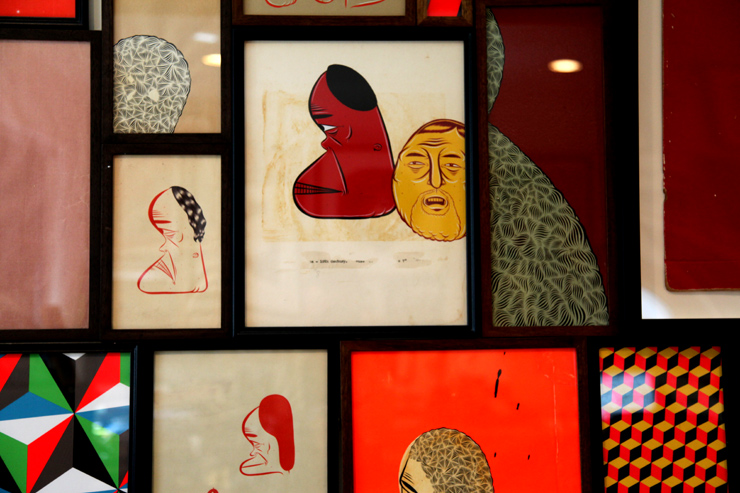
Barry McGee at Shepard Fairey Studio (photo © Jaime Rojo)
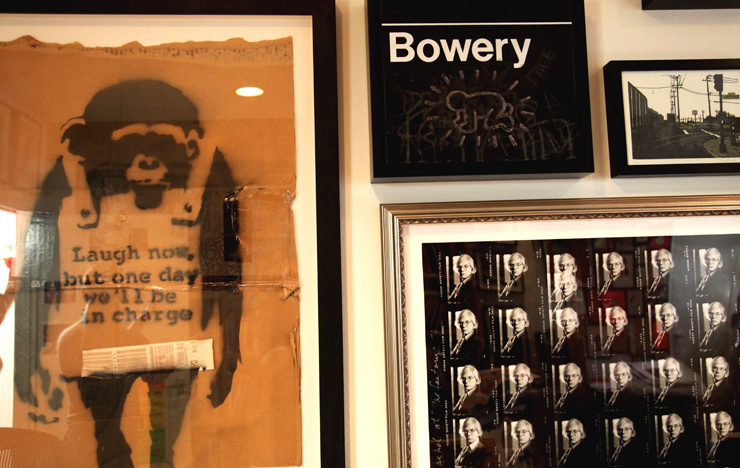
Banksy and Keith Hering at Shepard Fairey Studio (photo © Jaime Rojo)

Shepard’s collection of signed album covers at the studio (photo © Jaime Rojo)
This article was originally posted on The Huffington Post
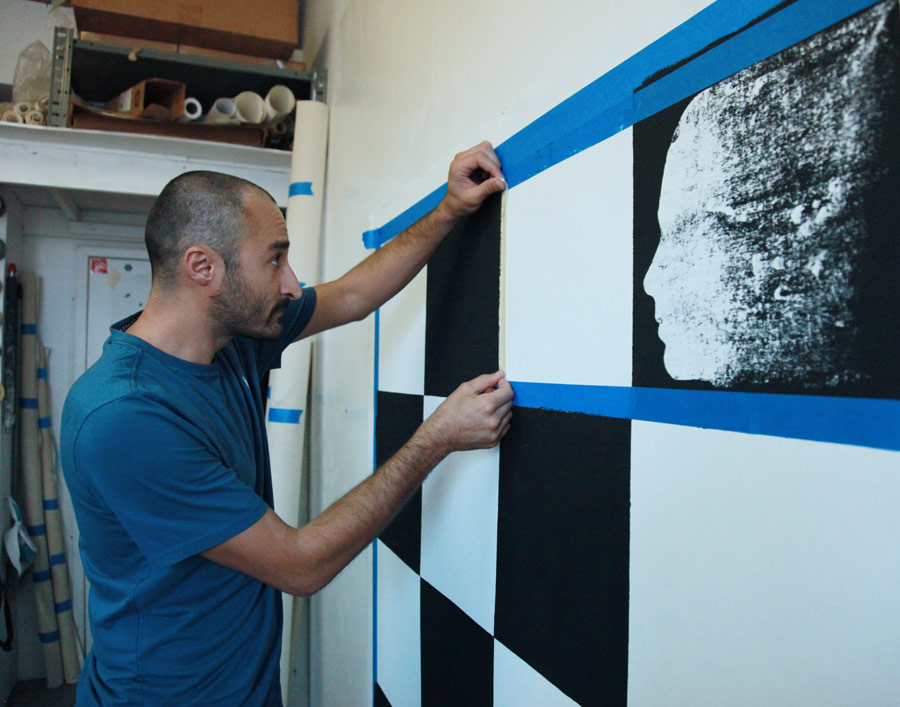
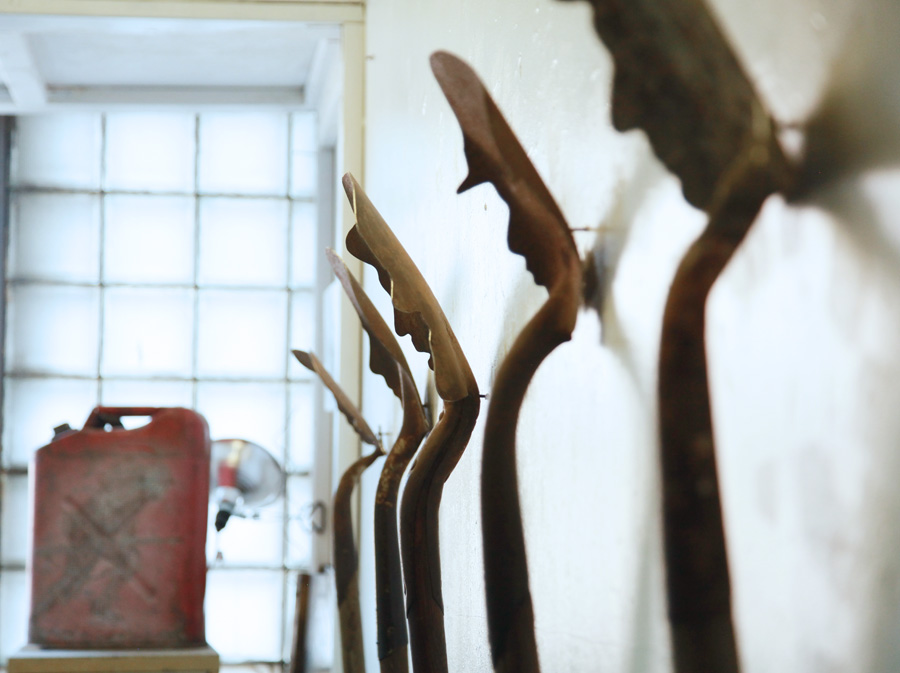
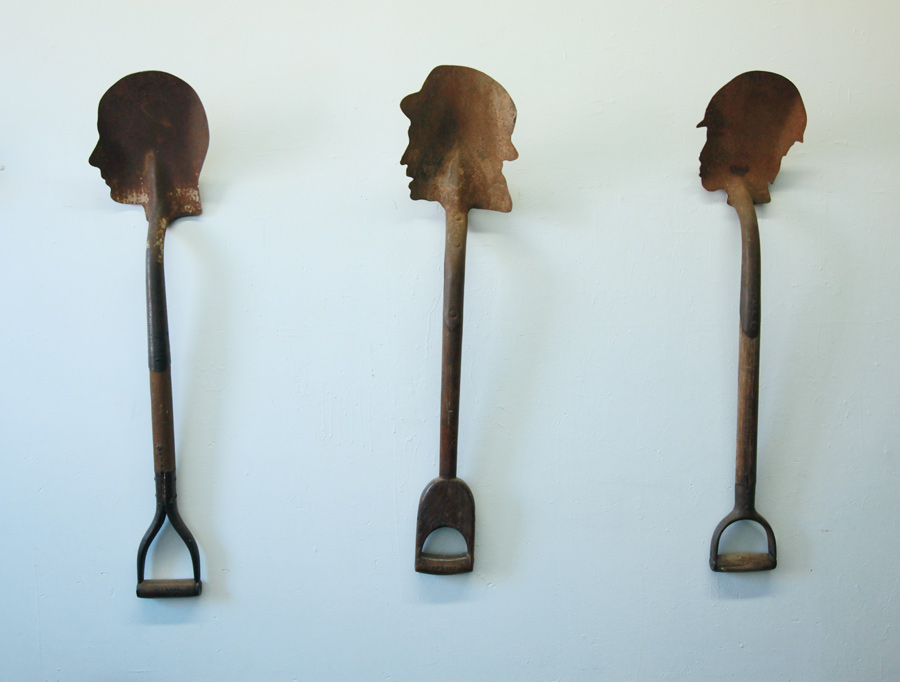
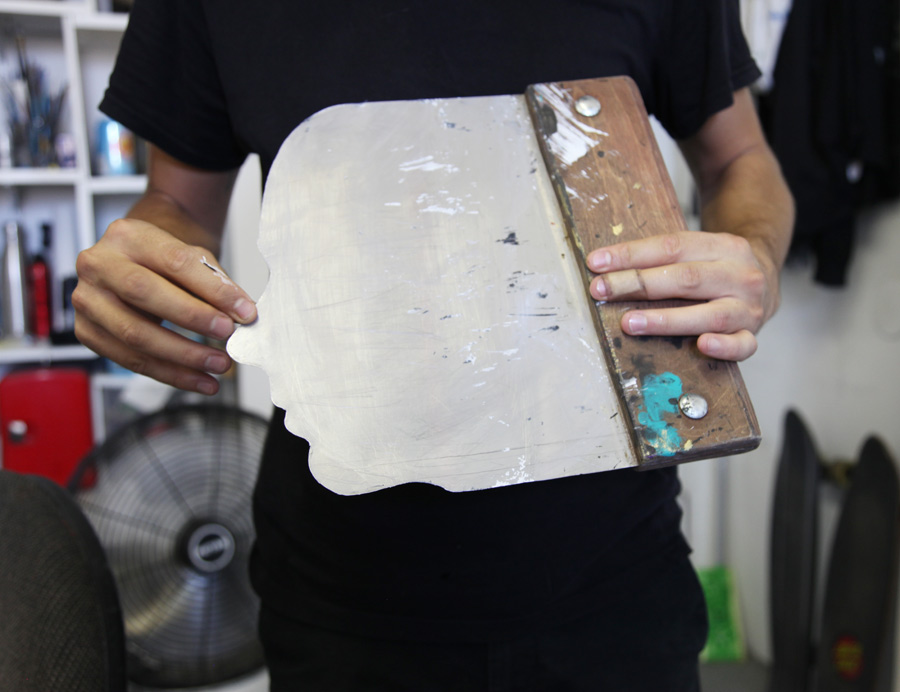
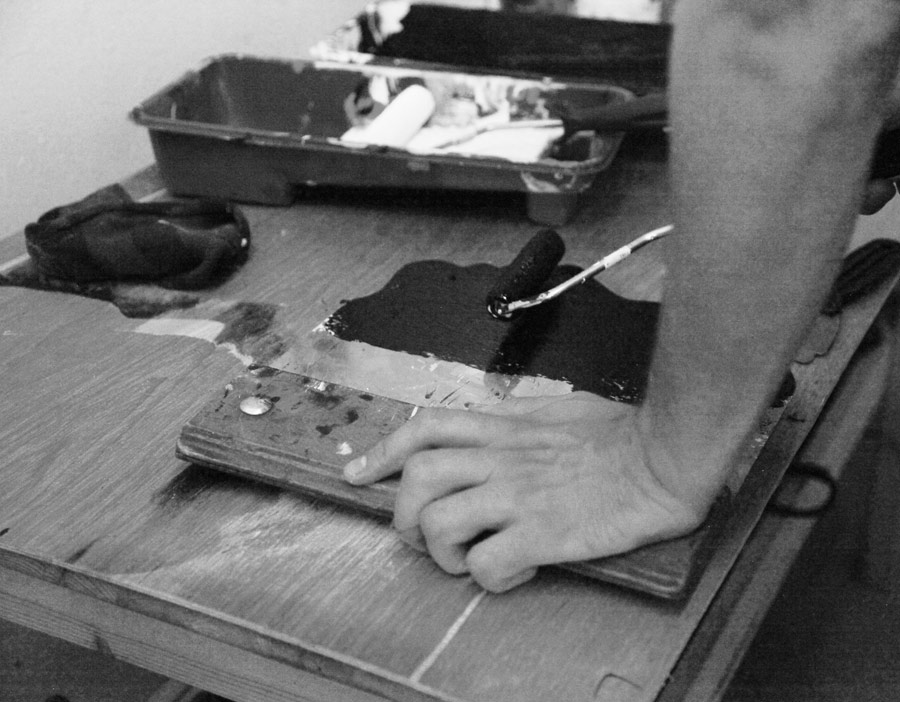
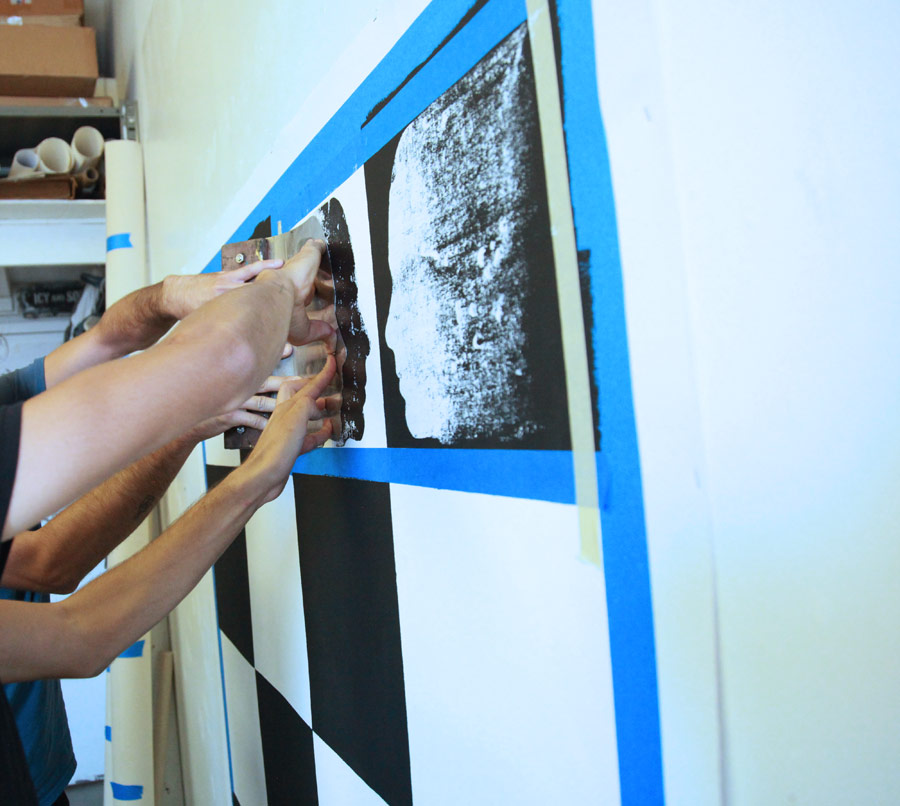
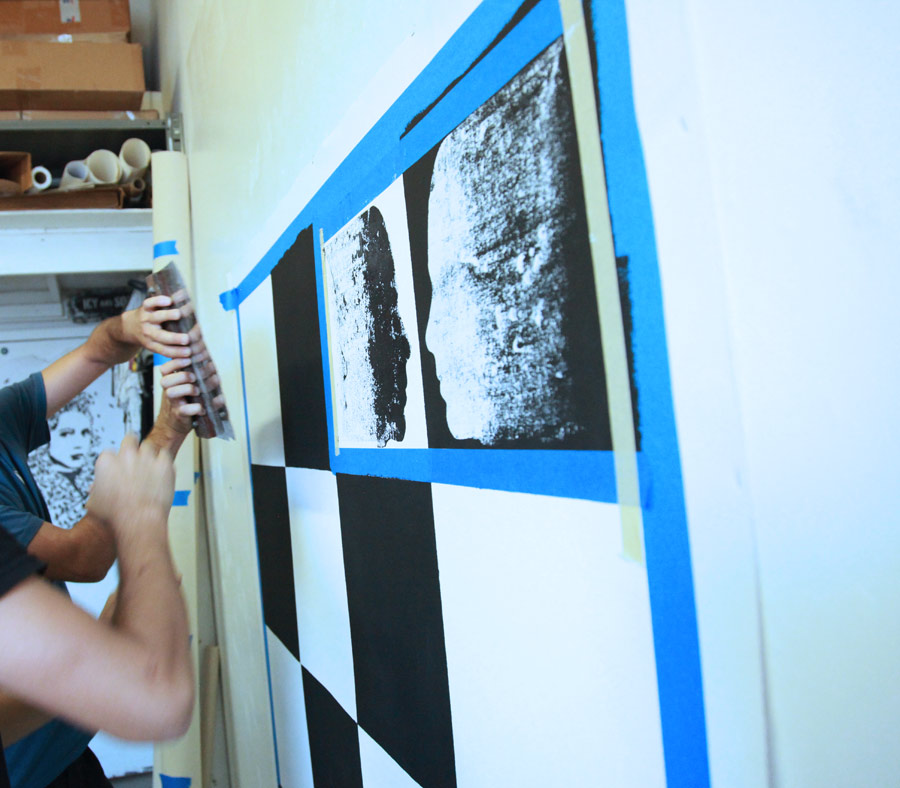
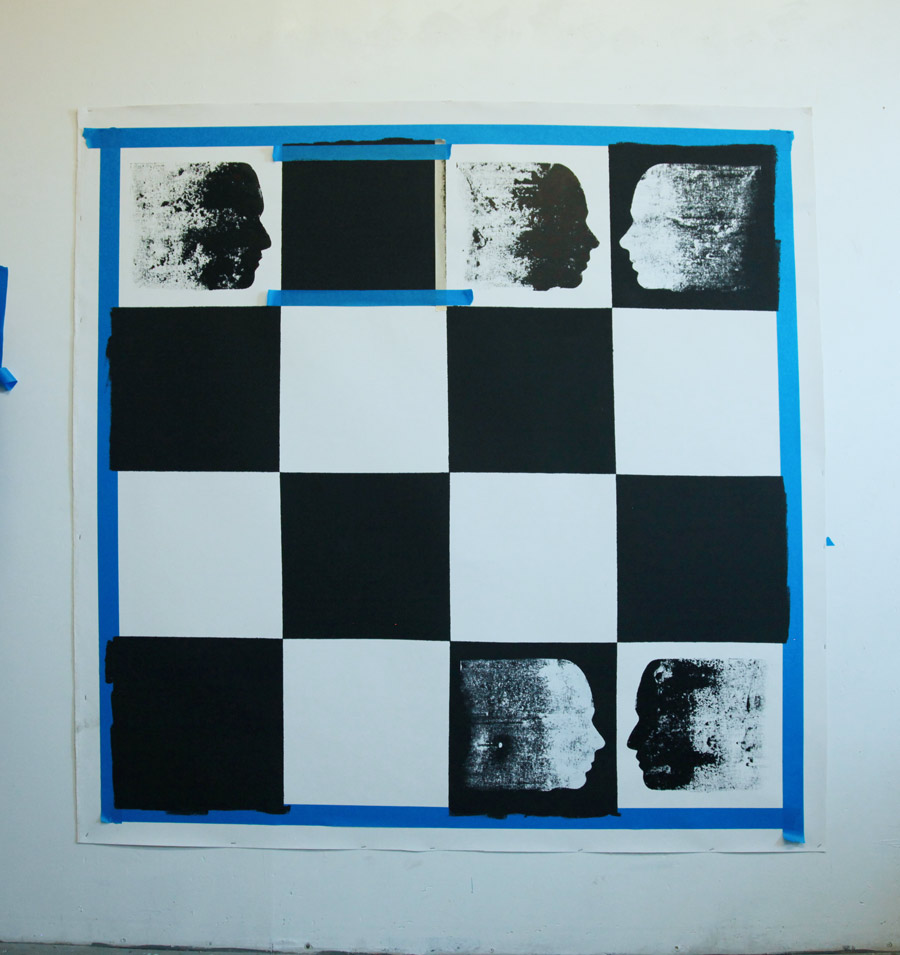
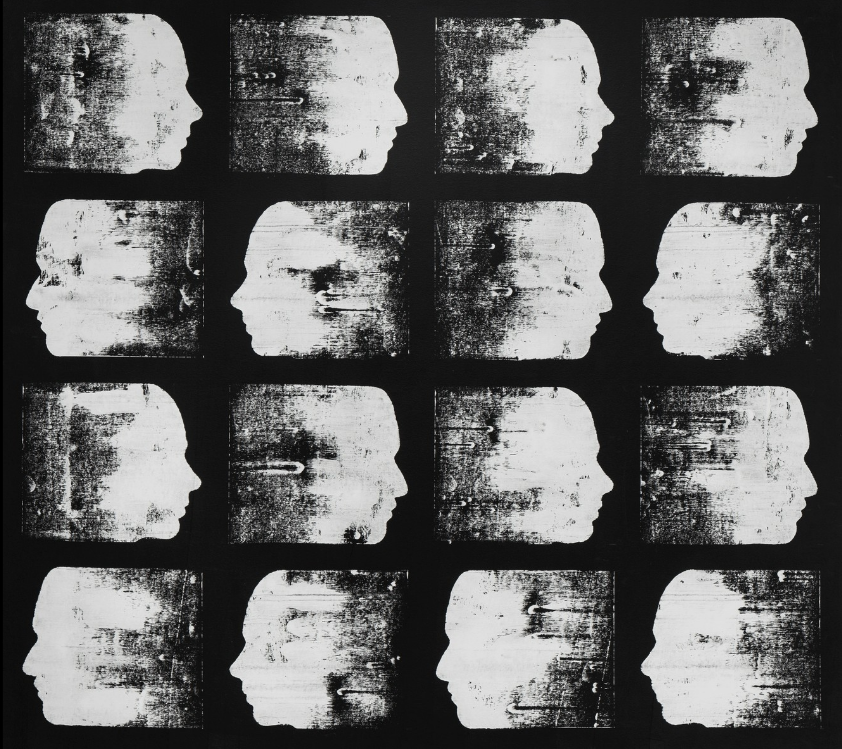
 BROOKLYN STREET ART LOVES YOU MORE EVERY DAY
BROOKLYN STREET ART LOVES YOU MORE EVERY DAY